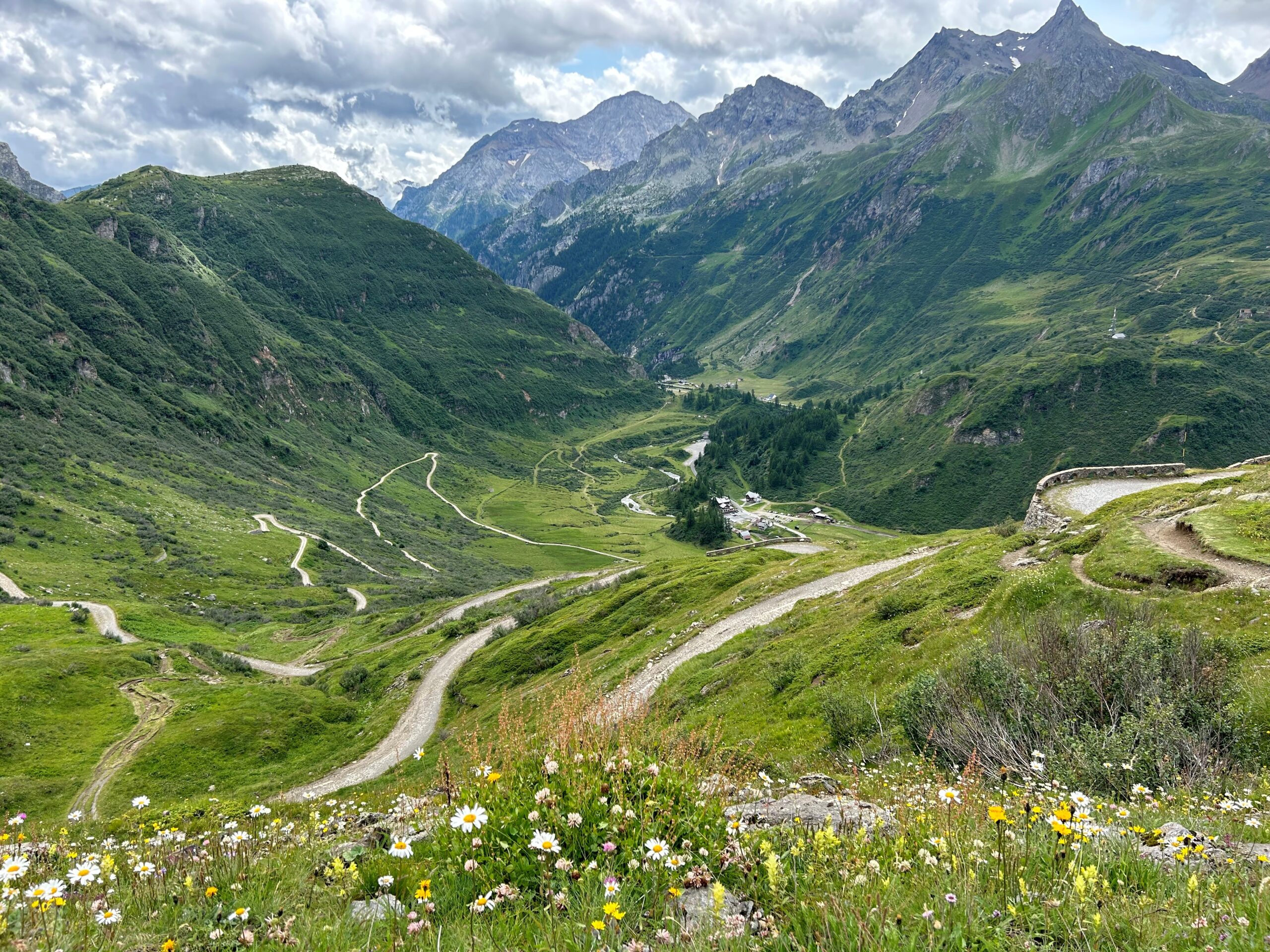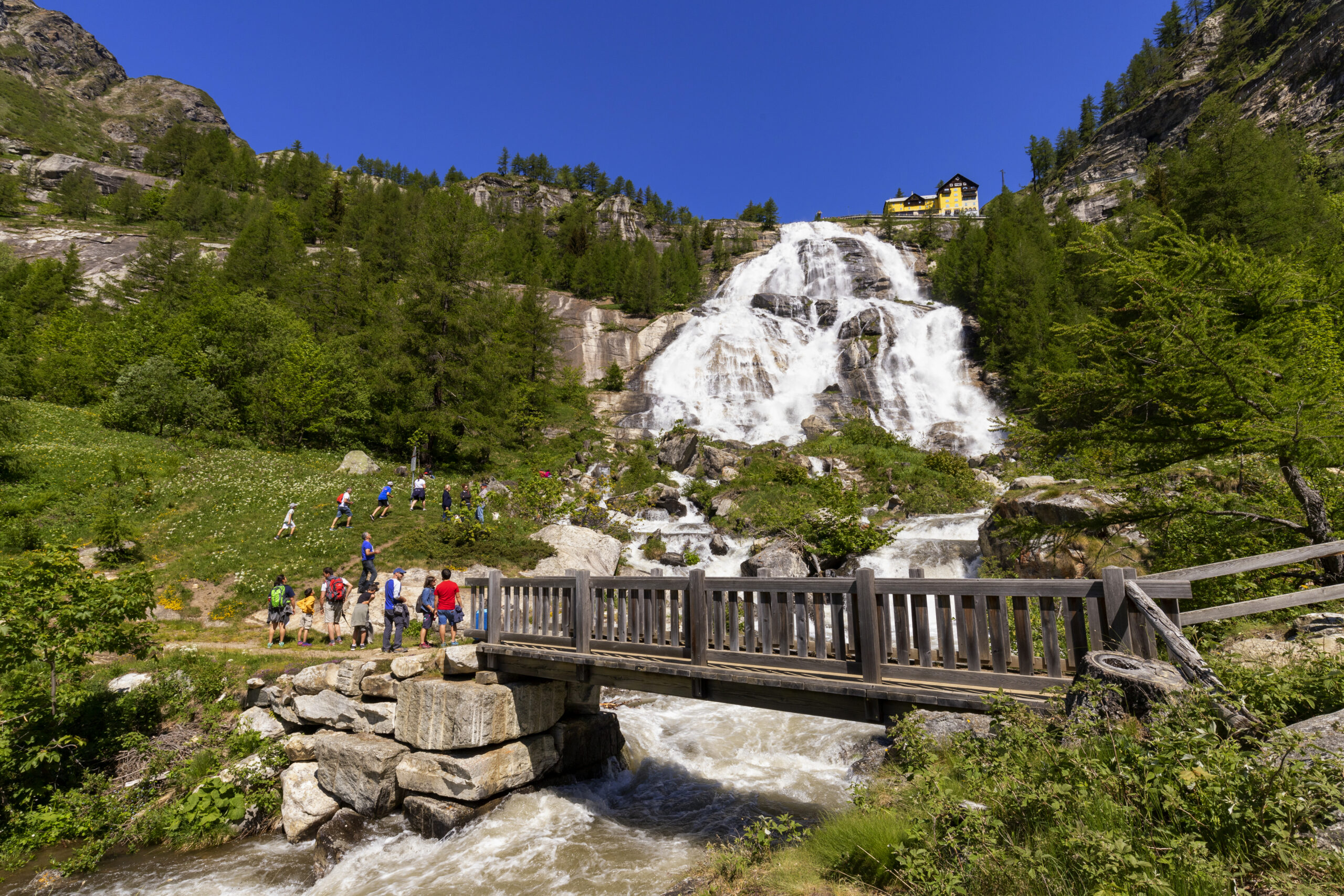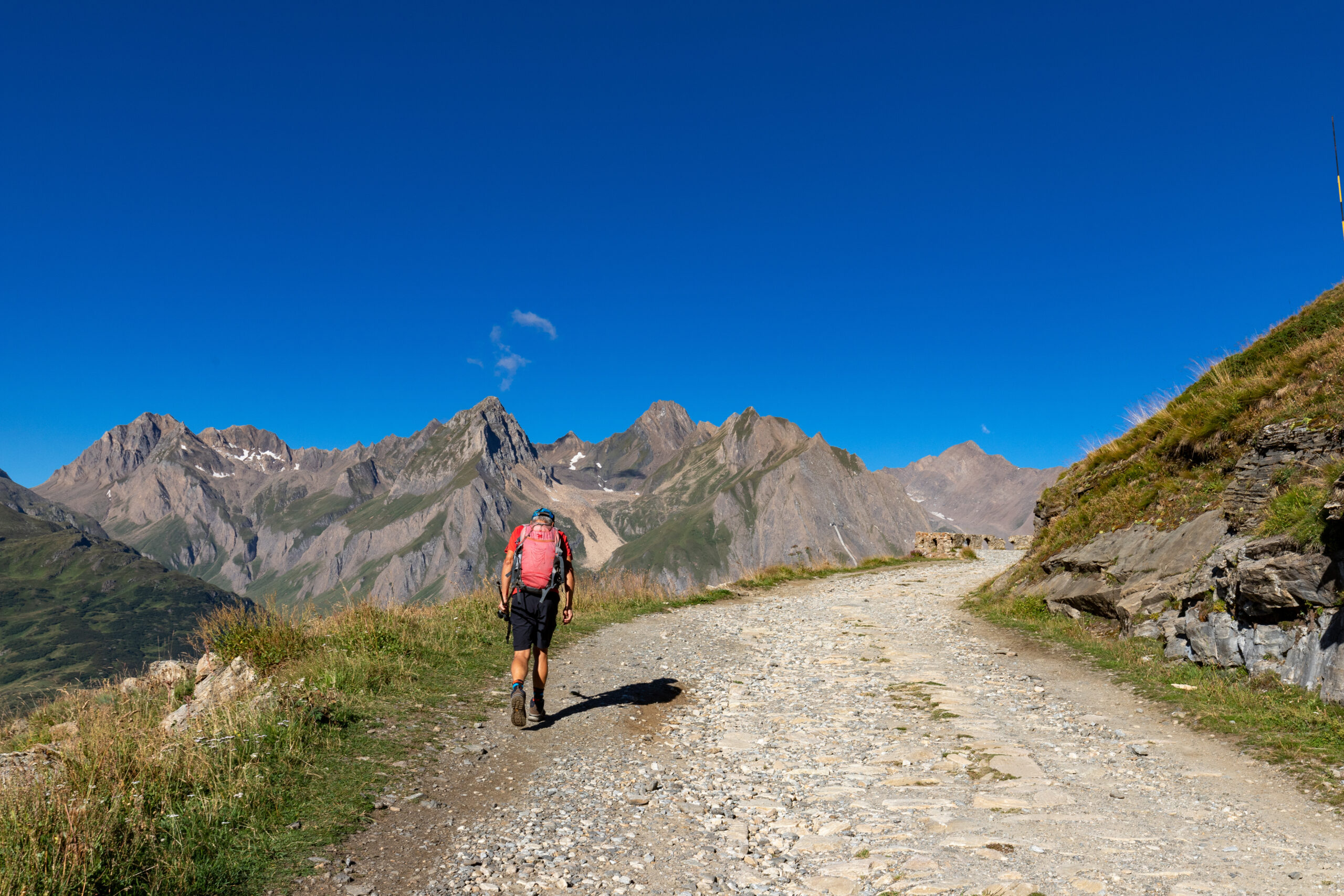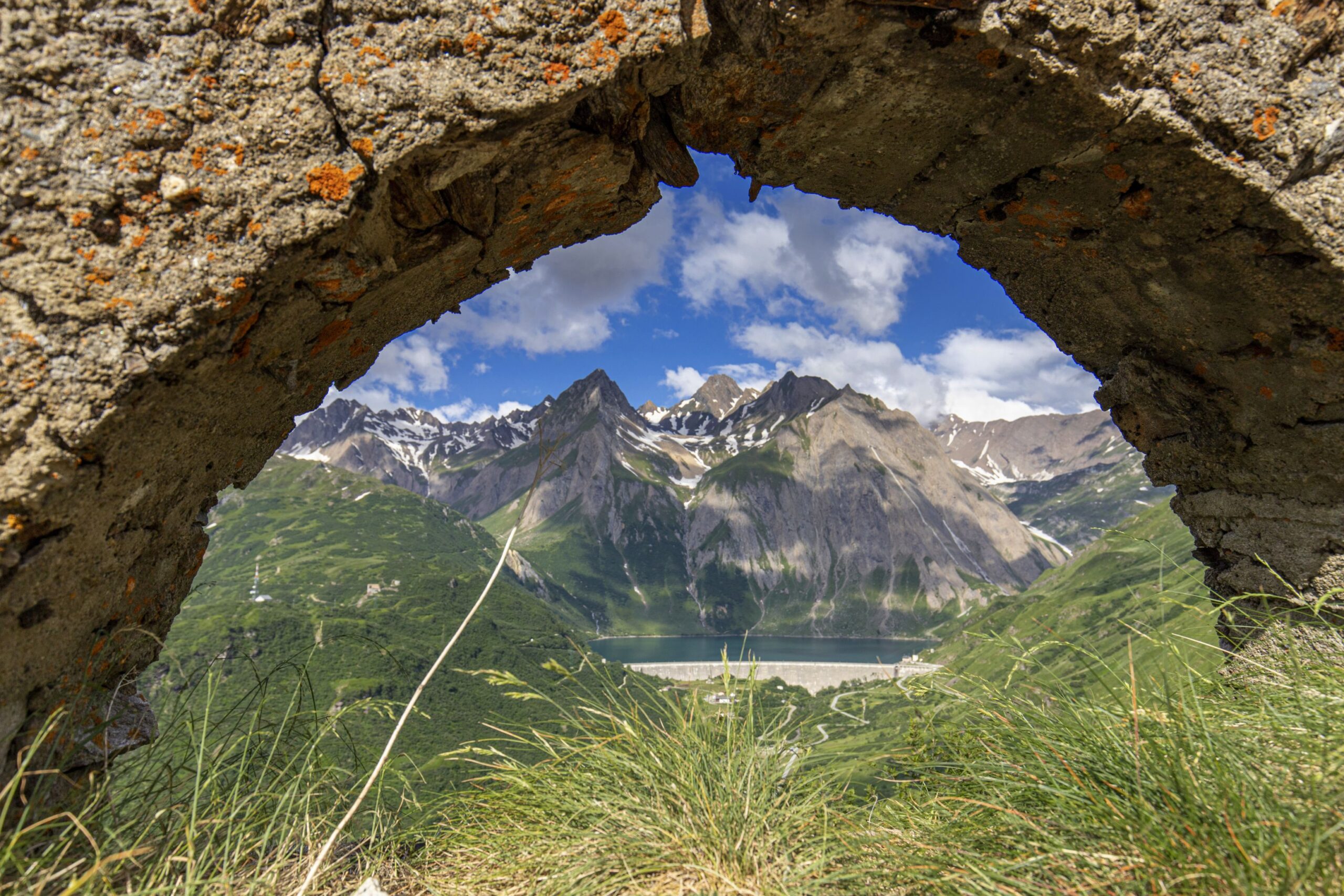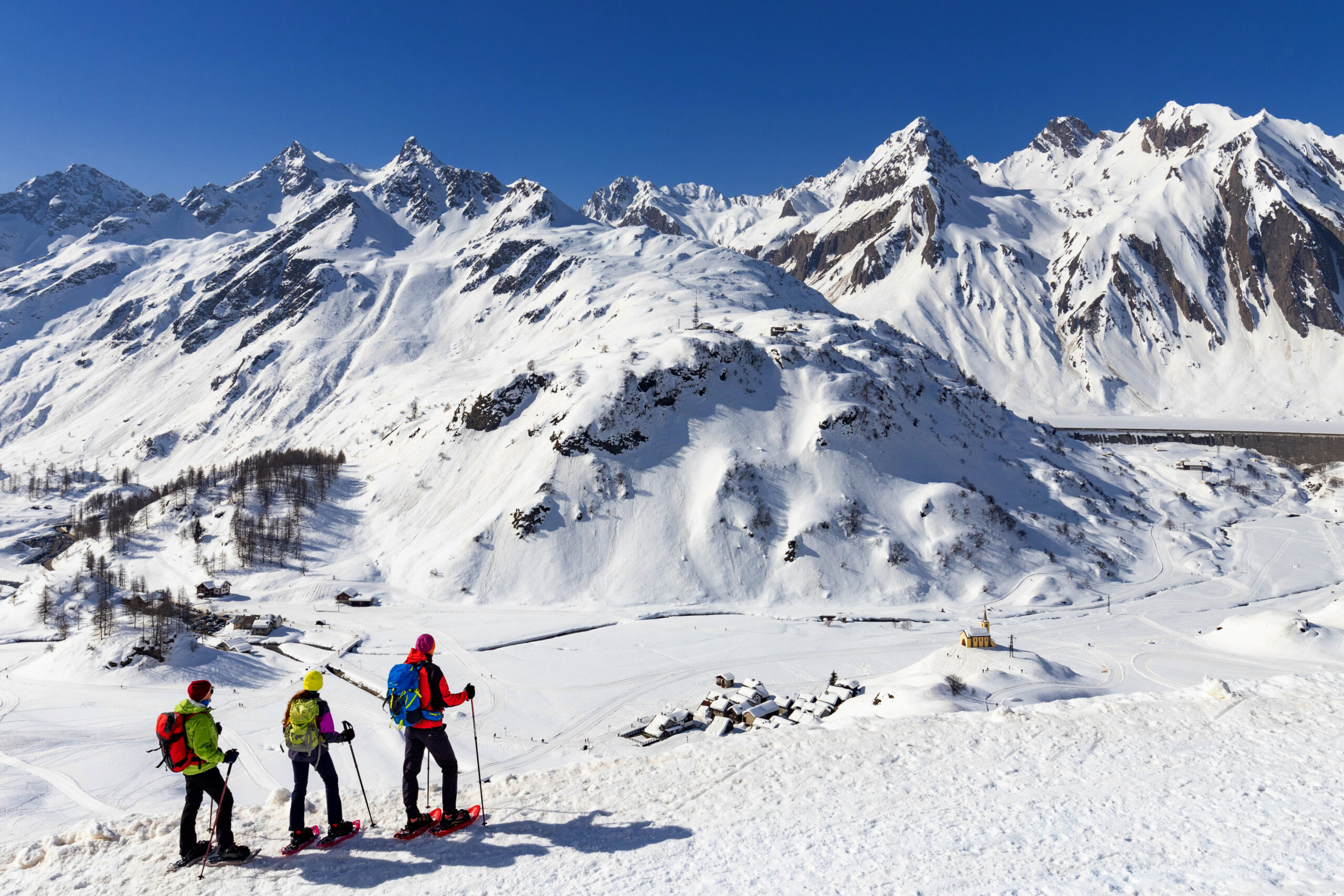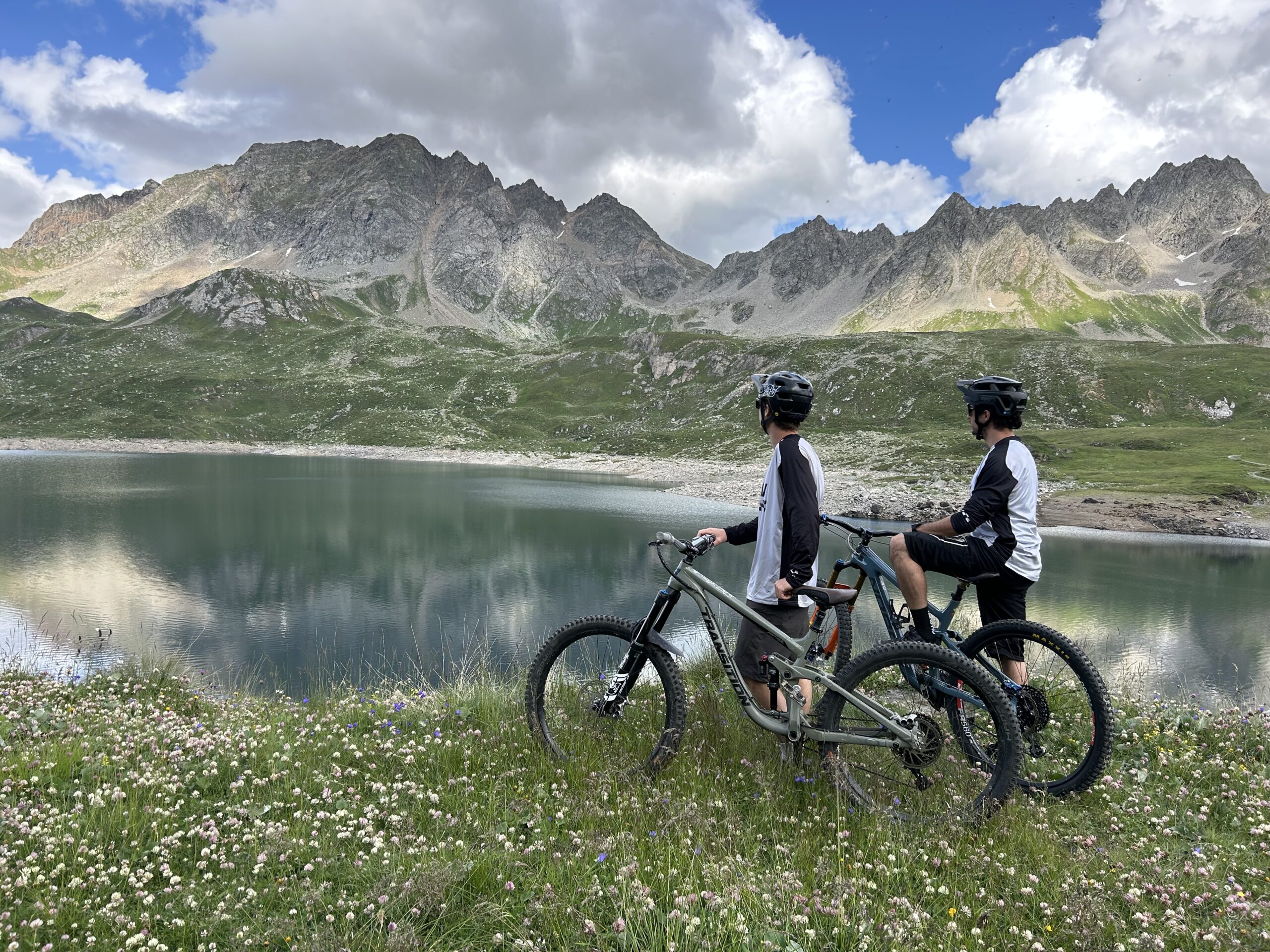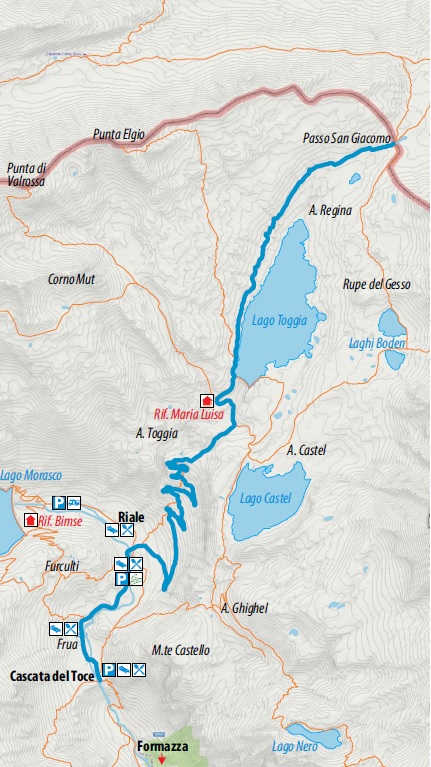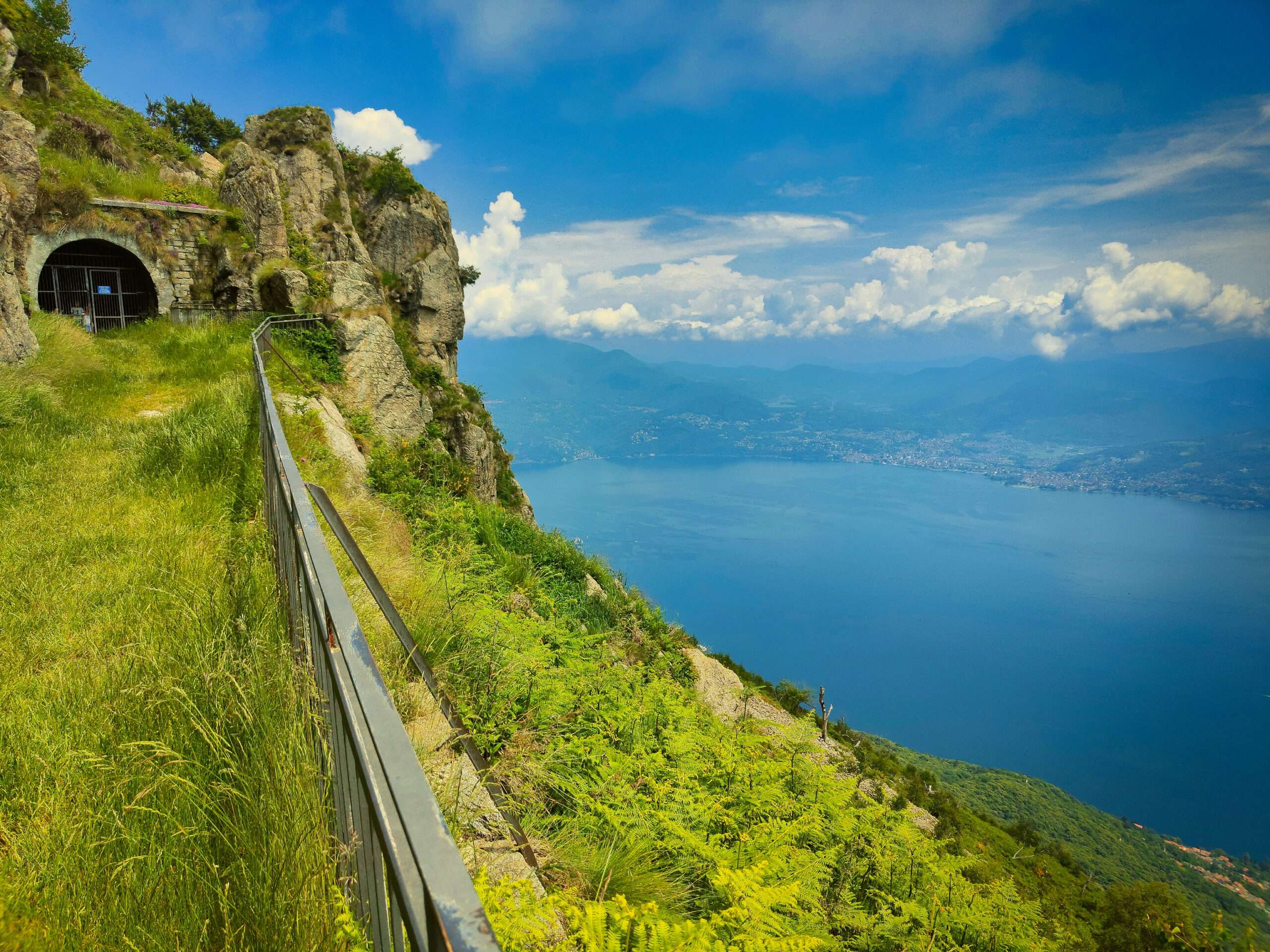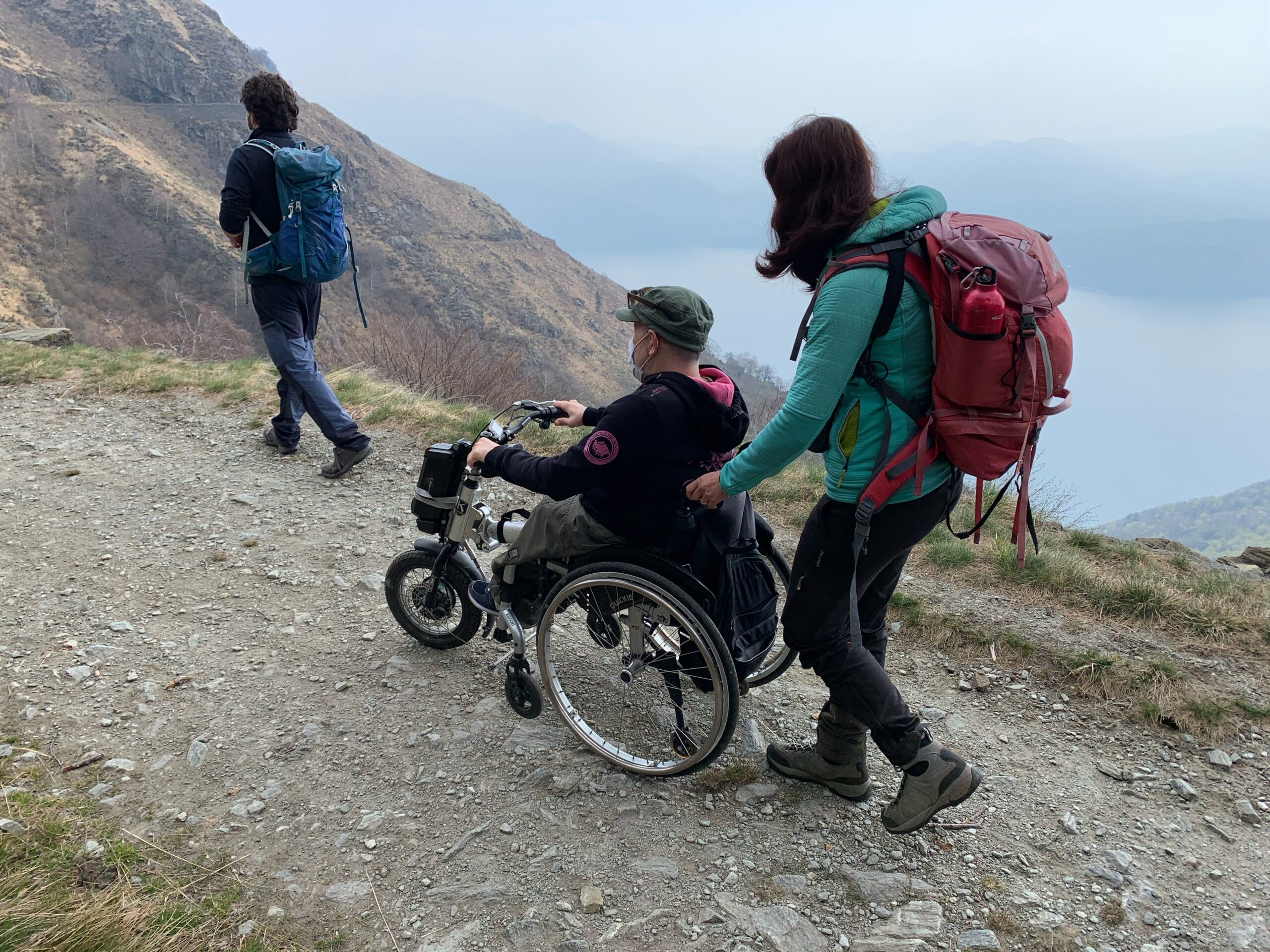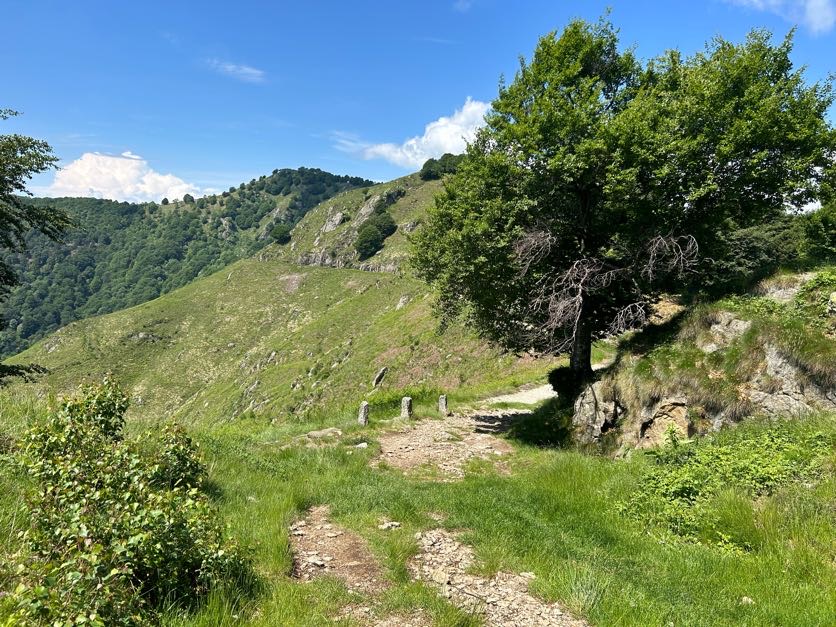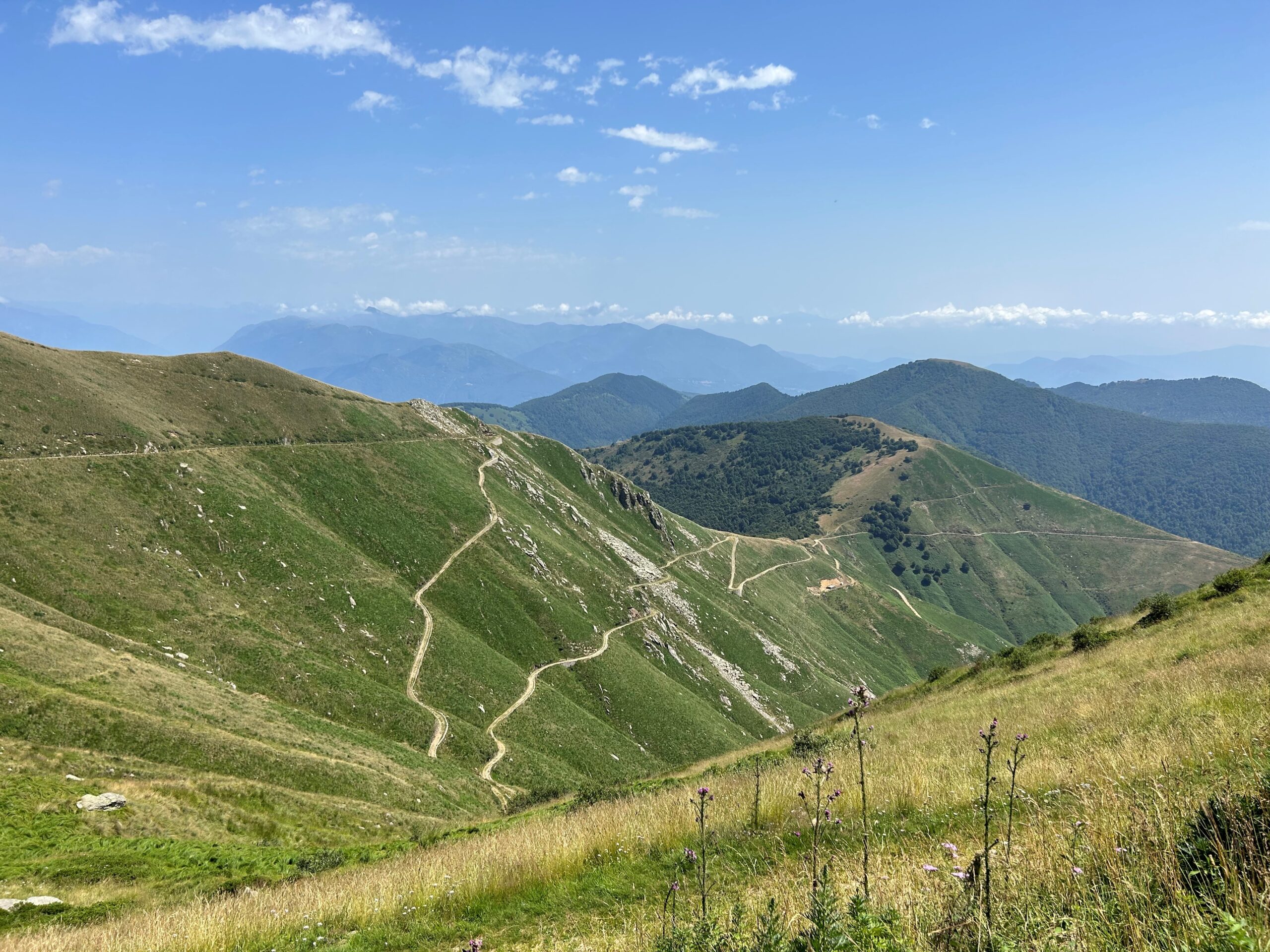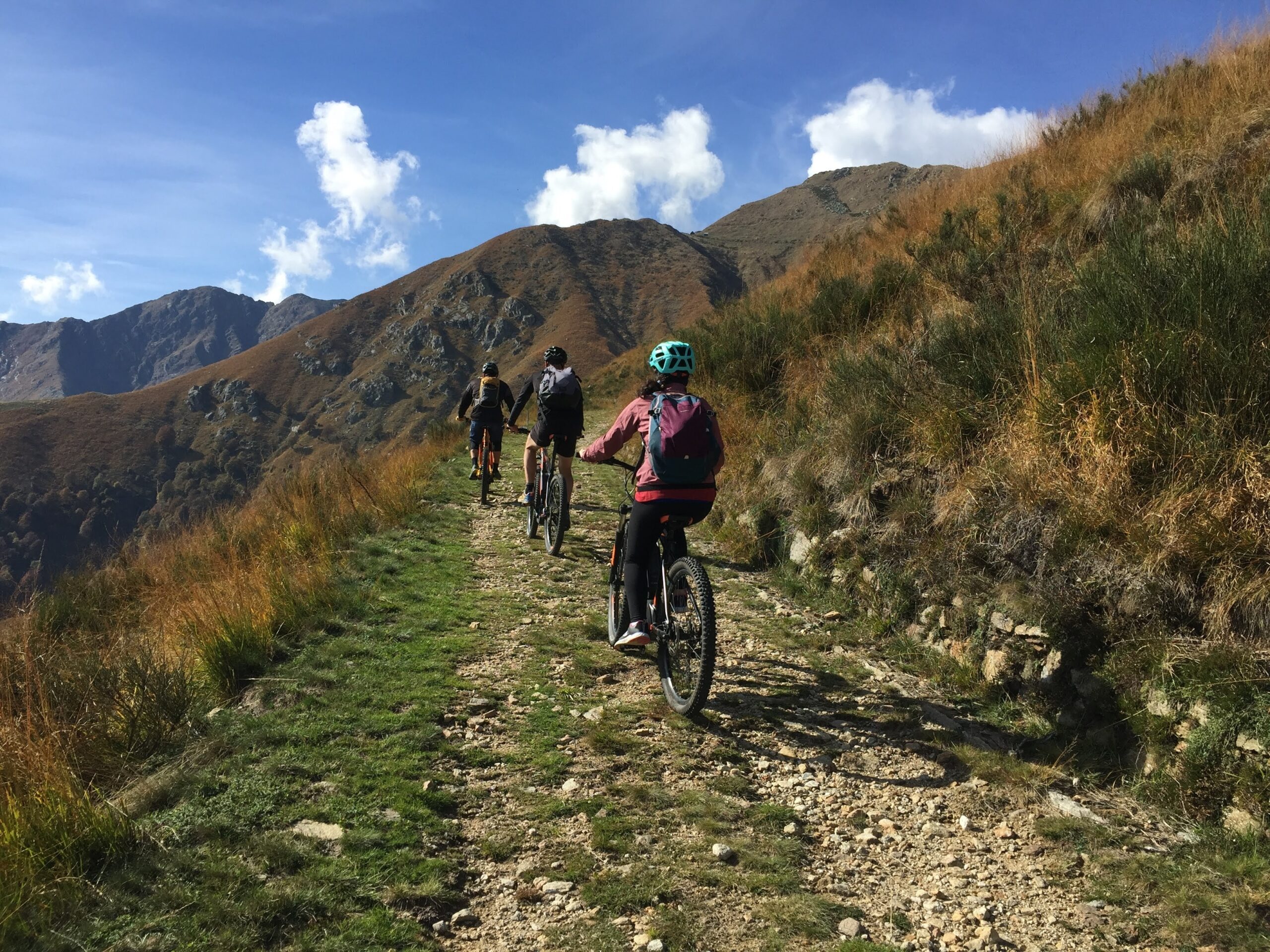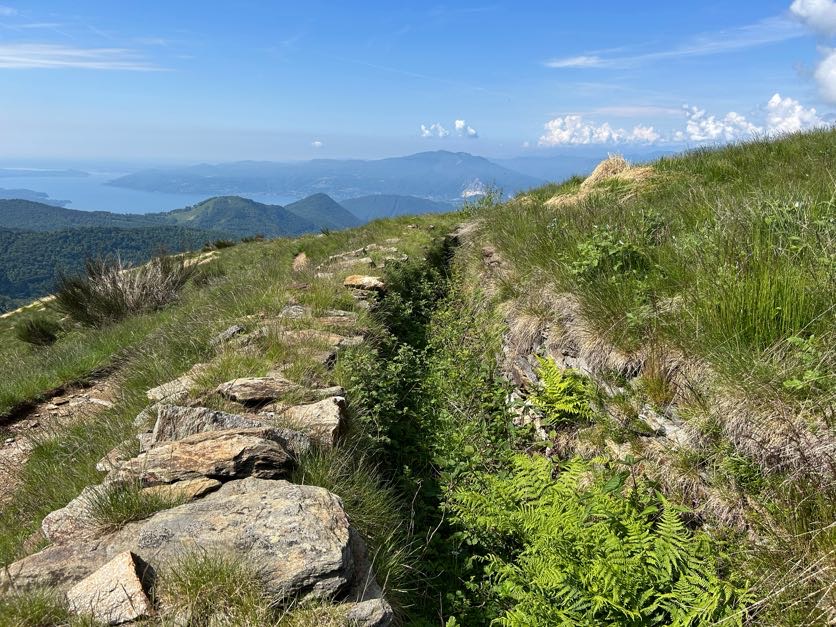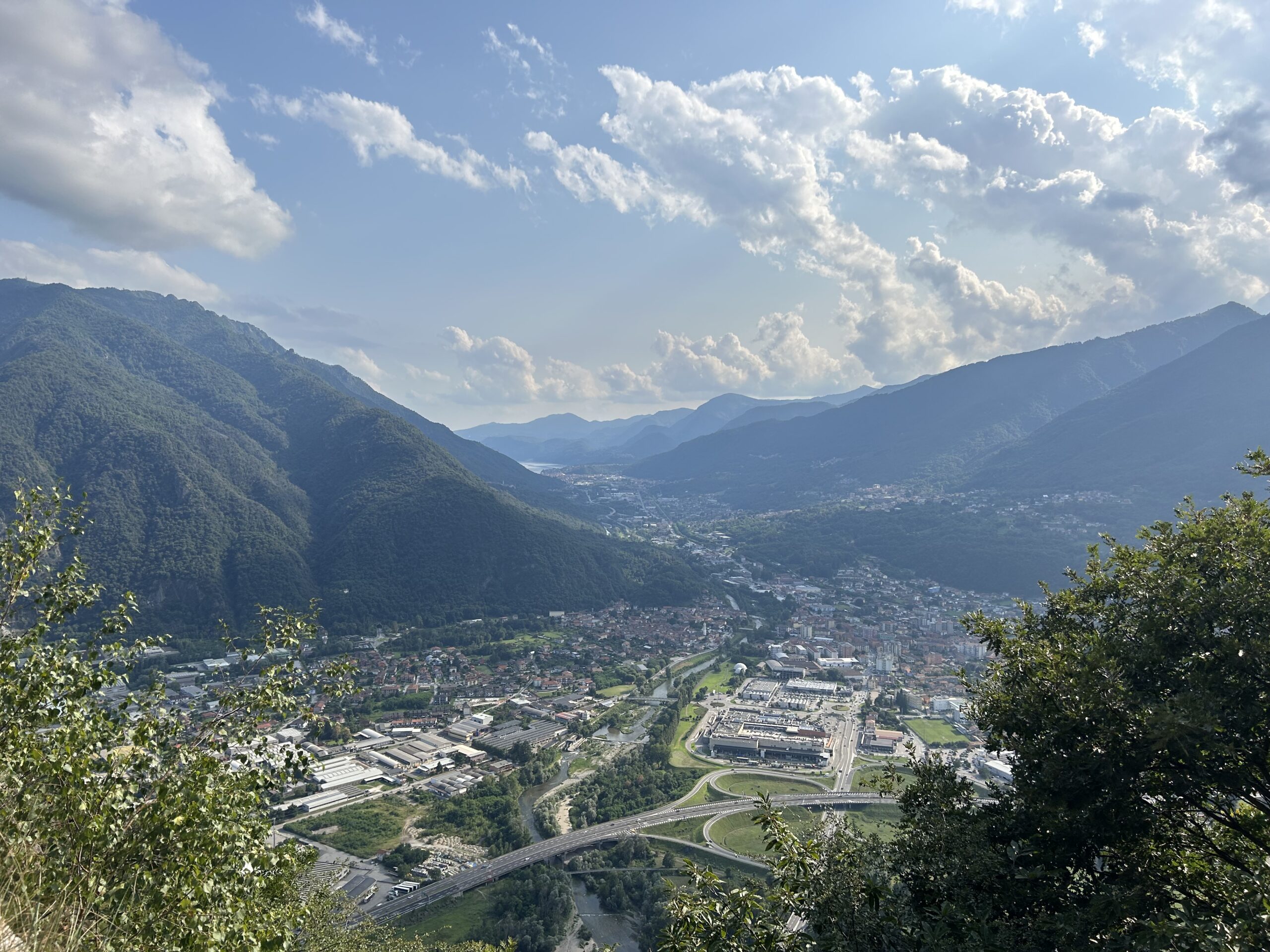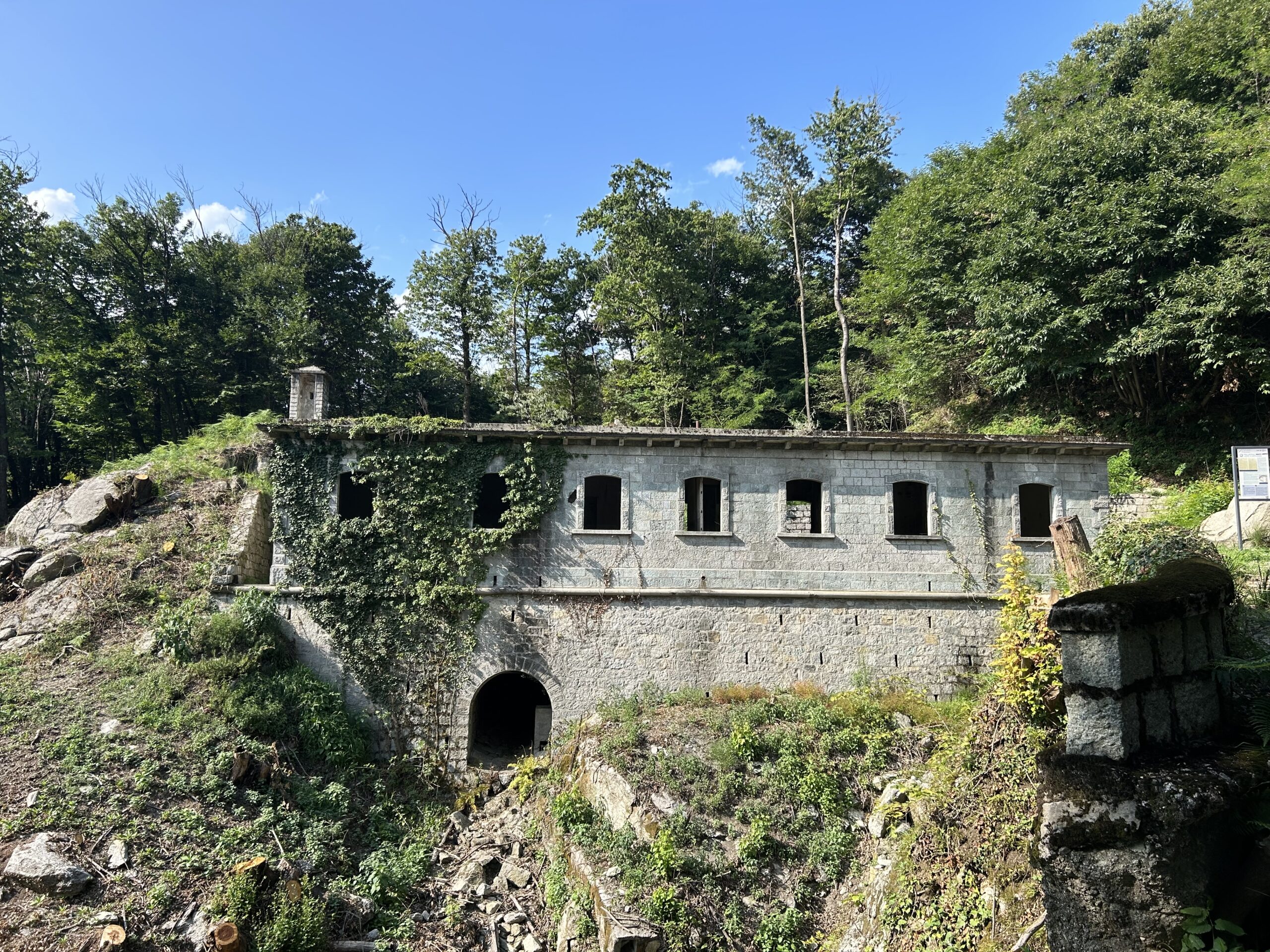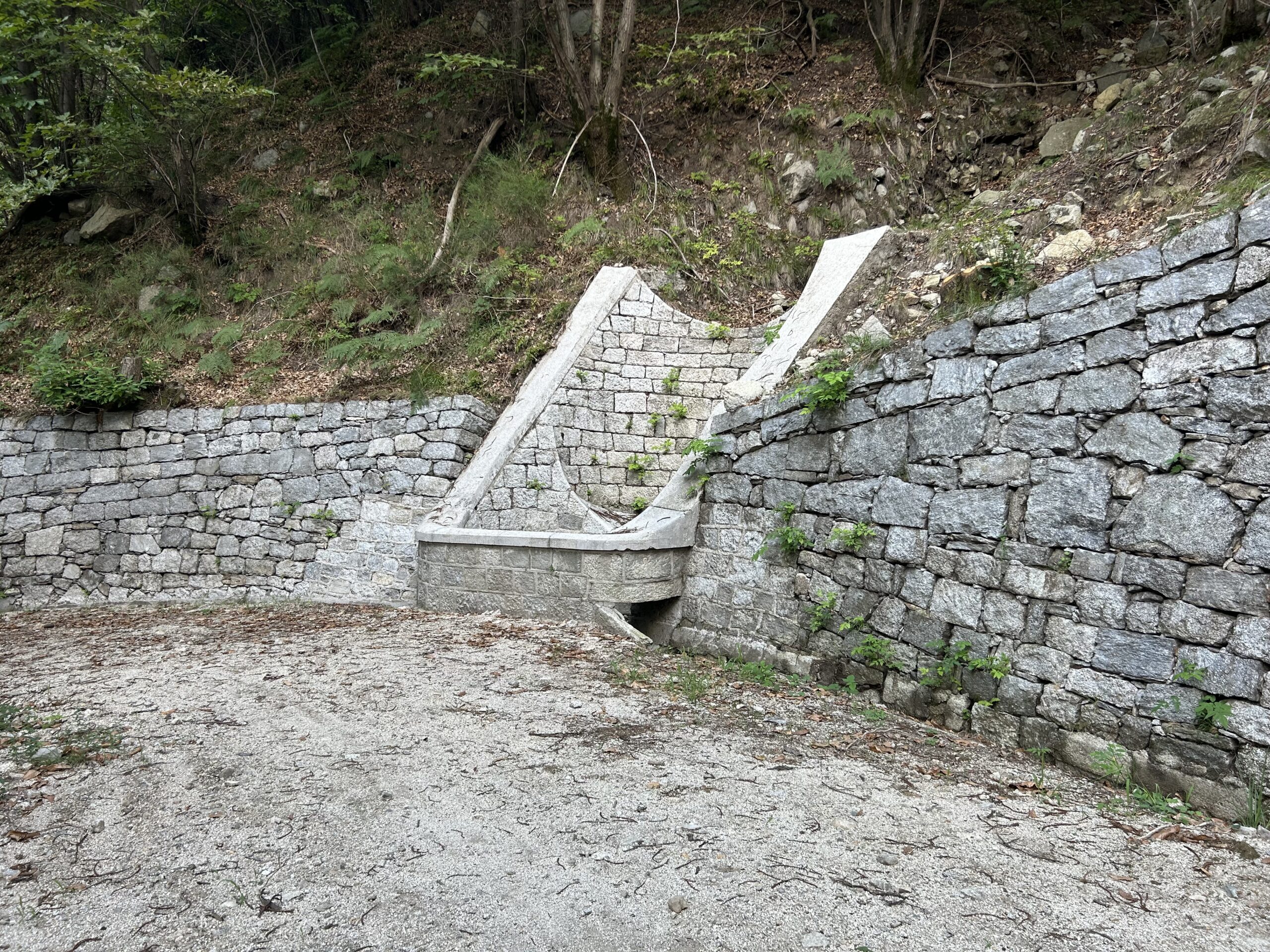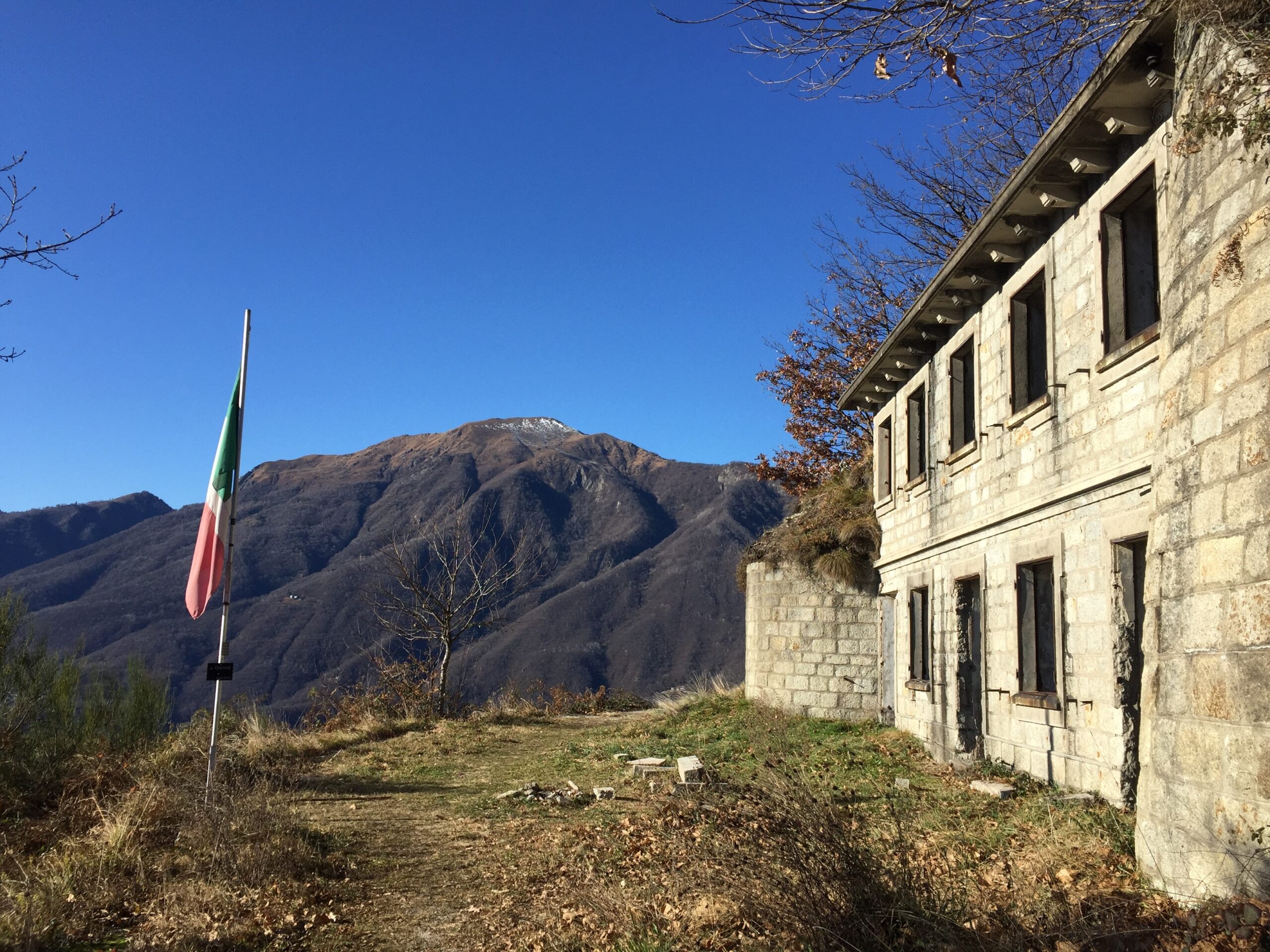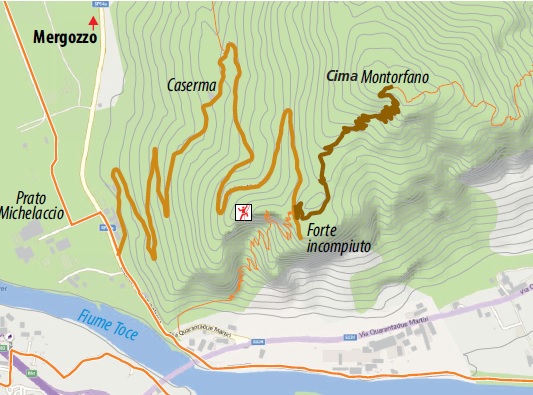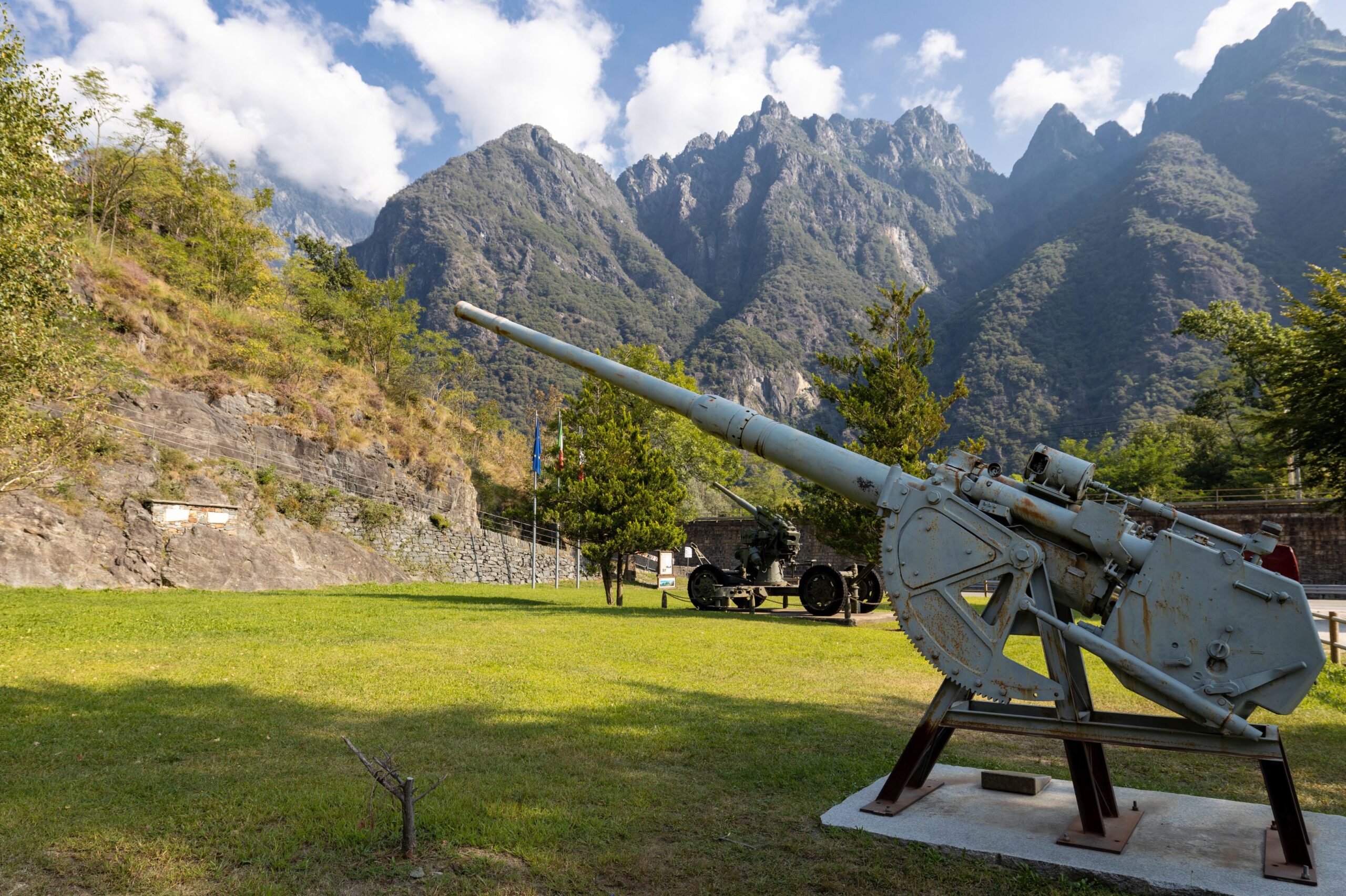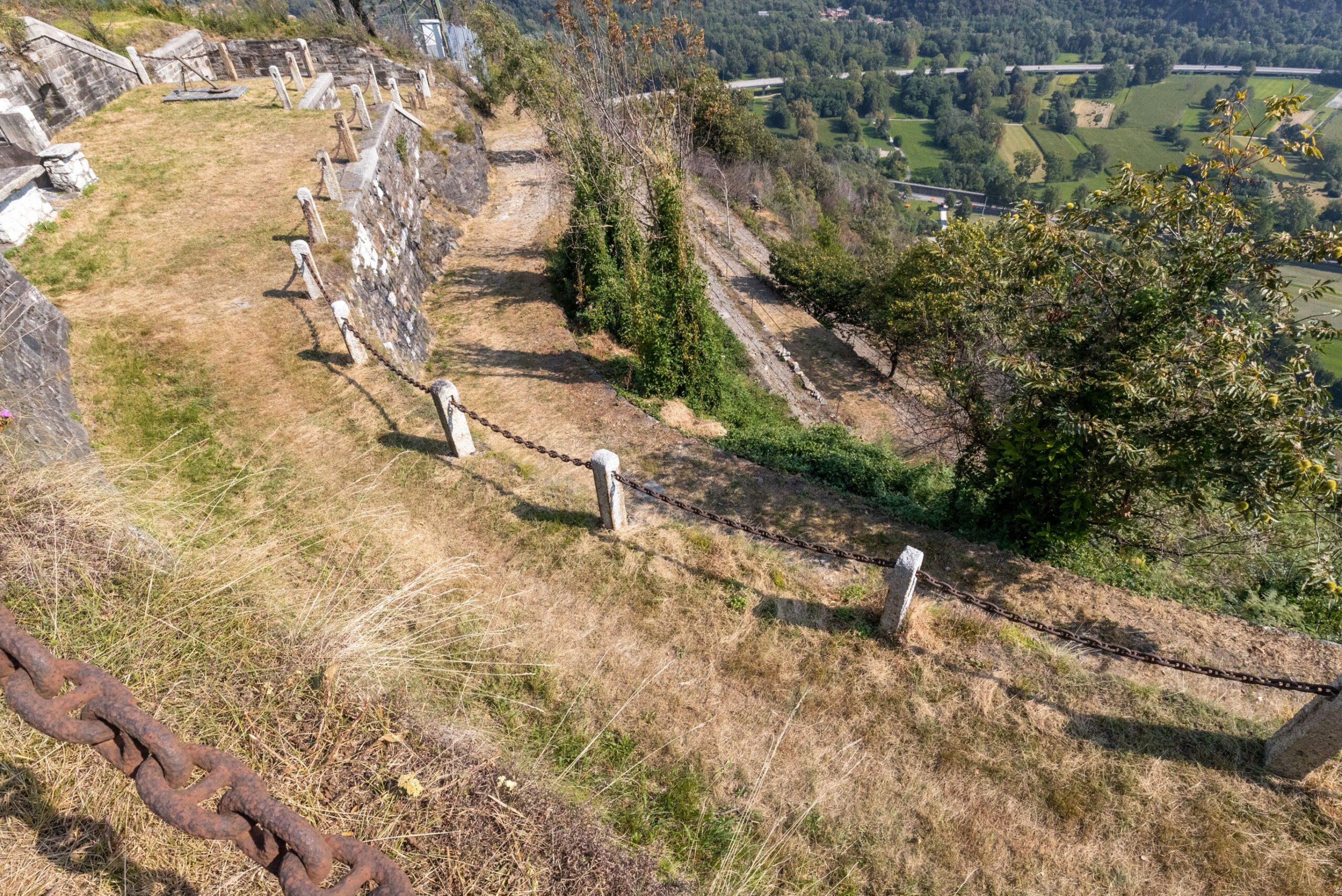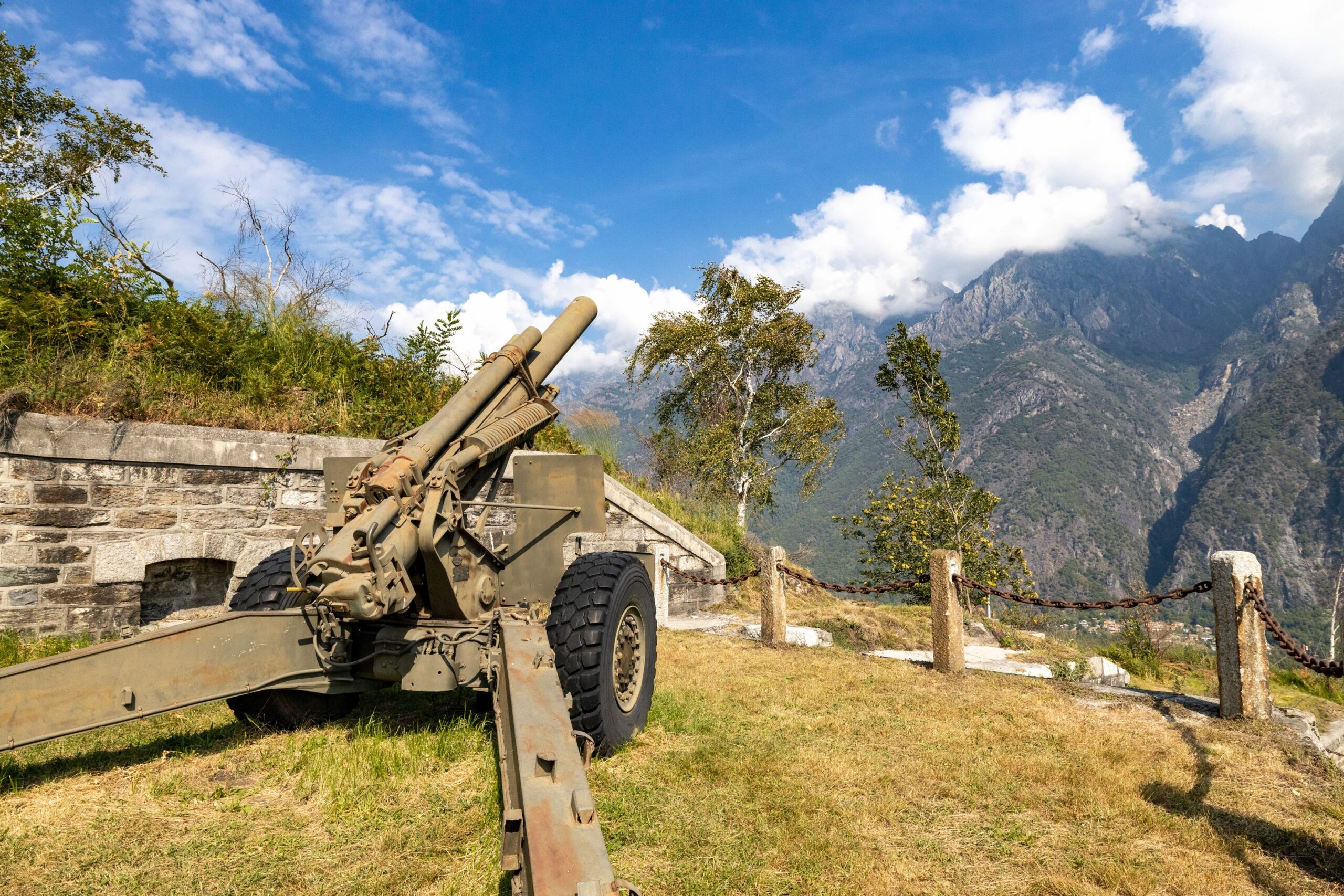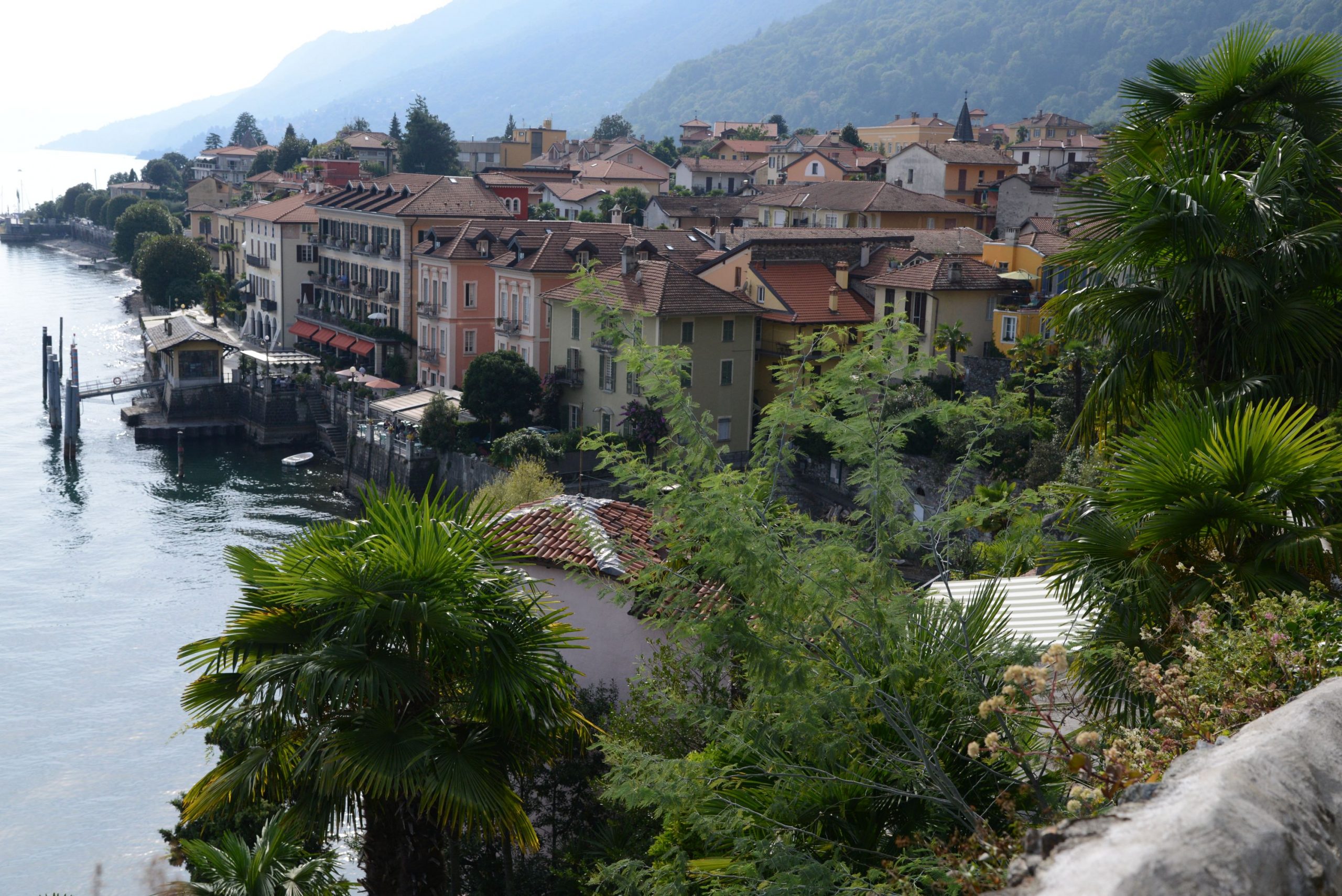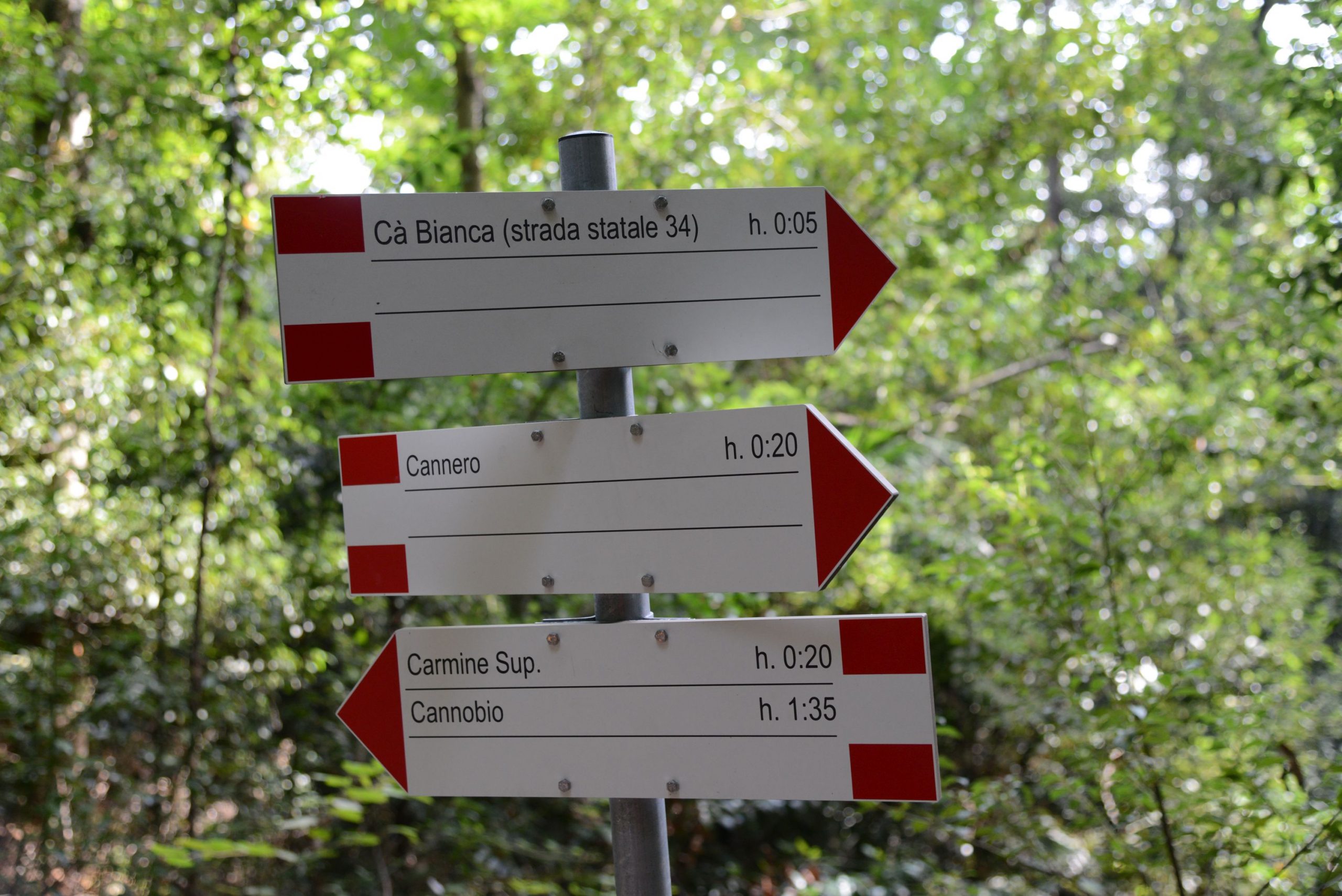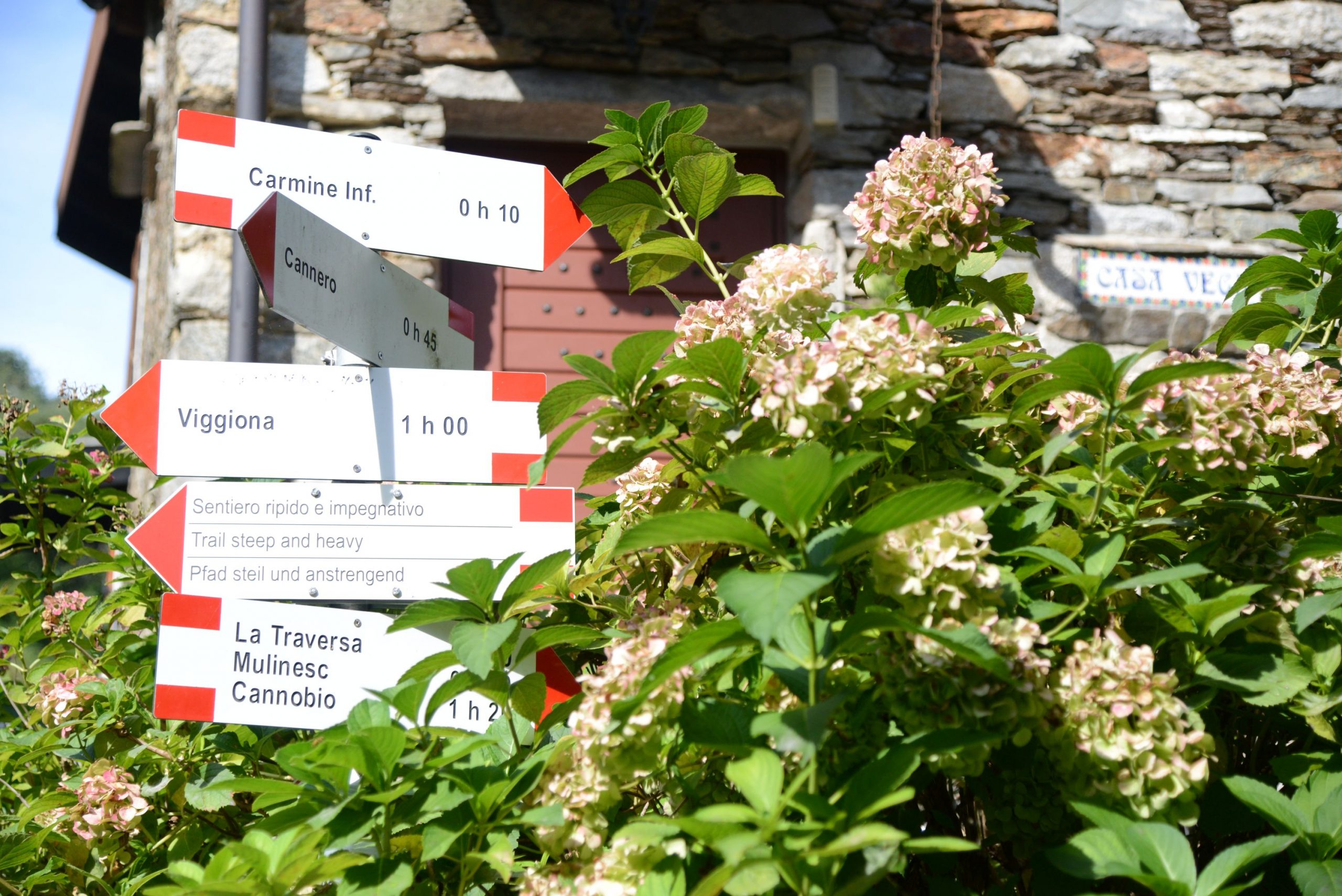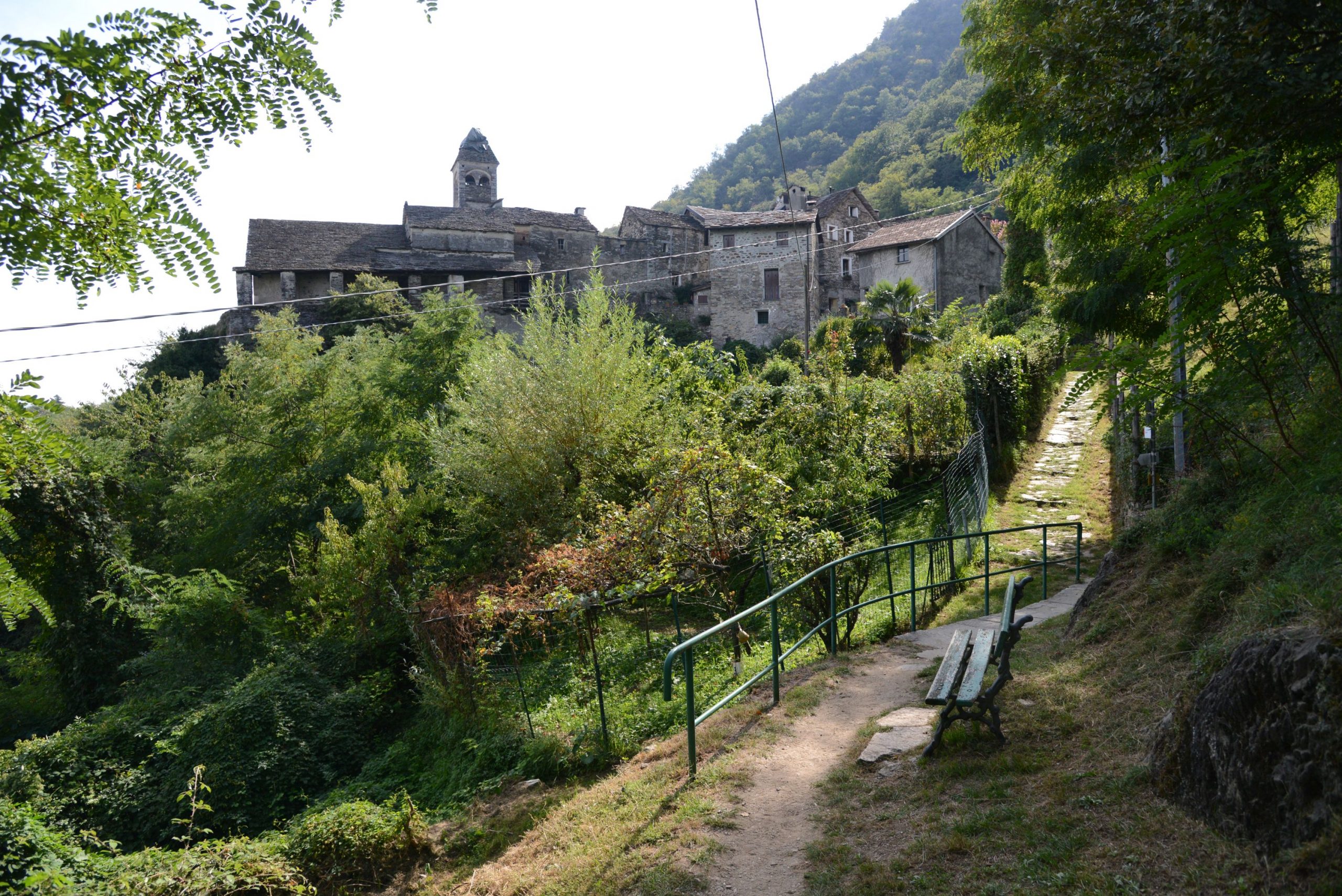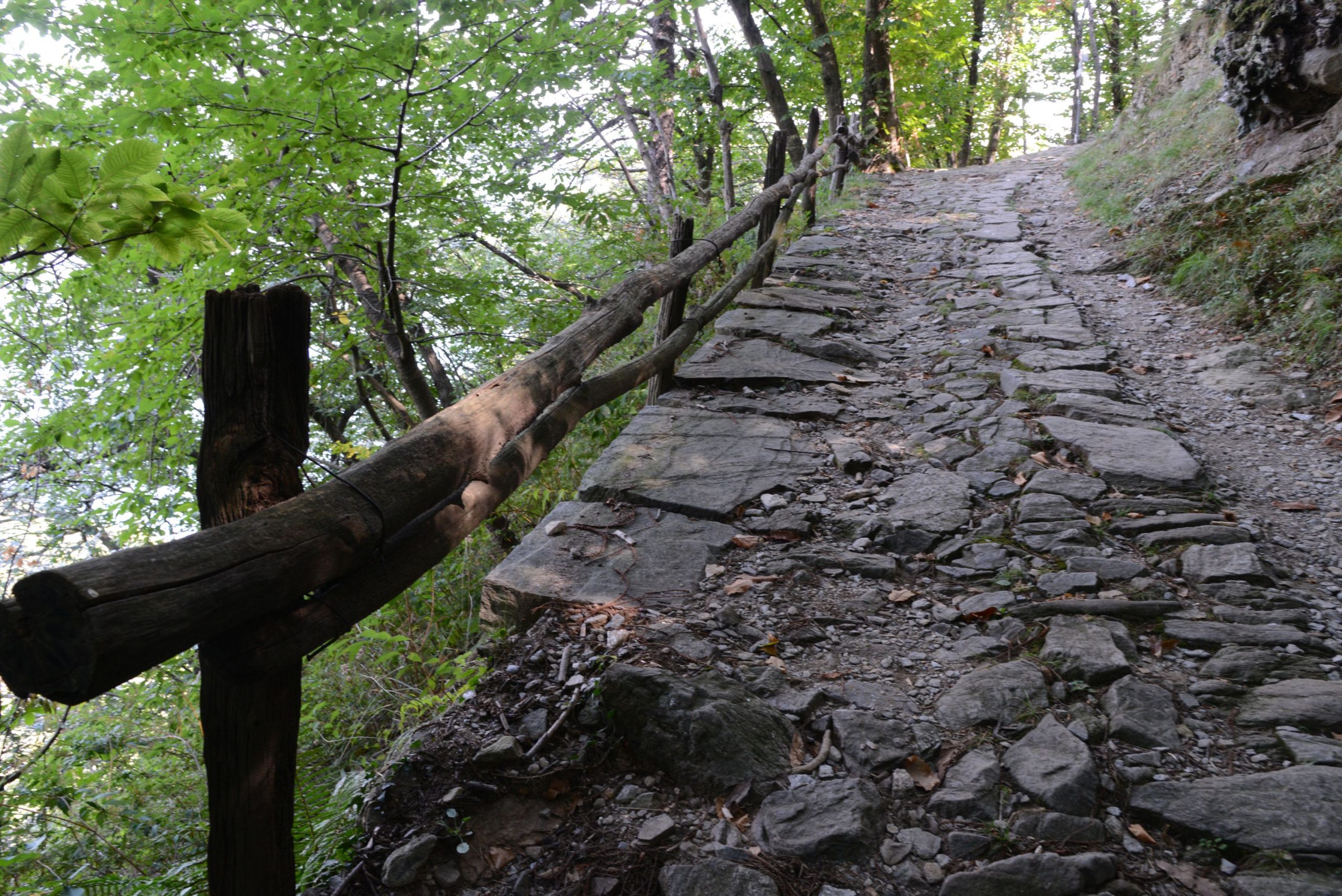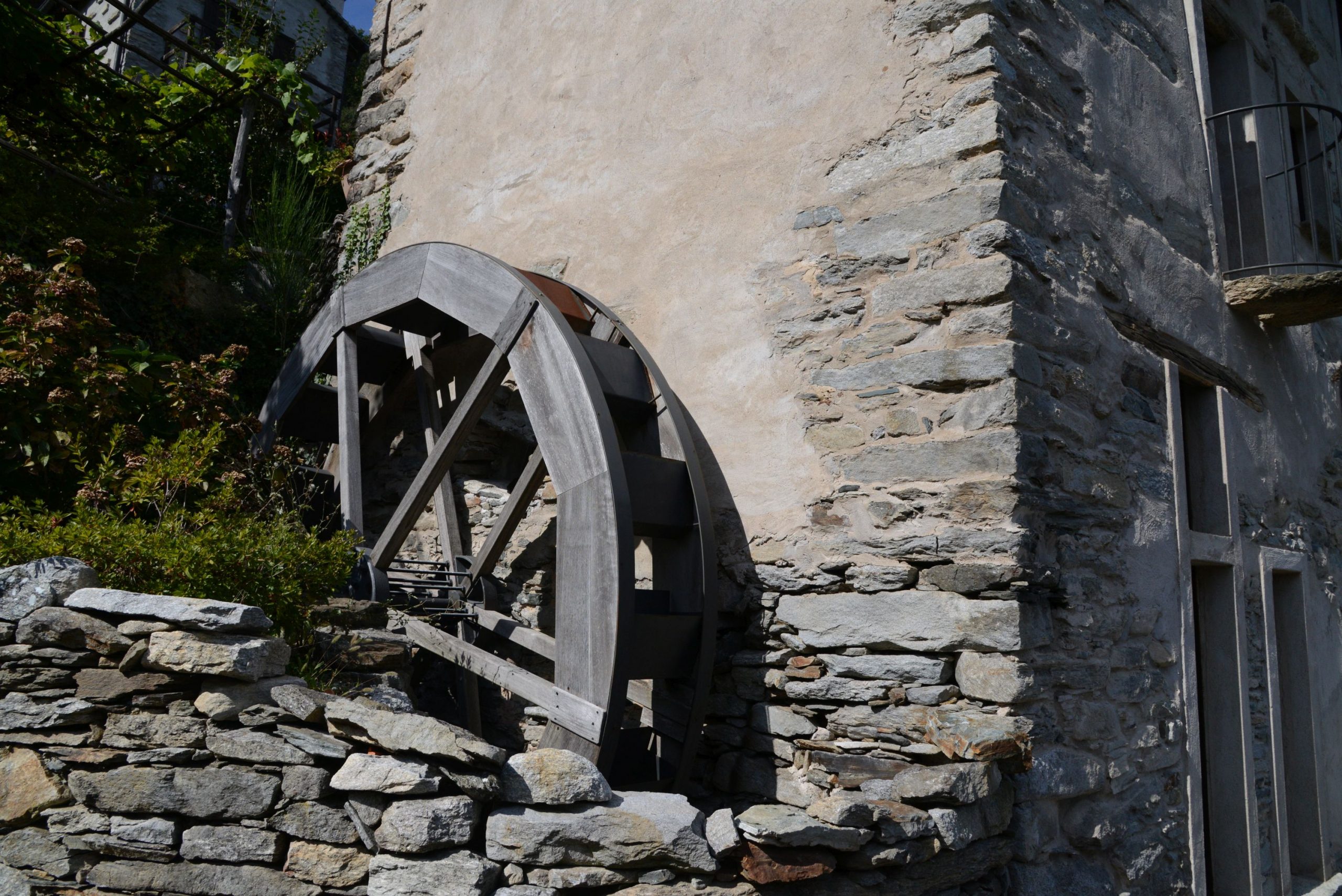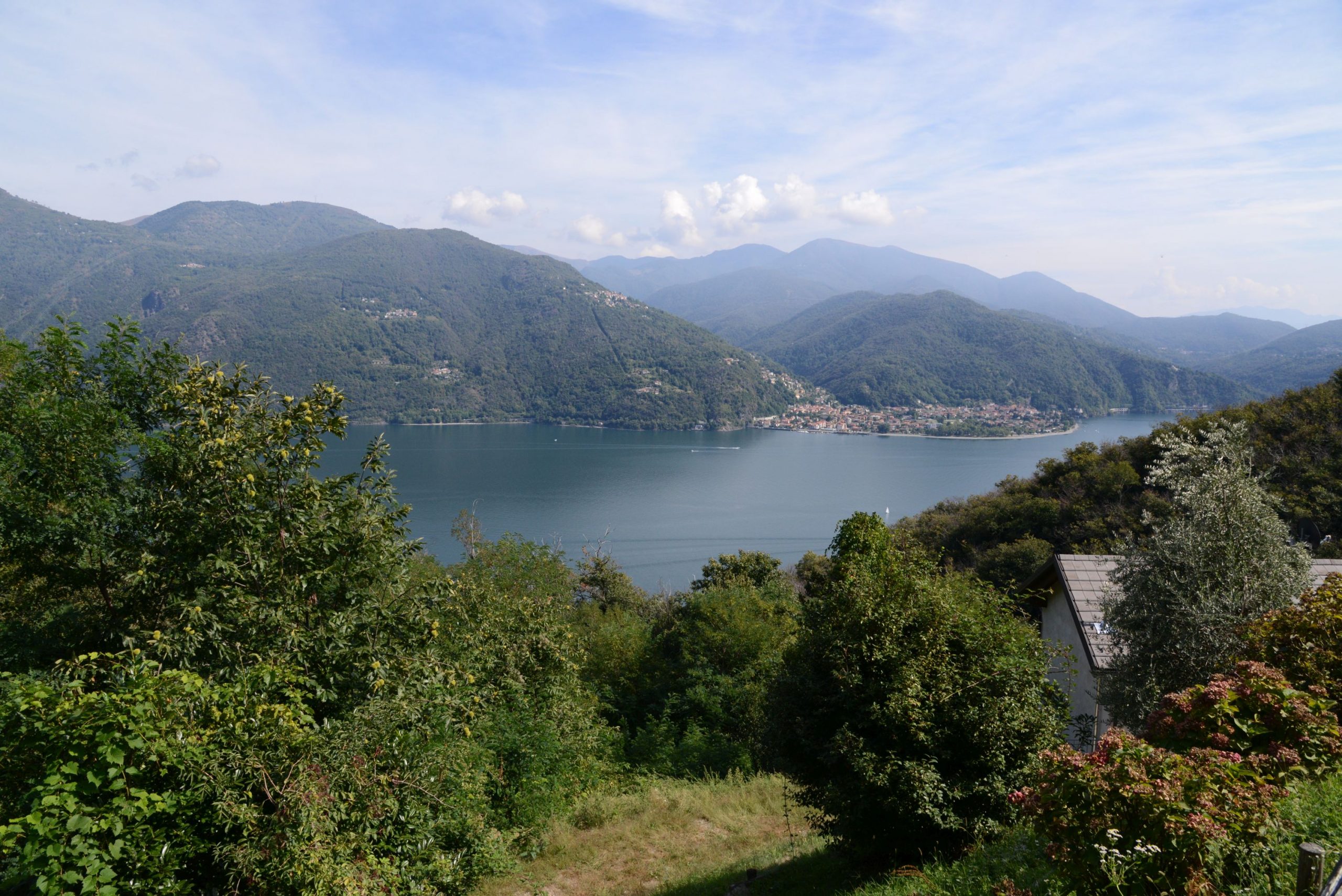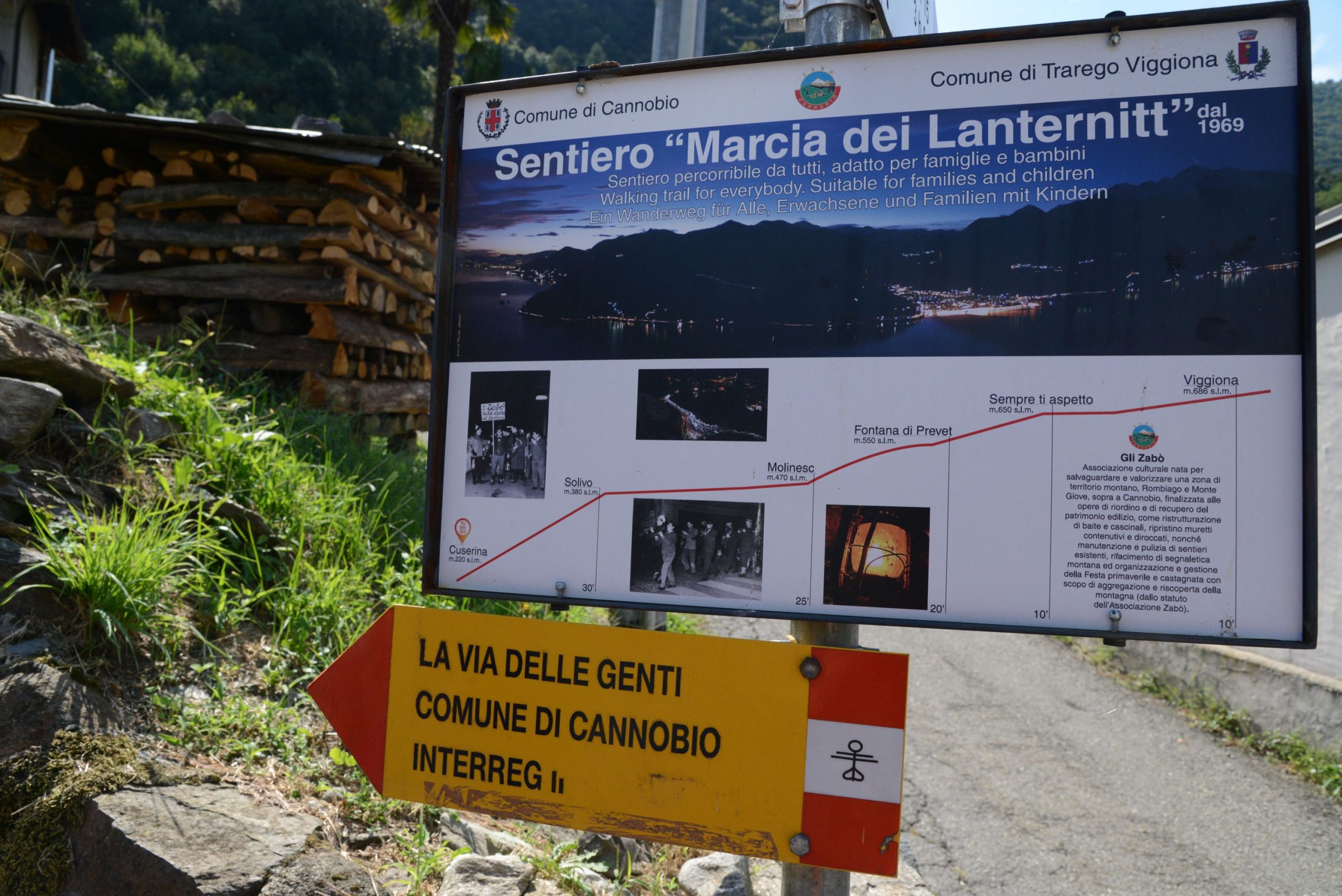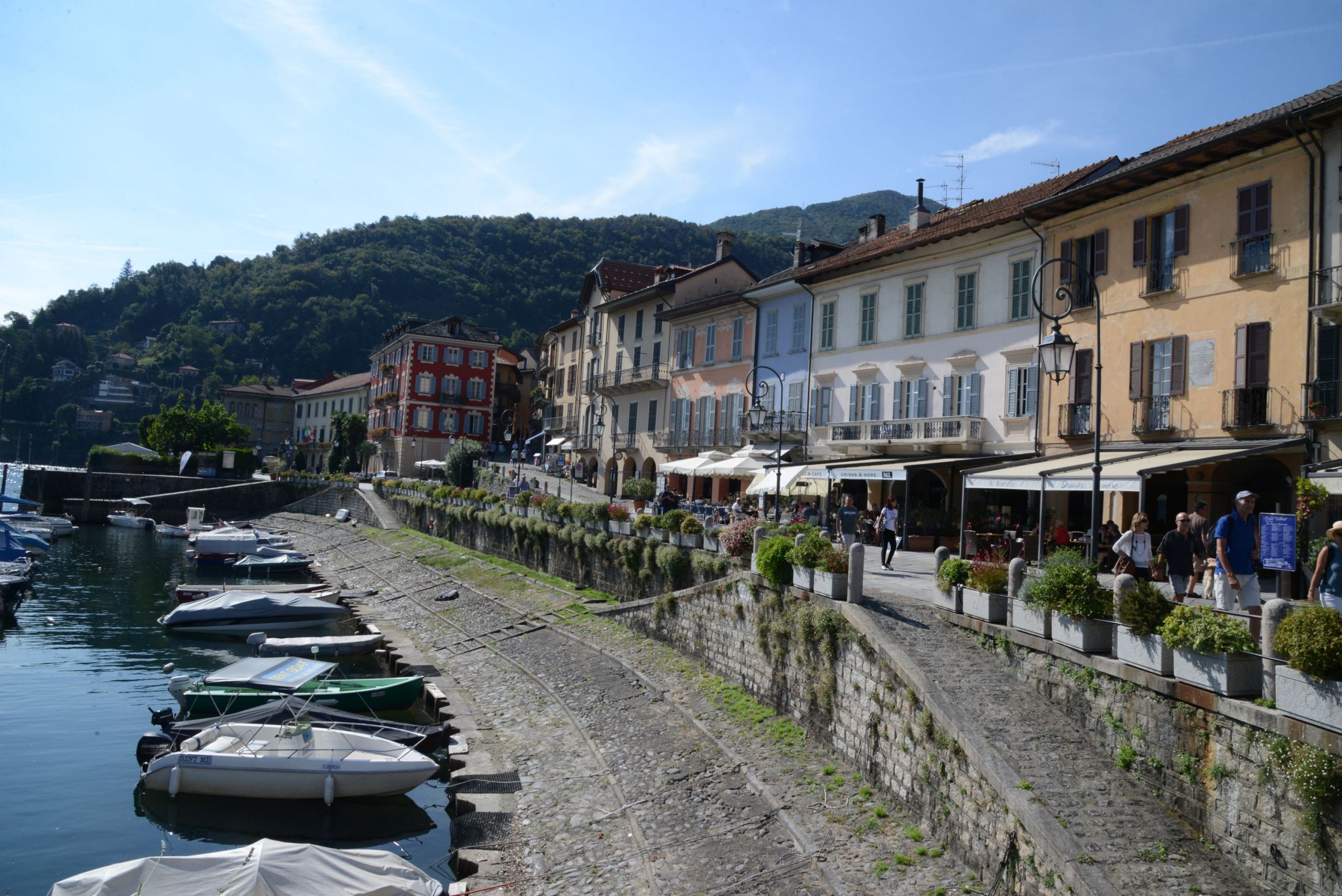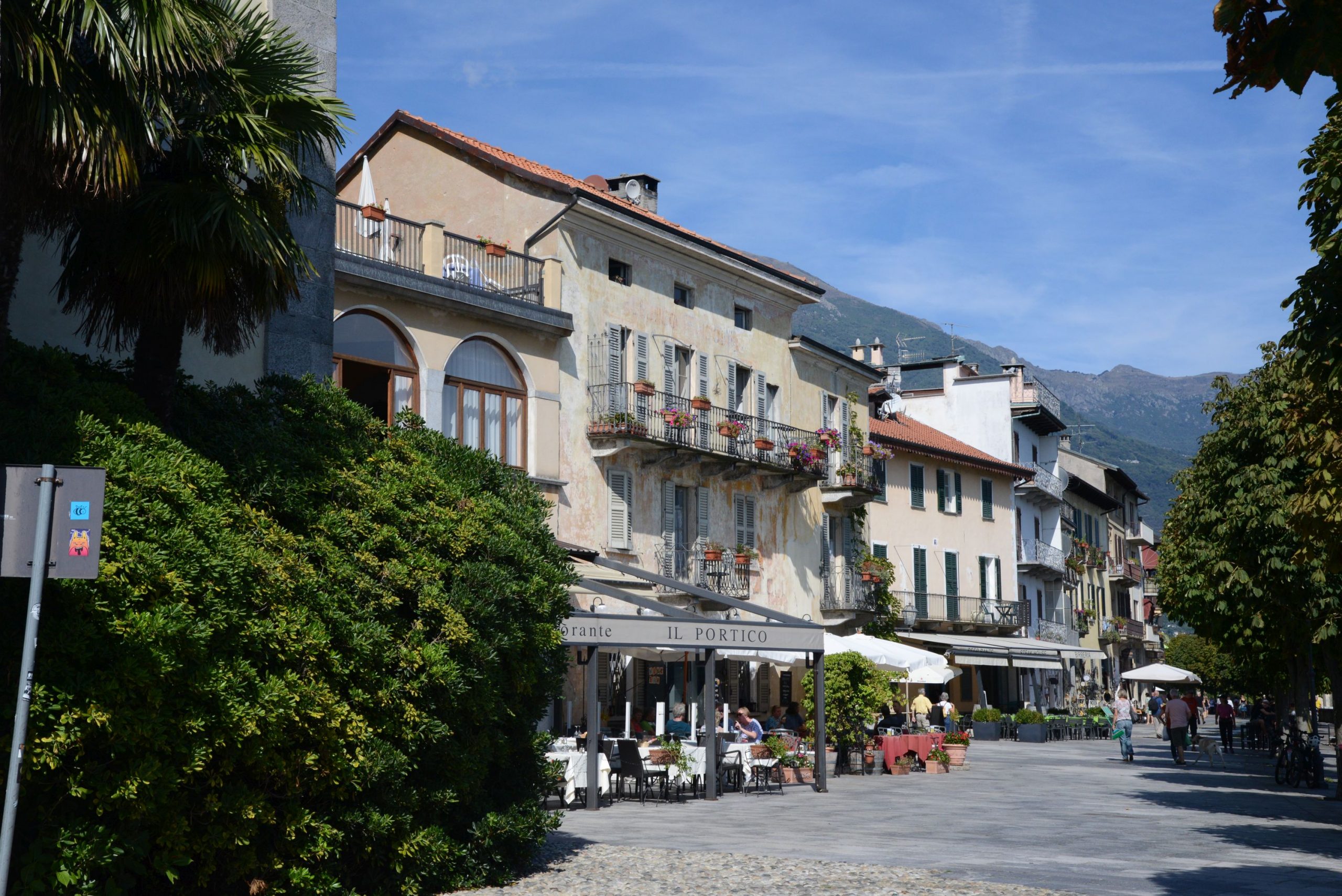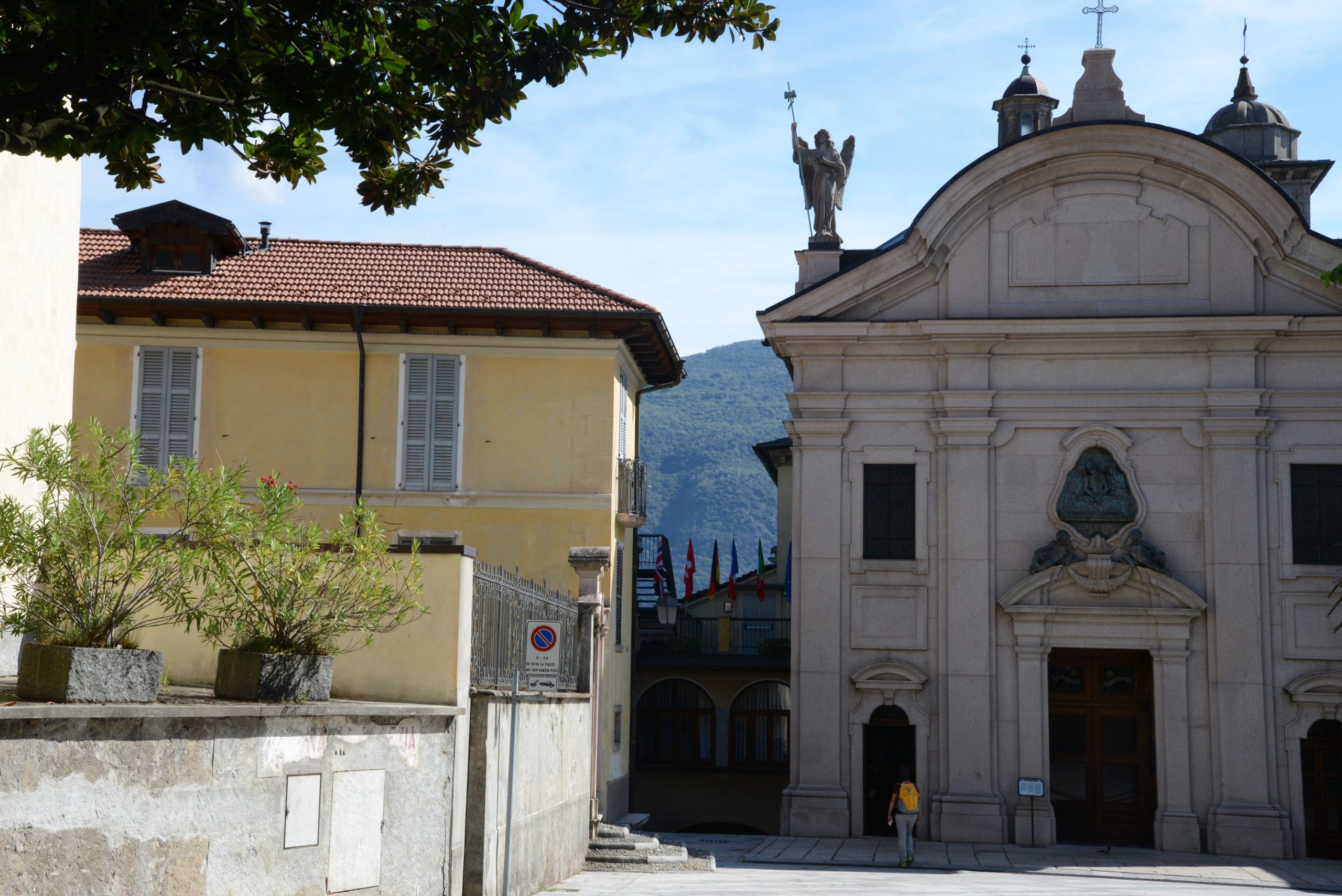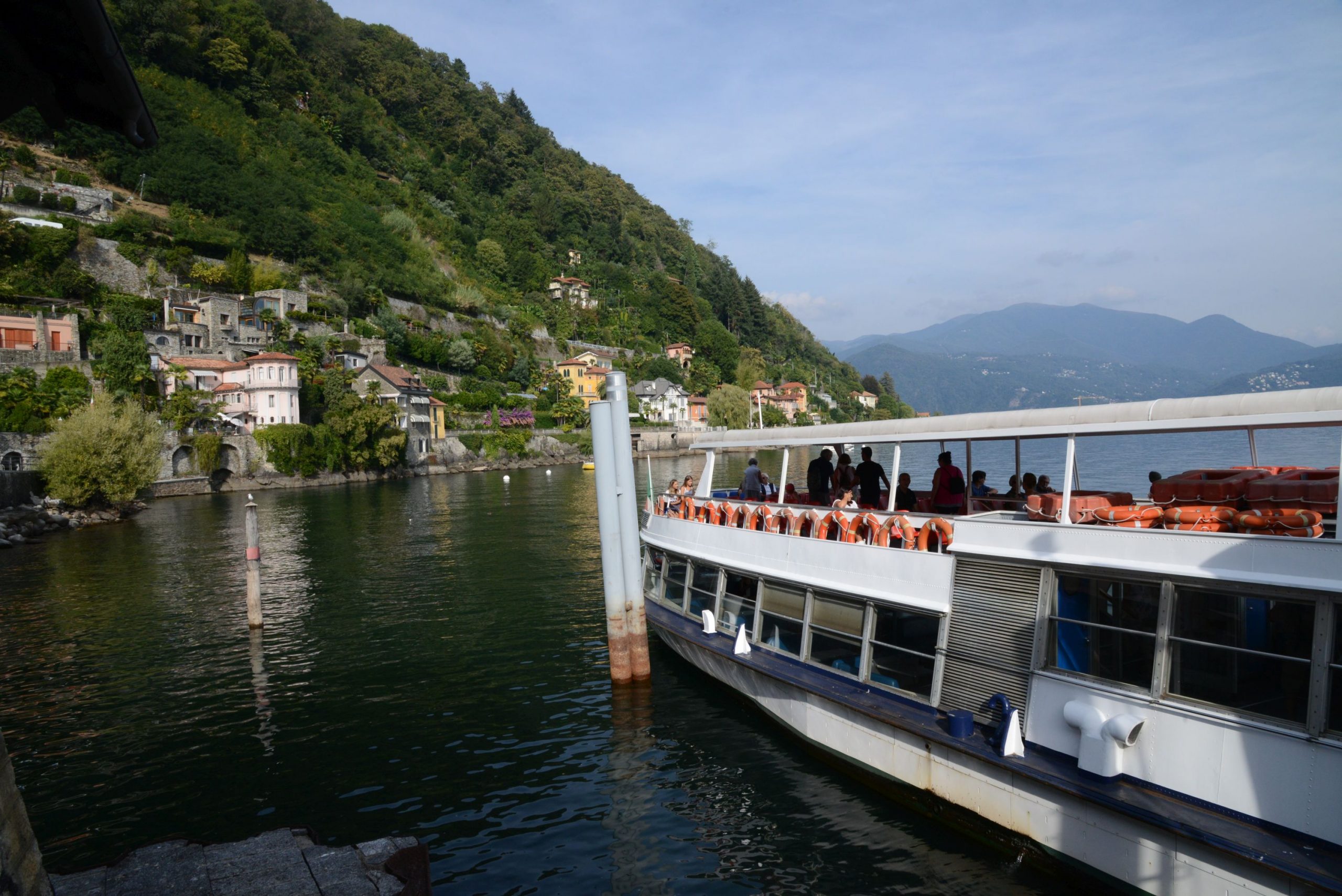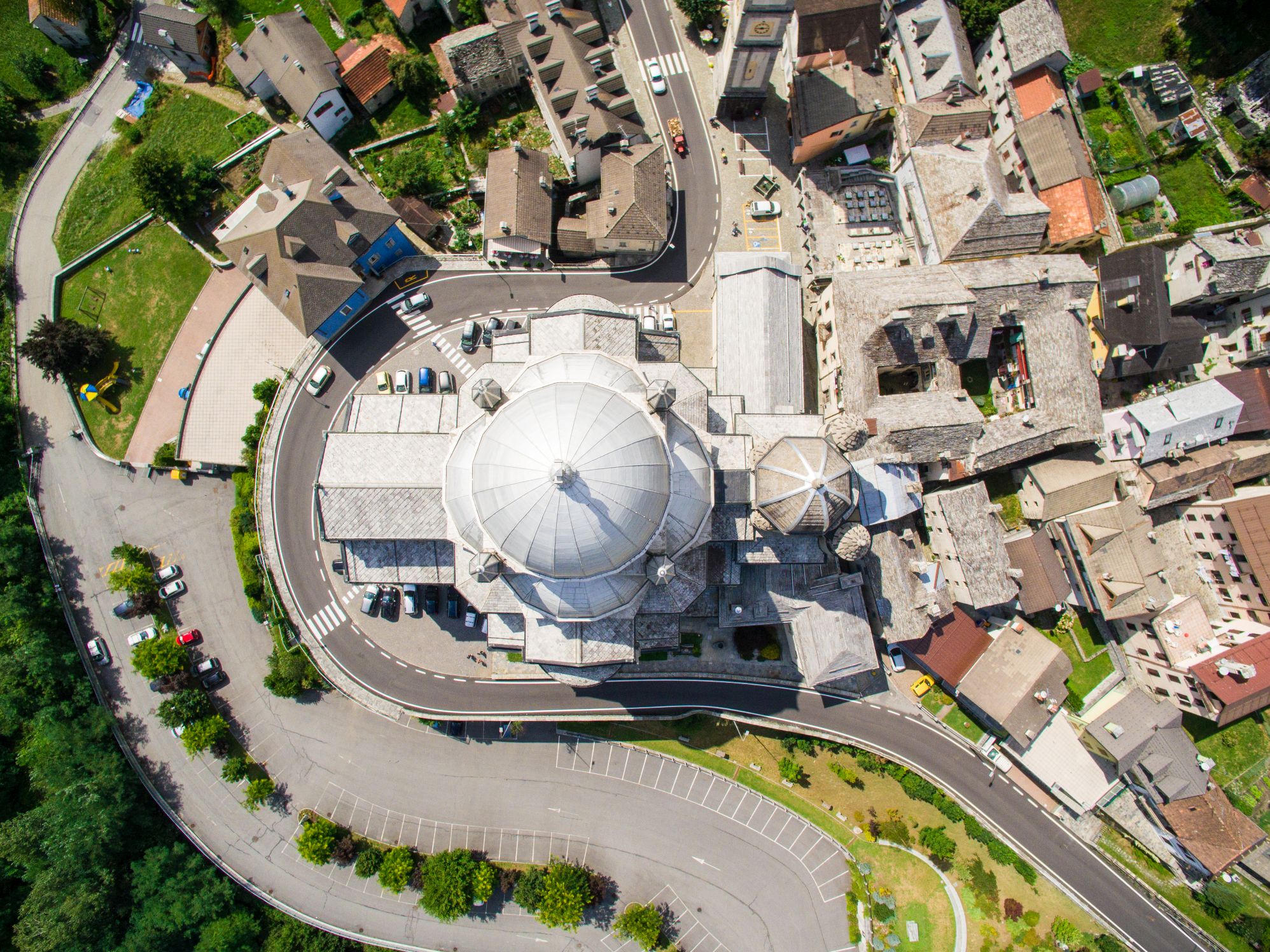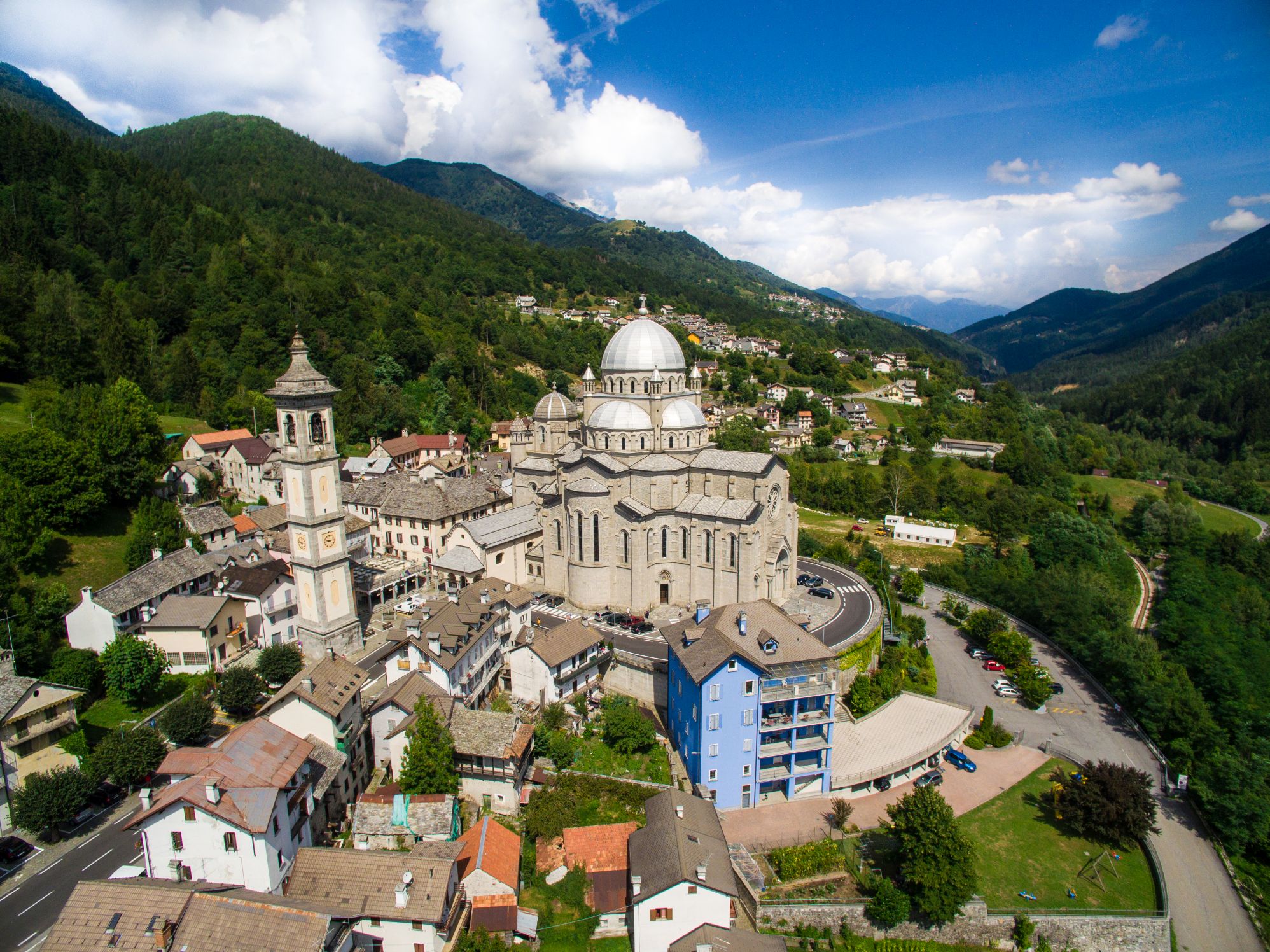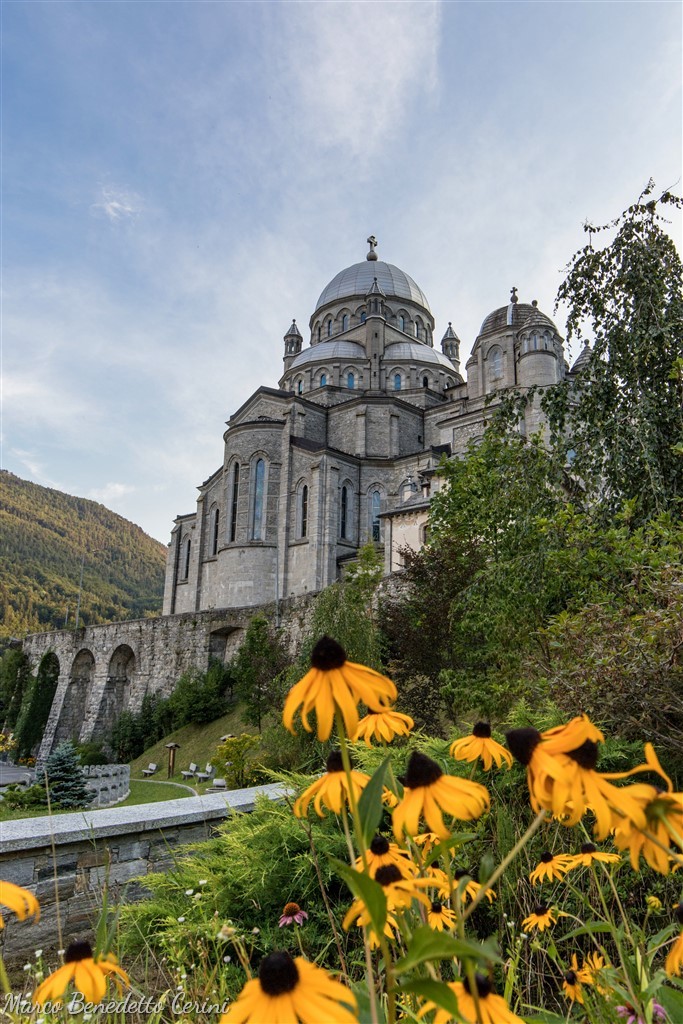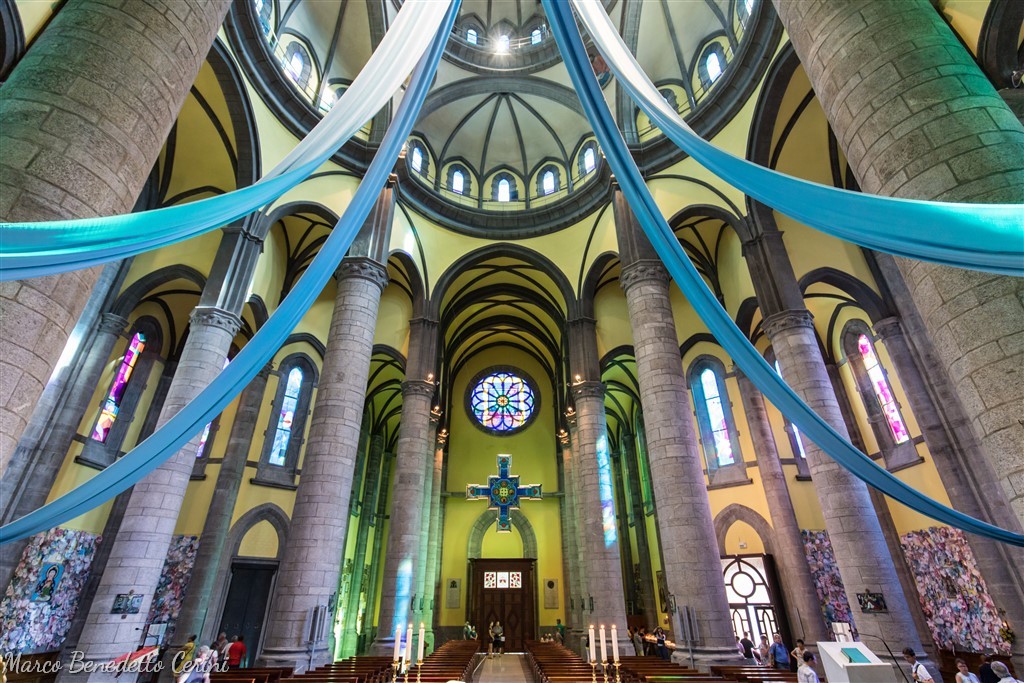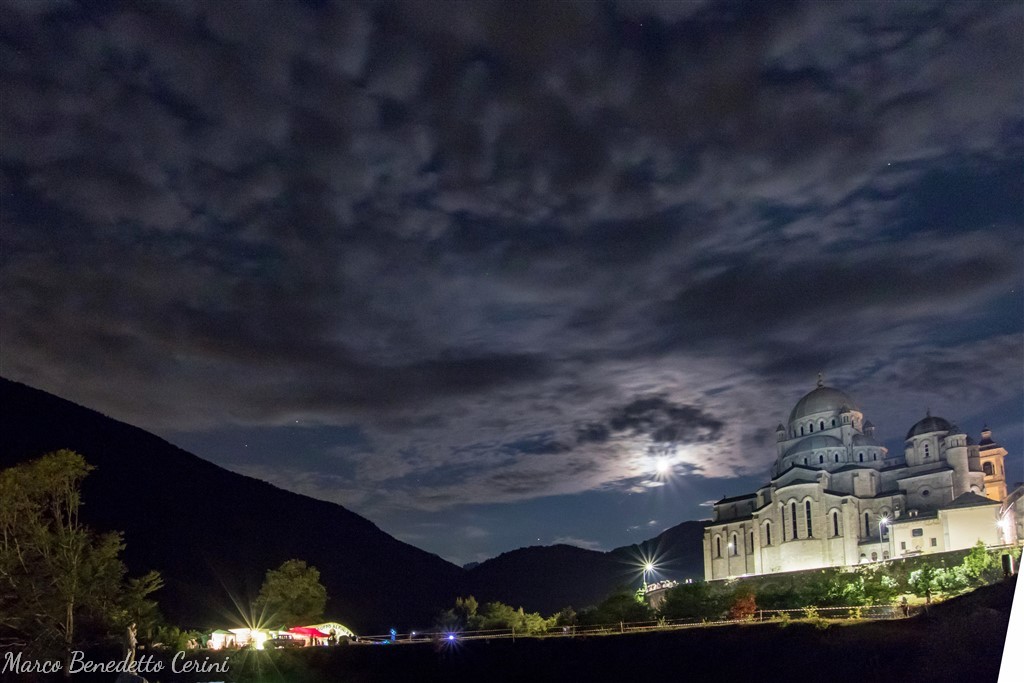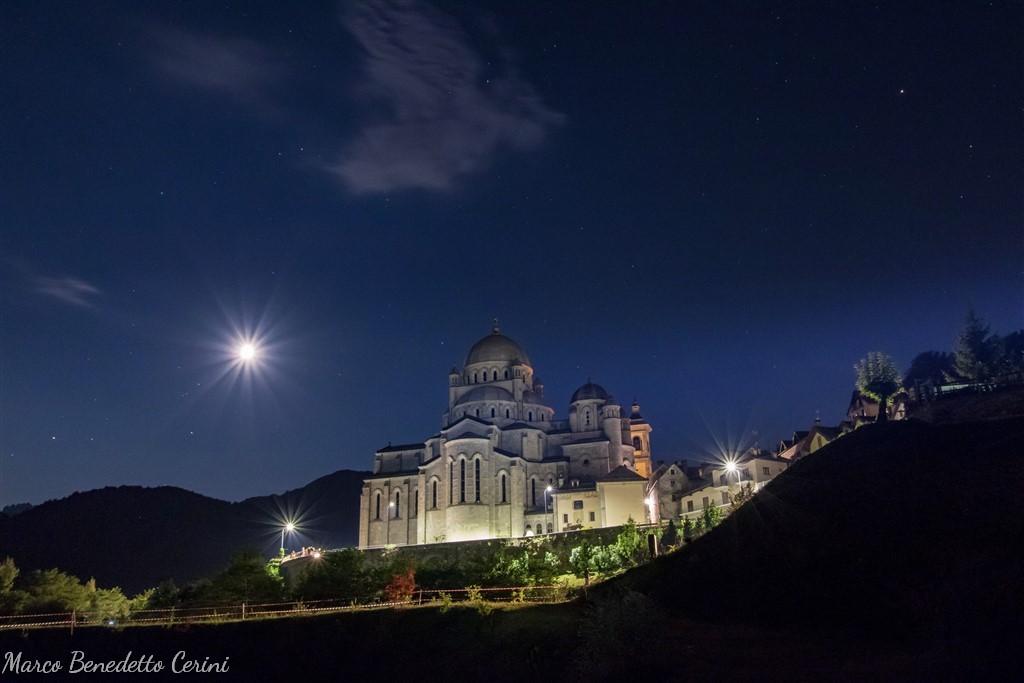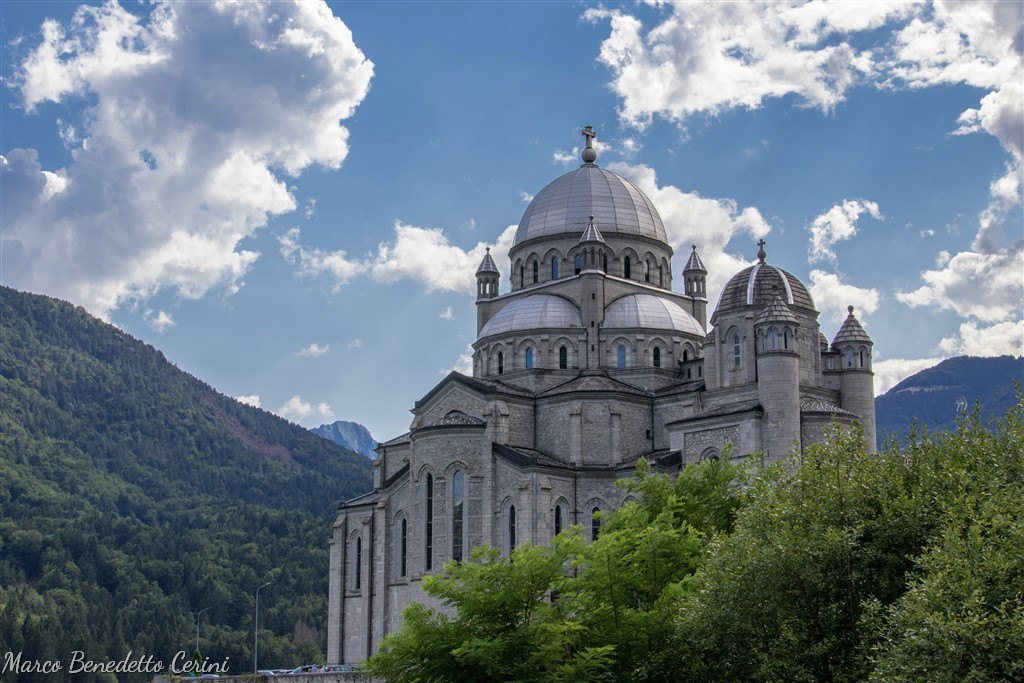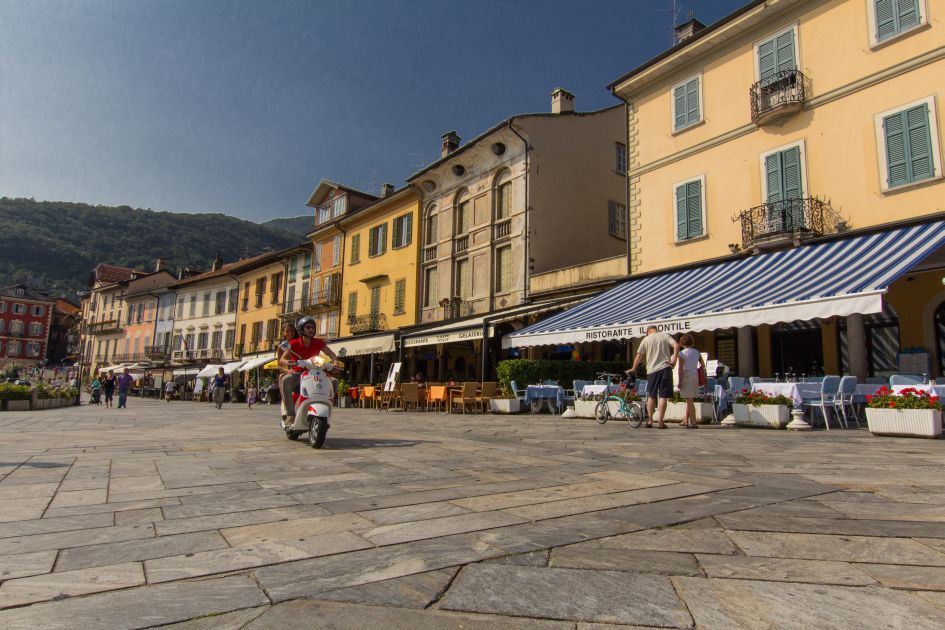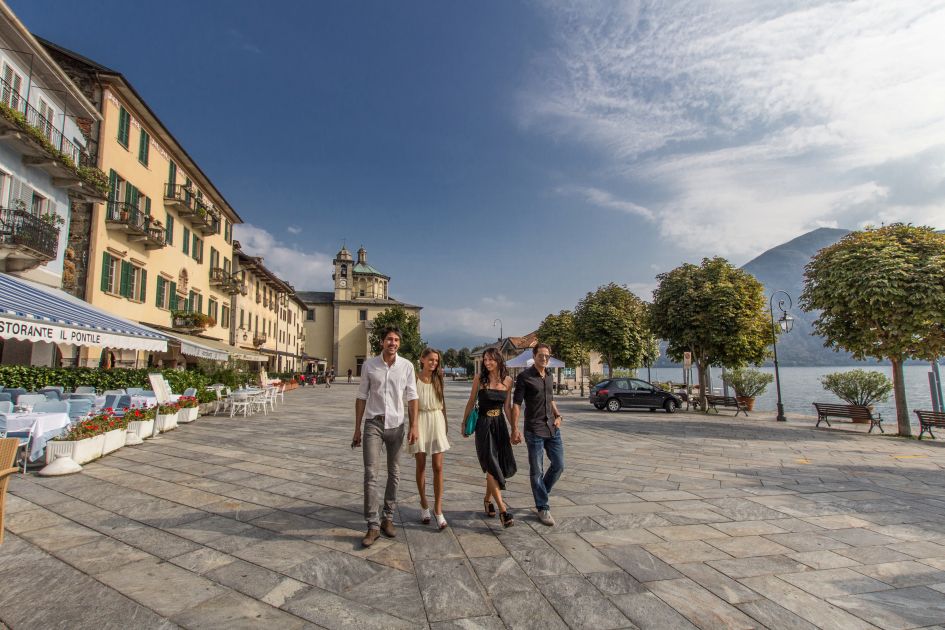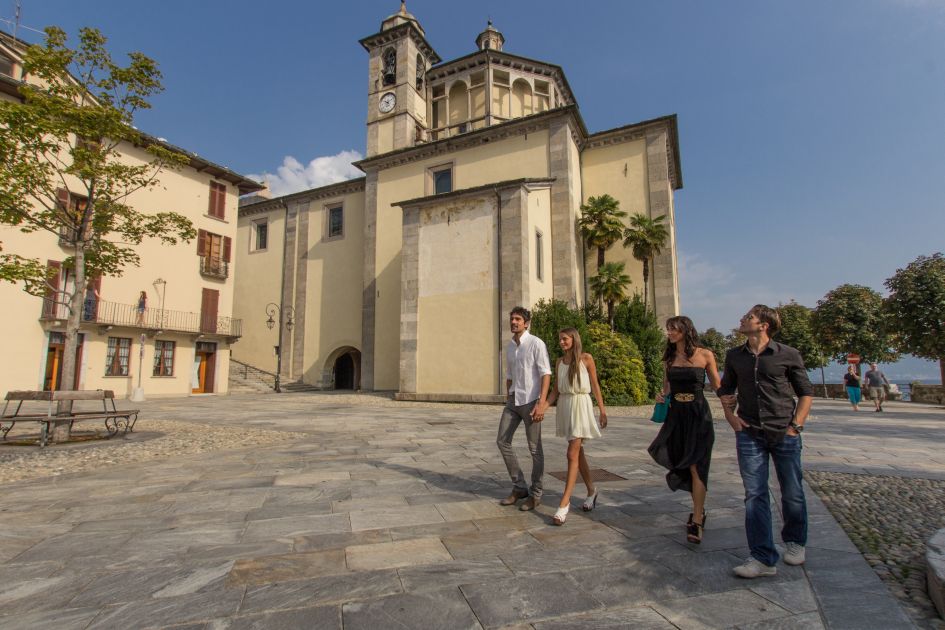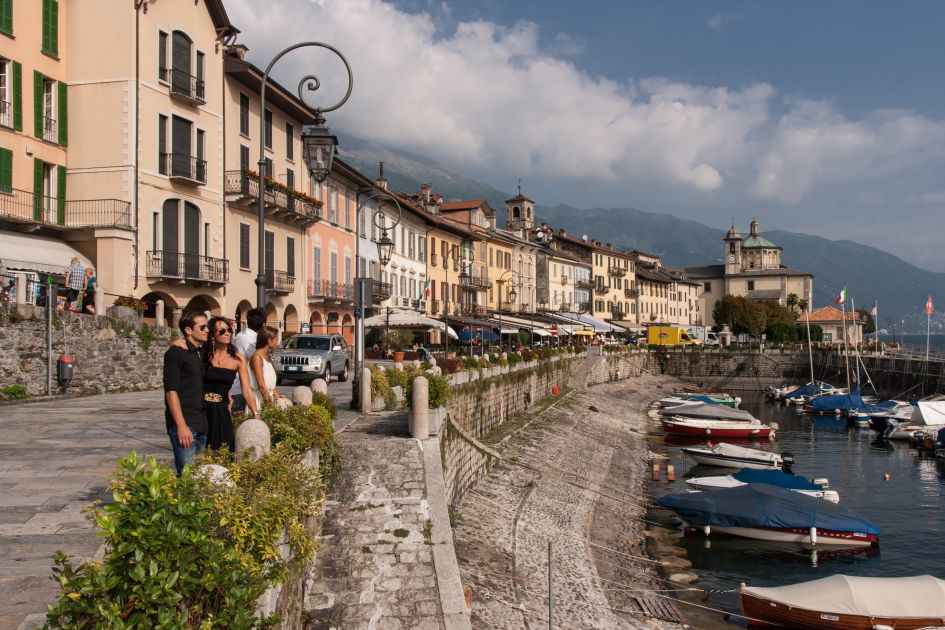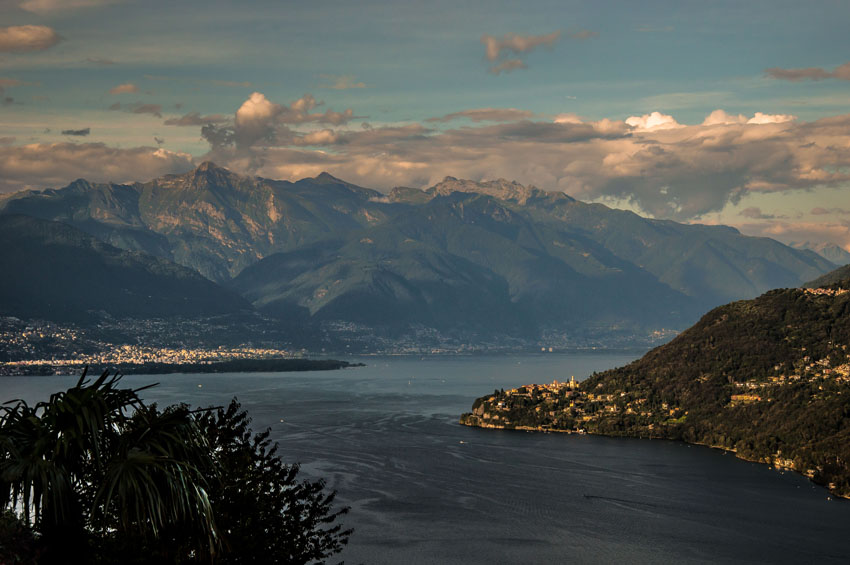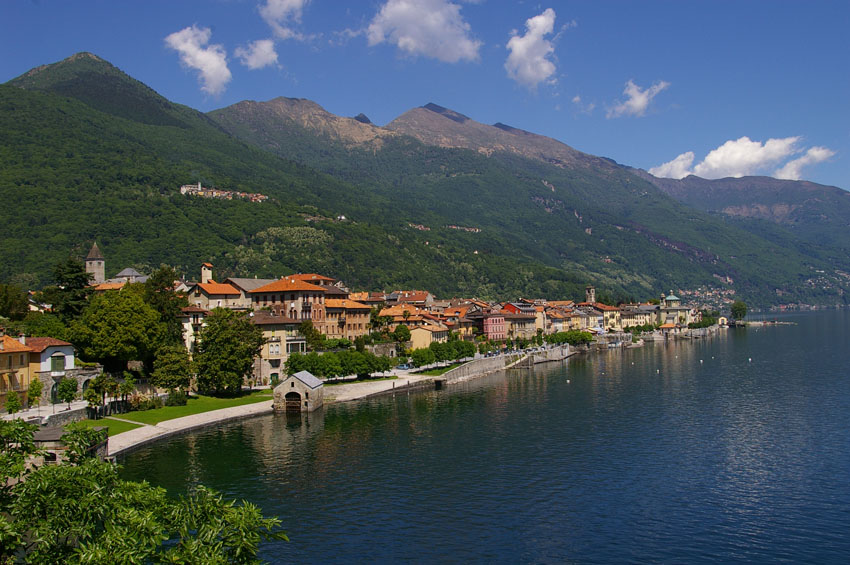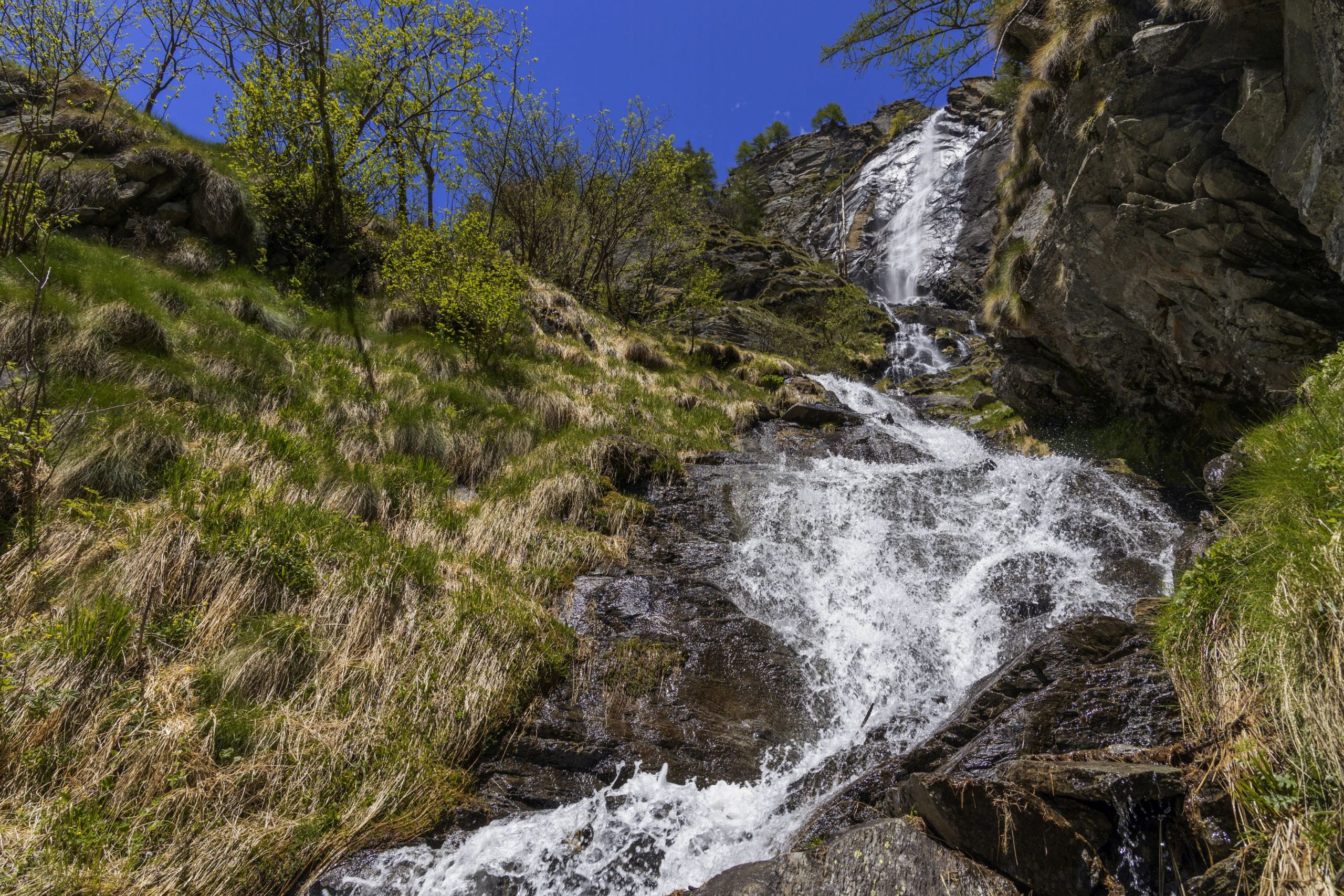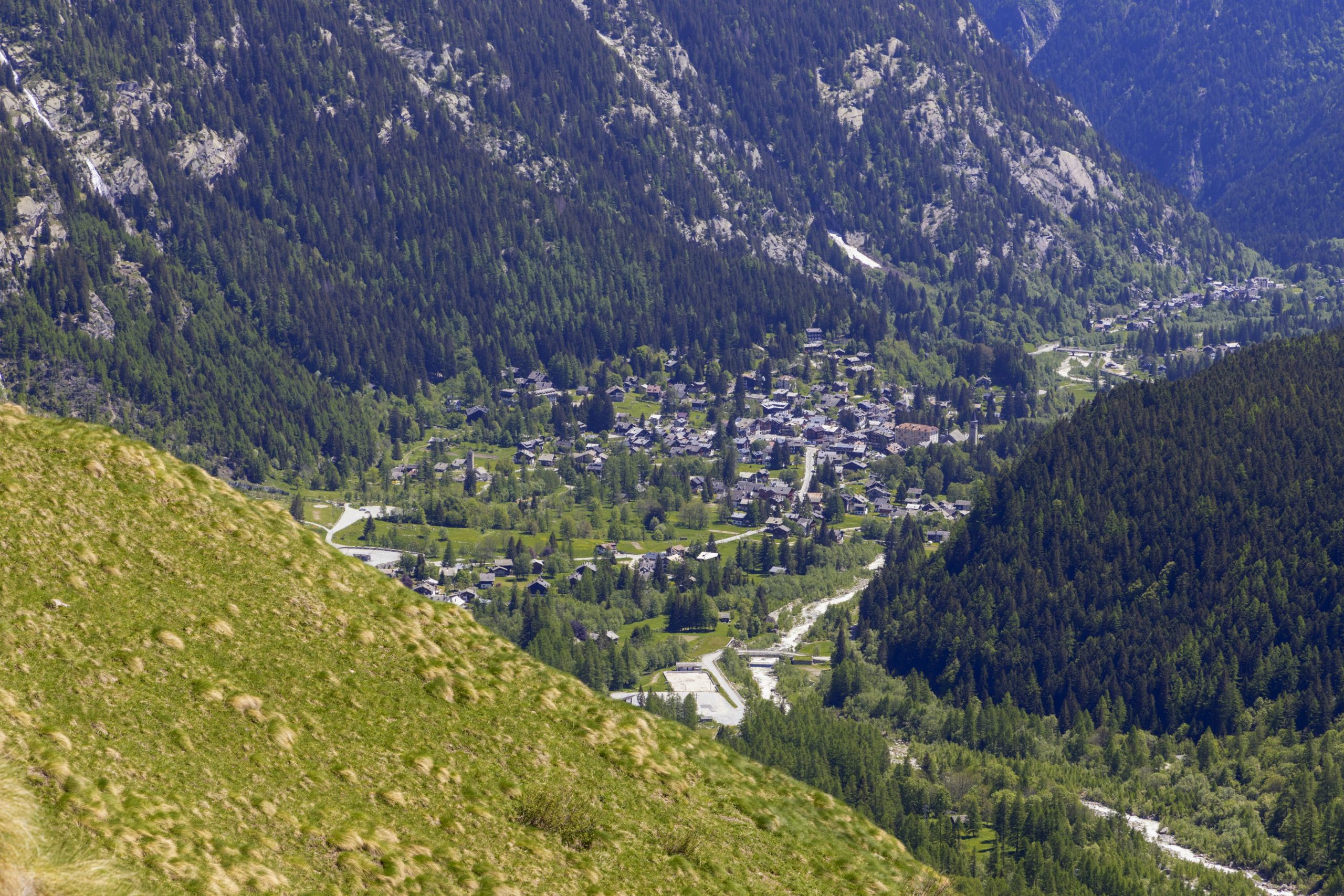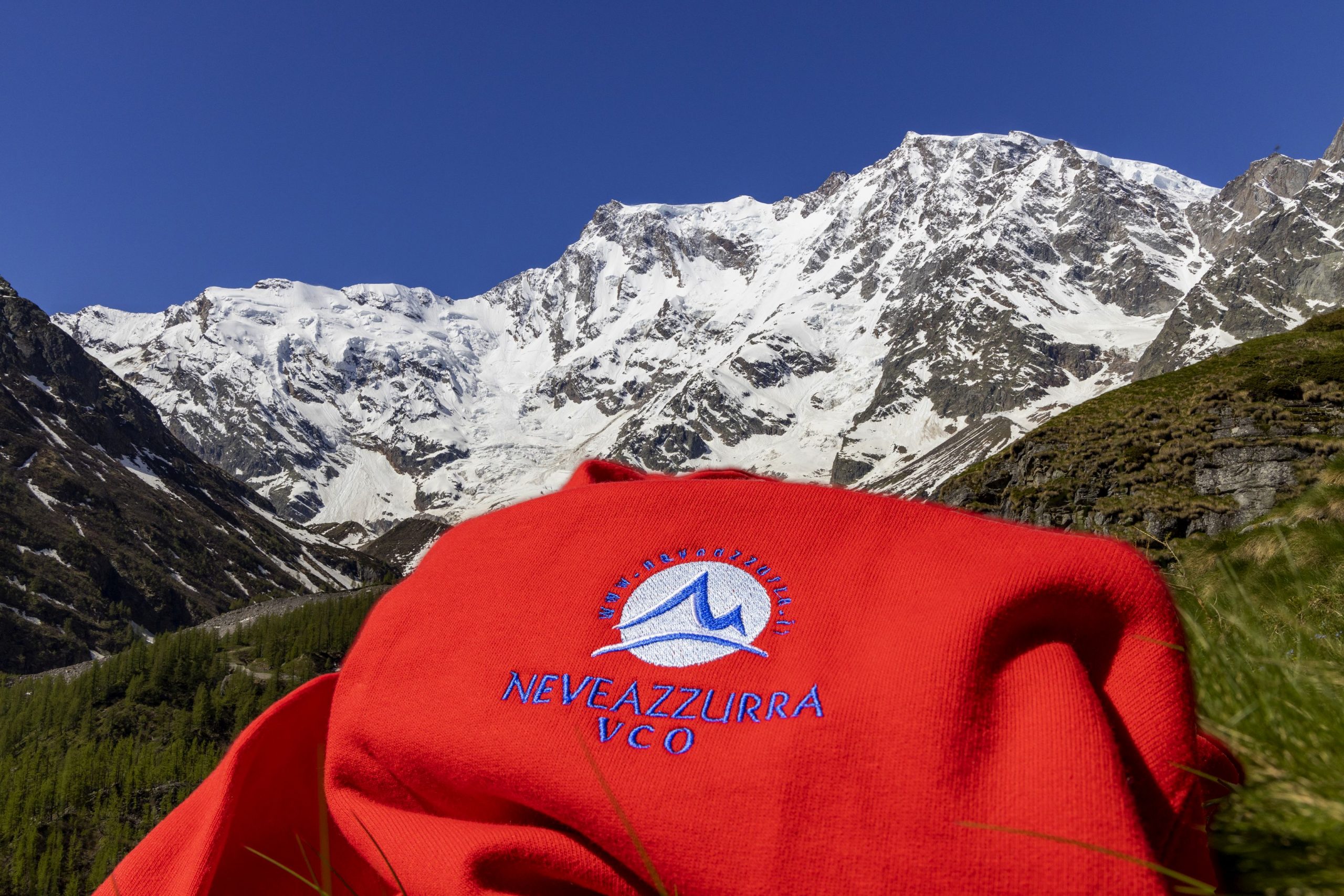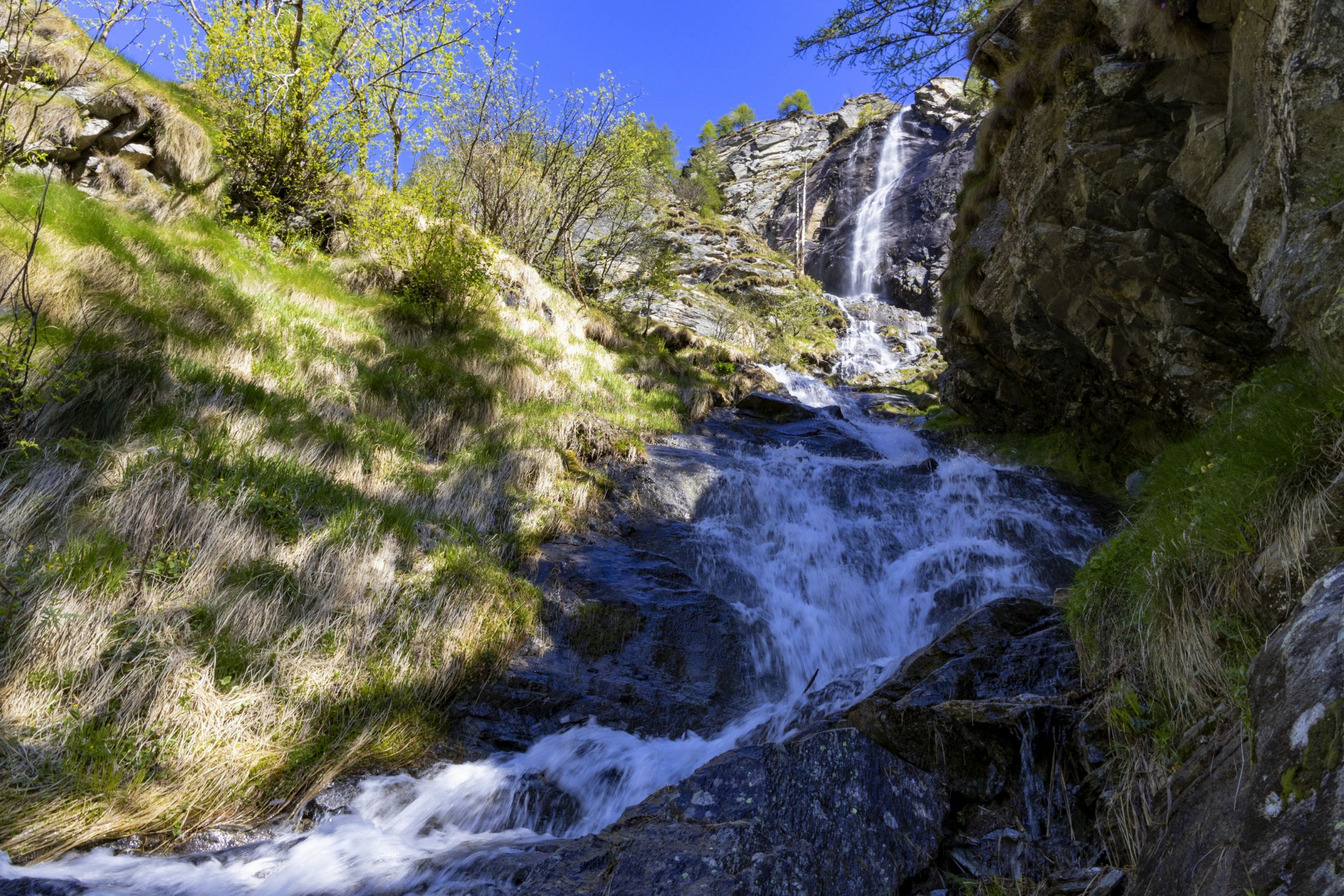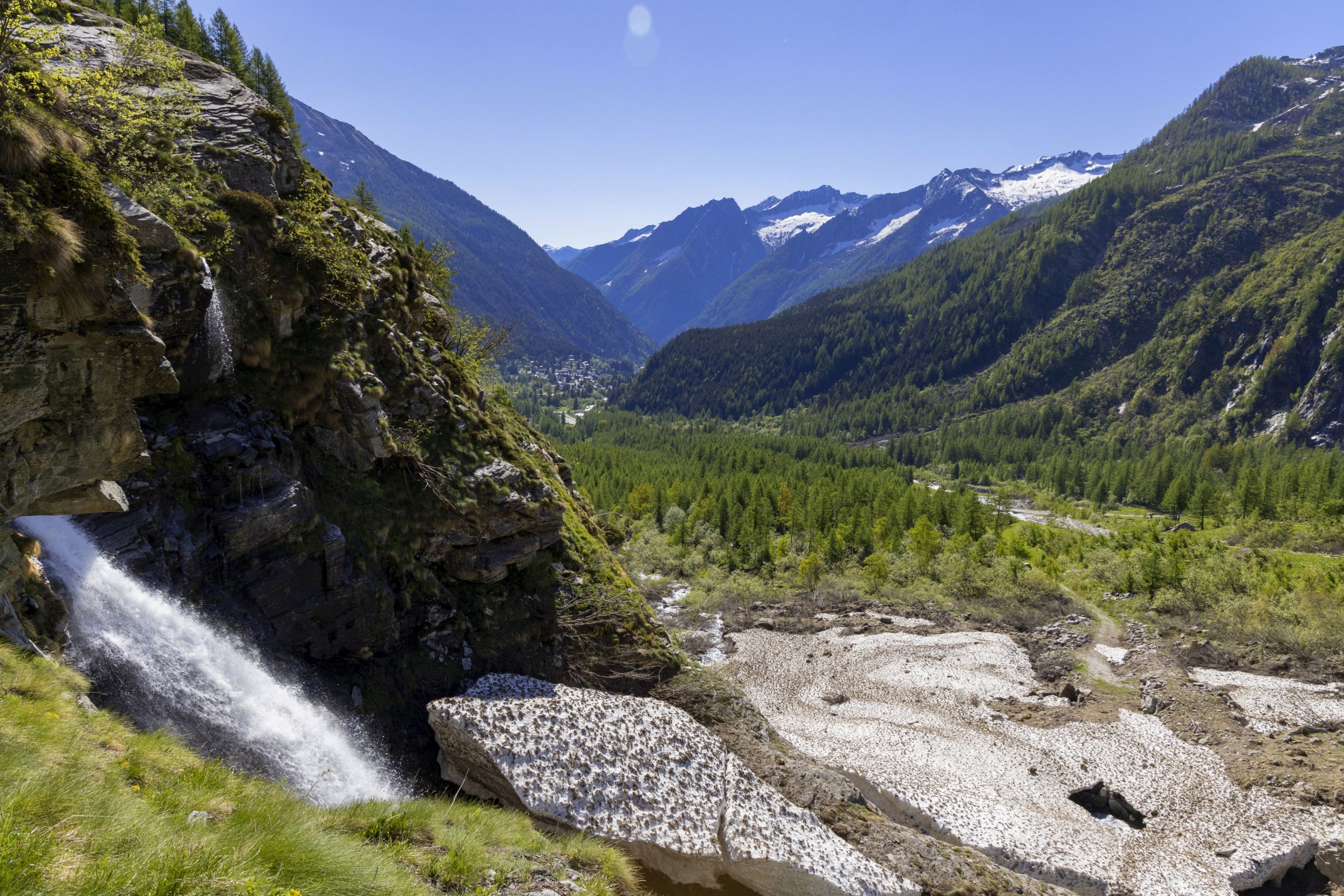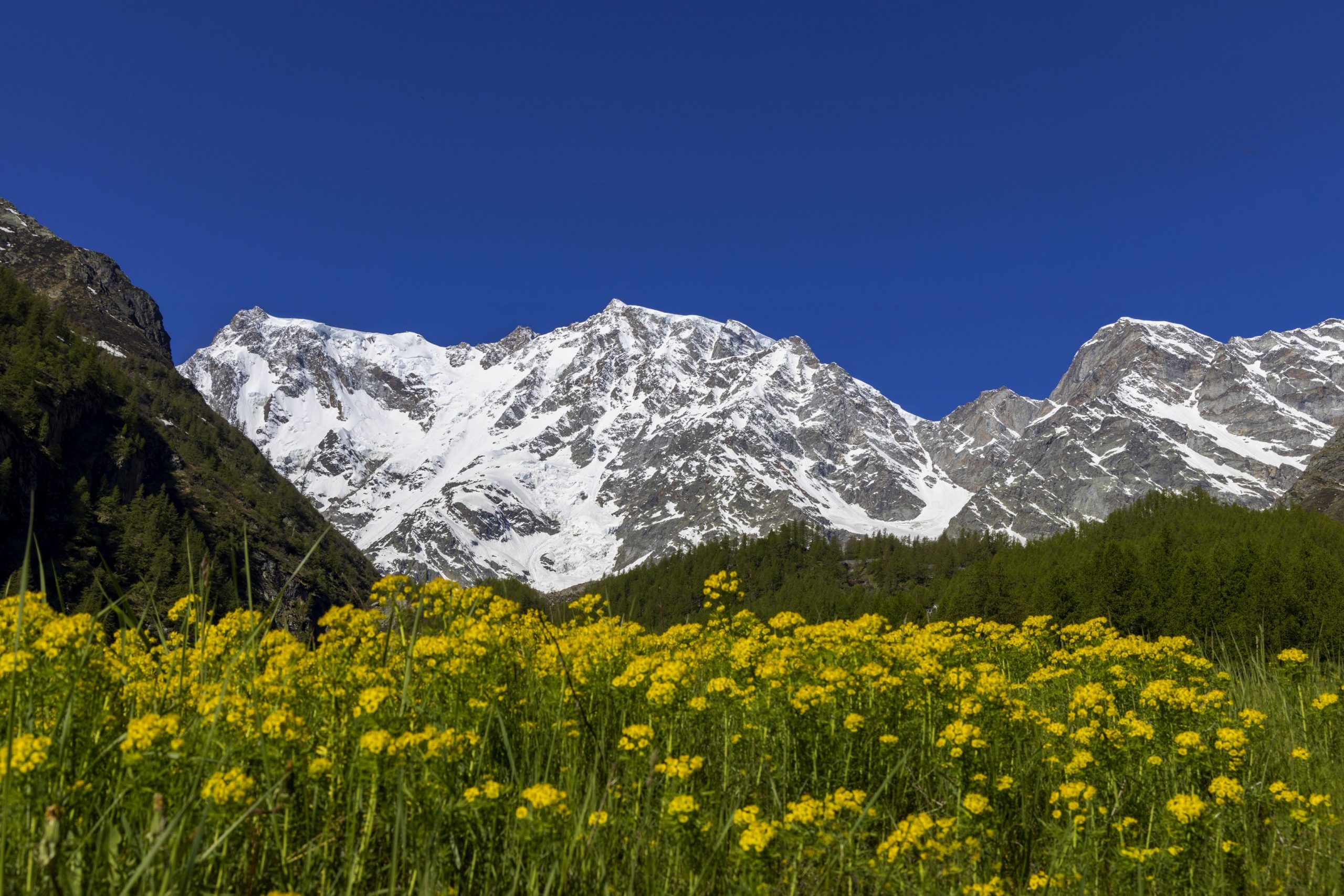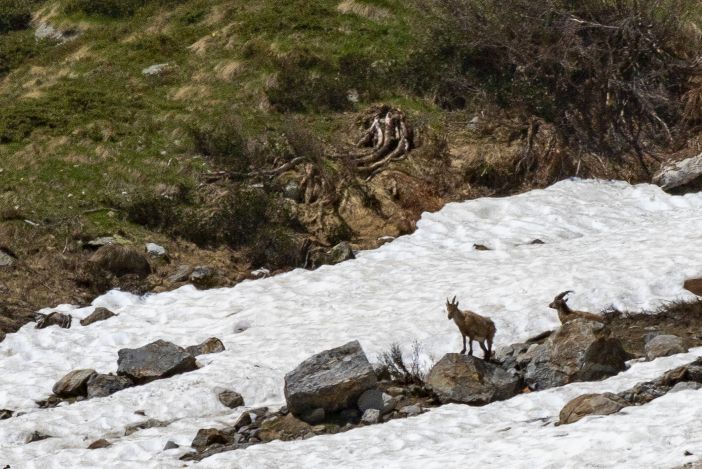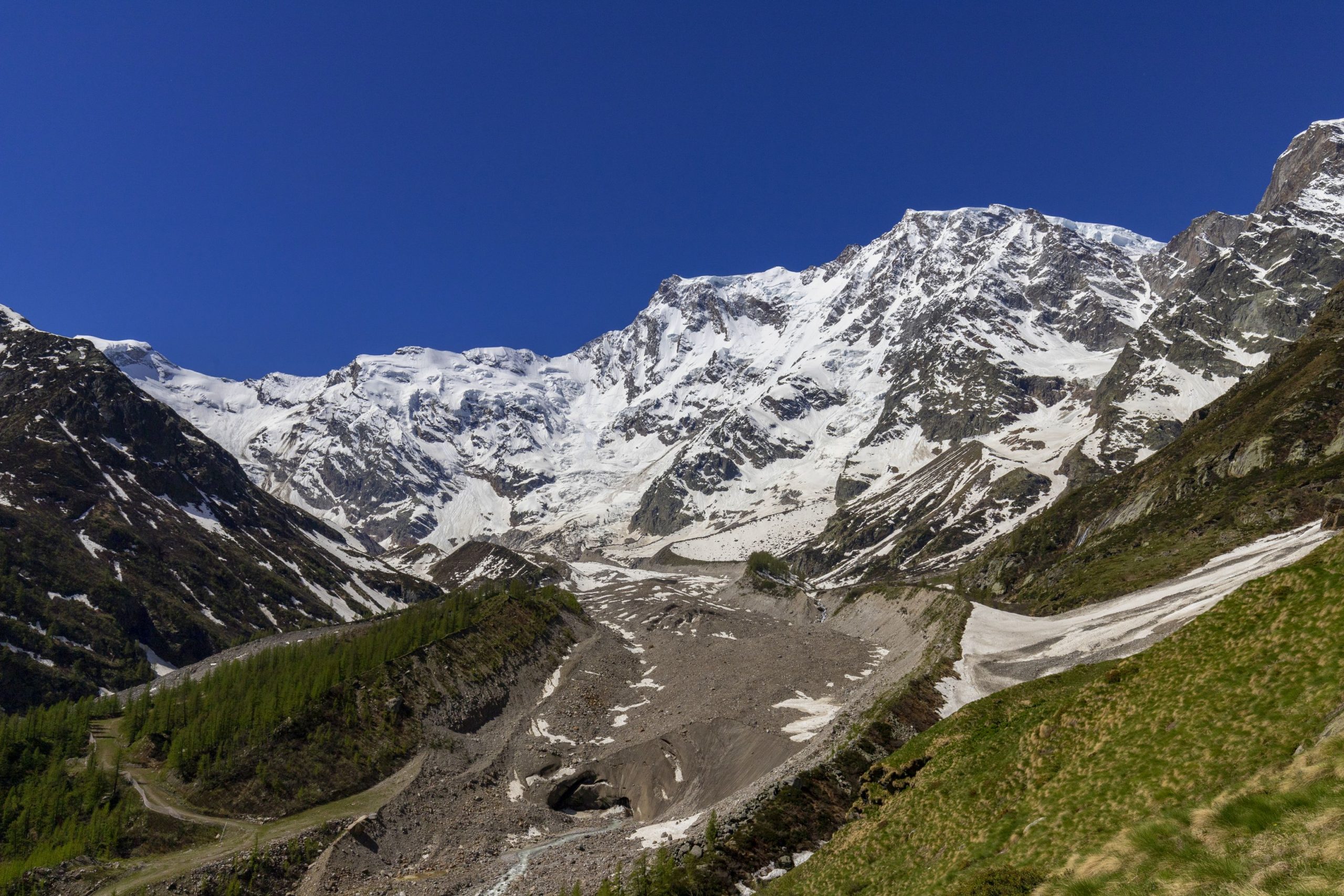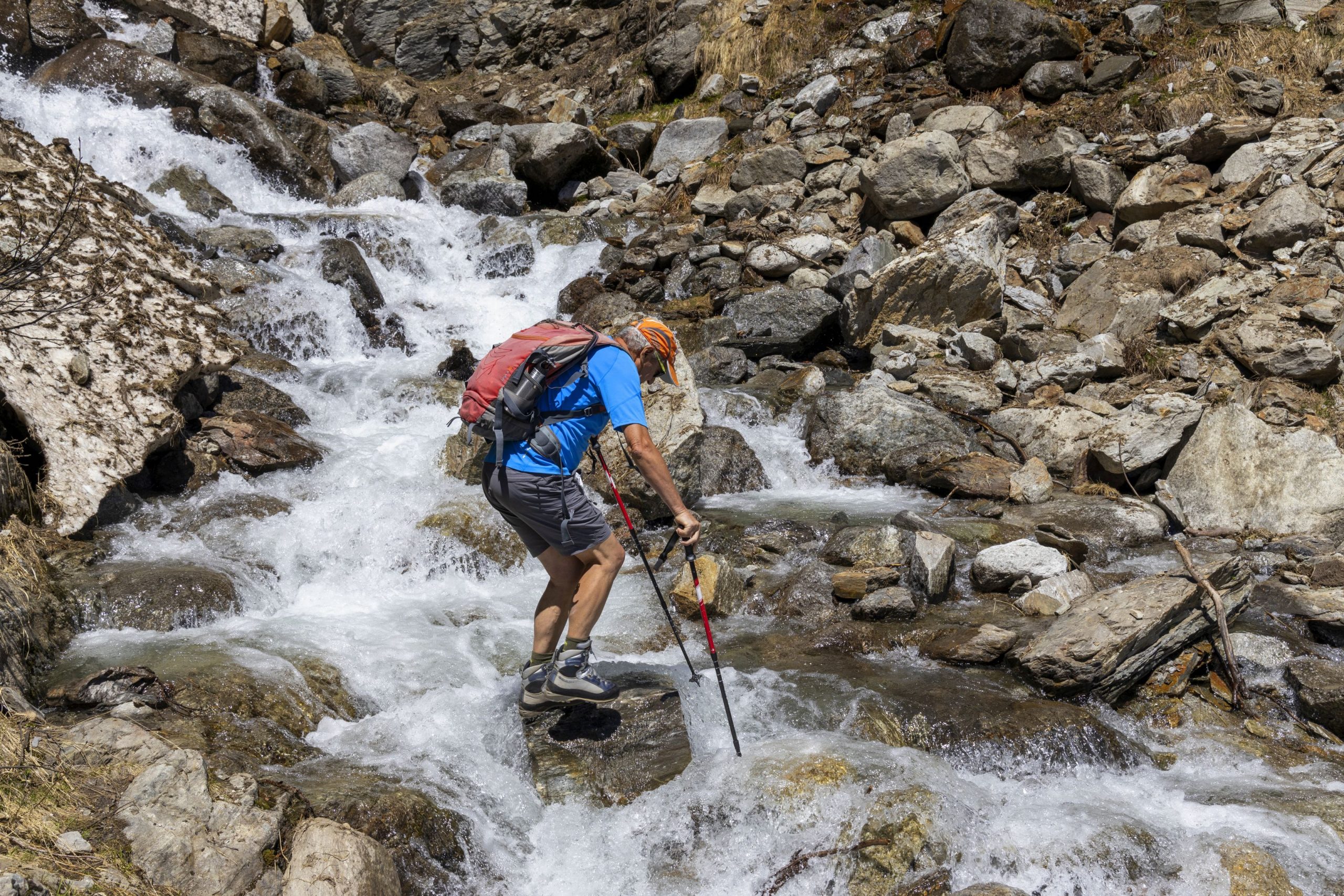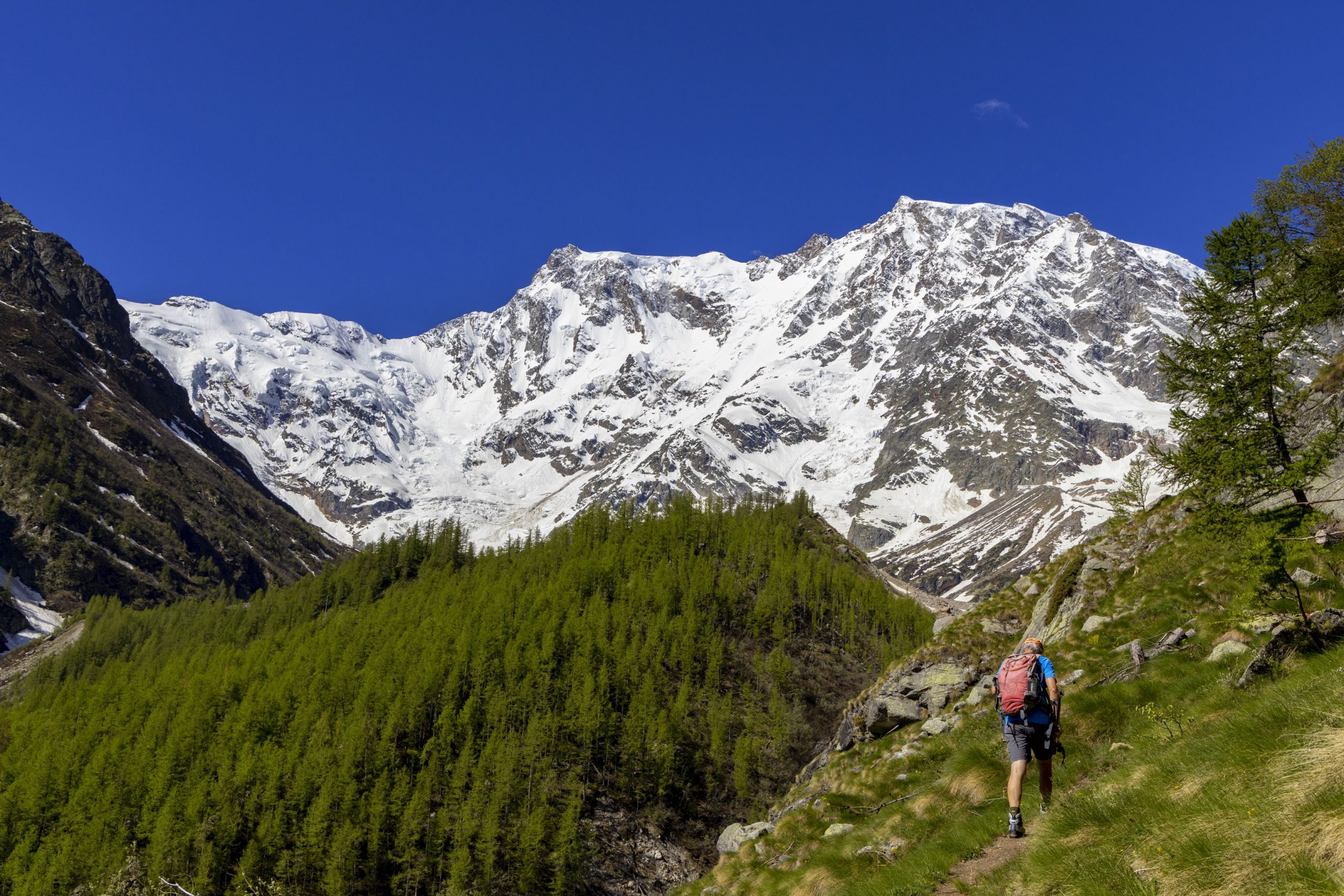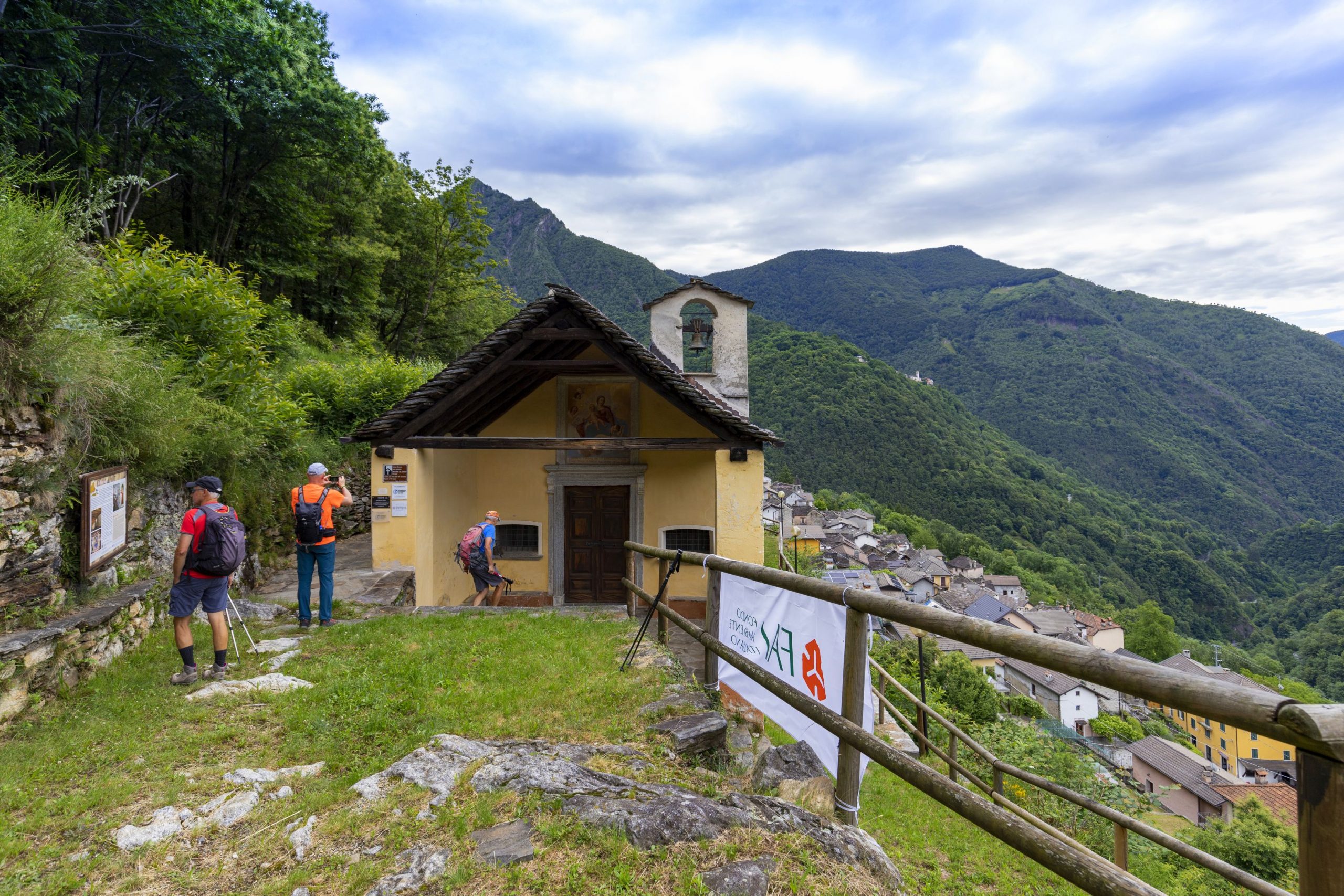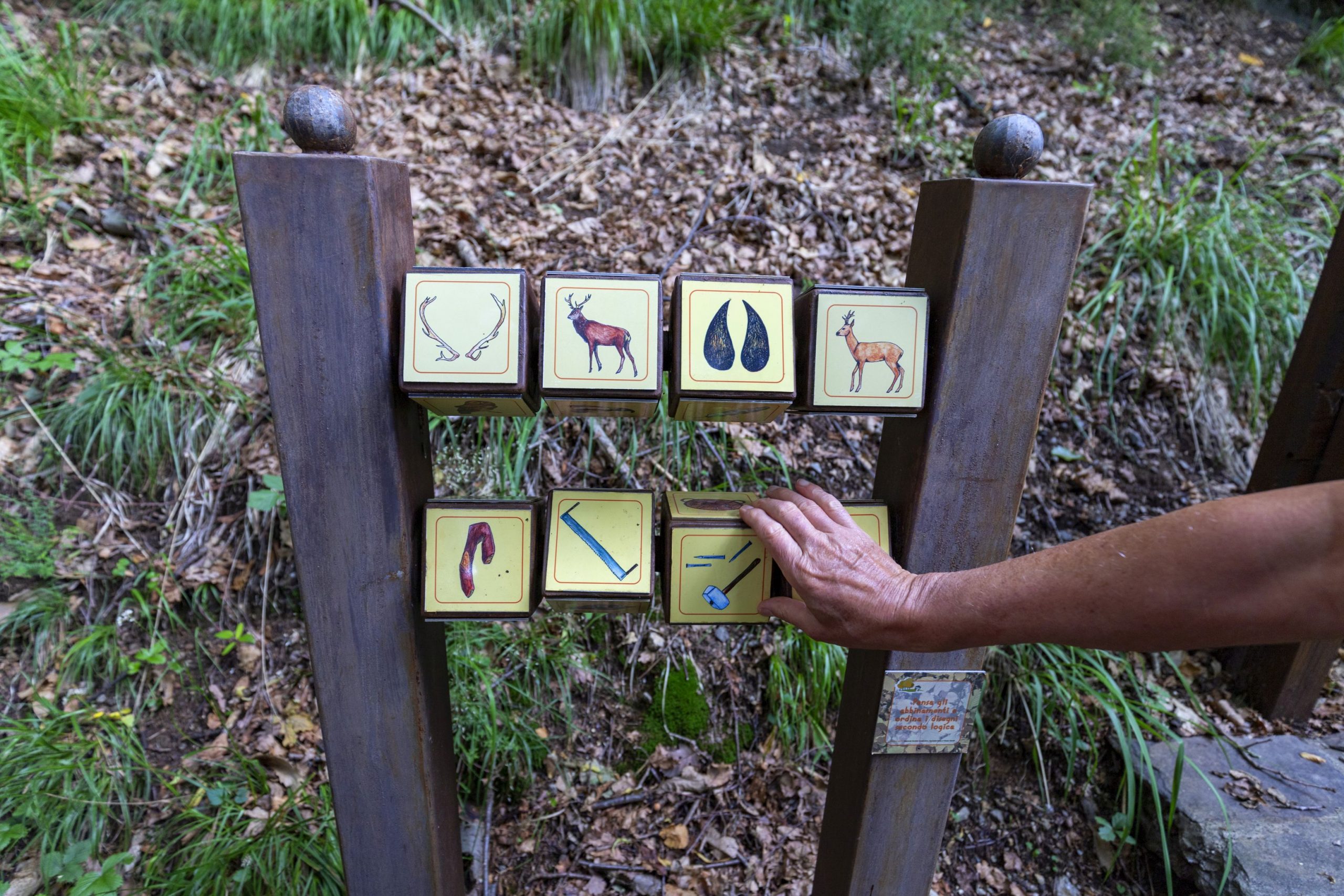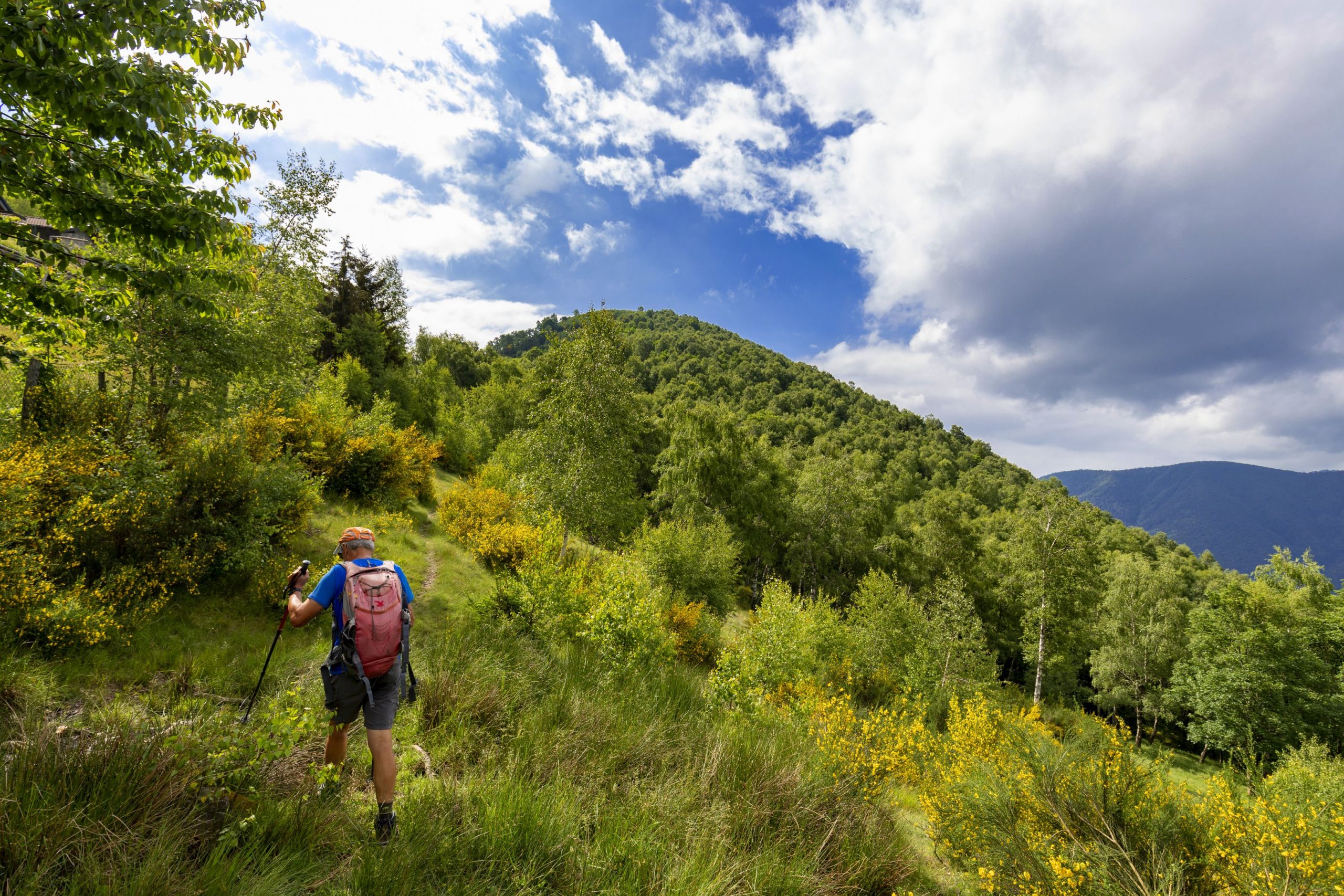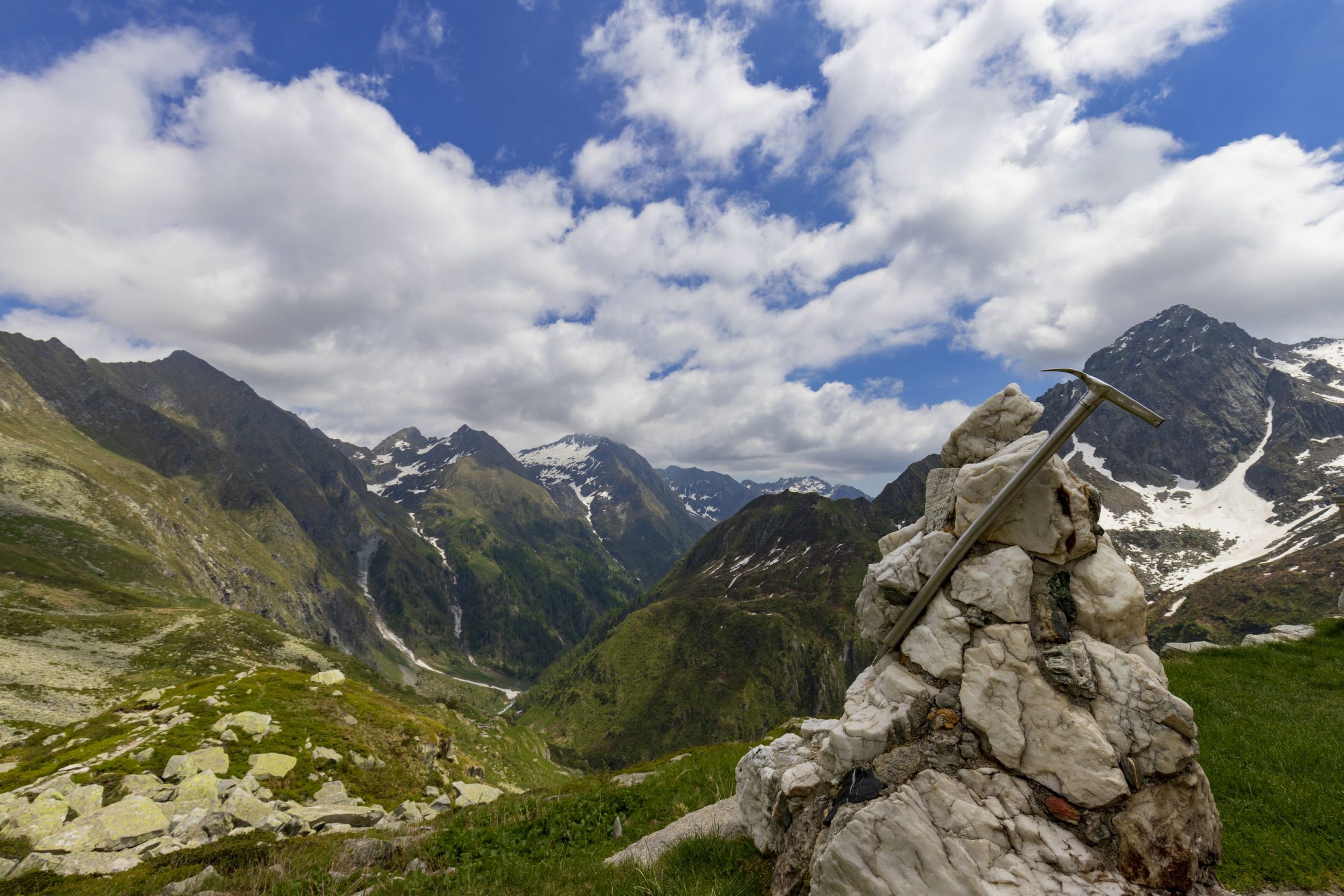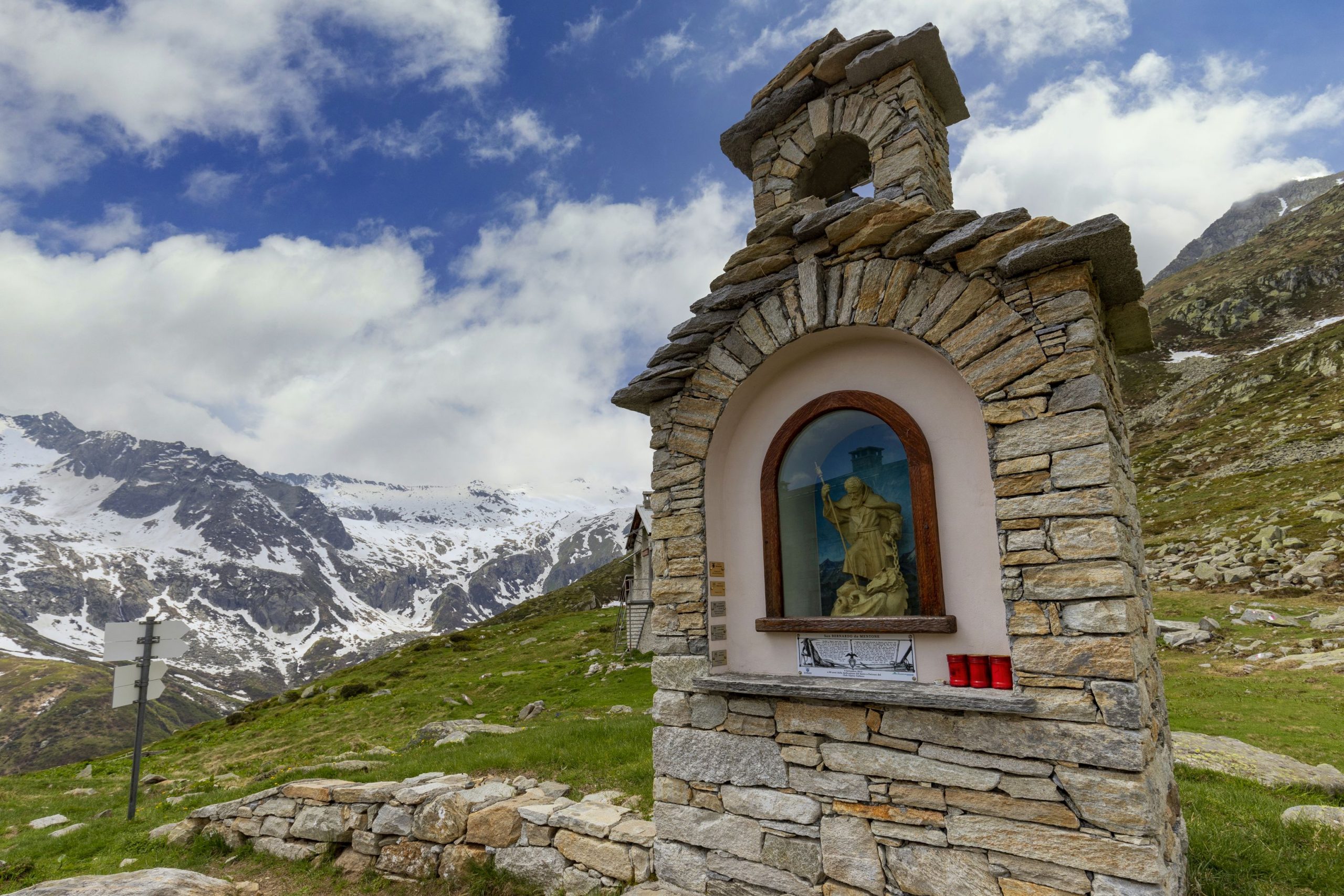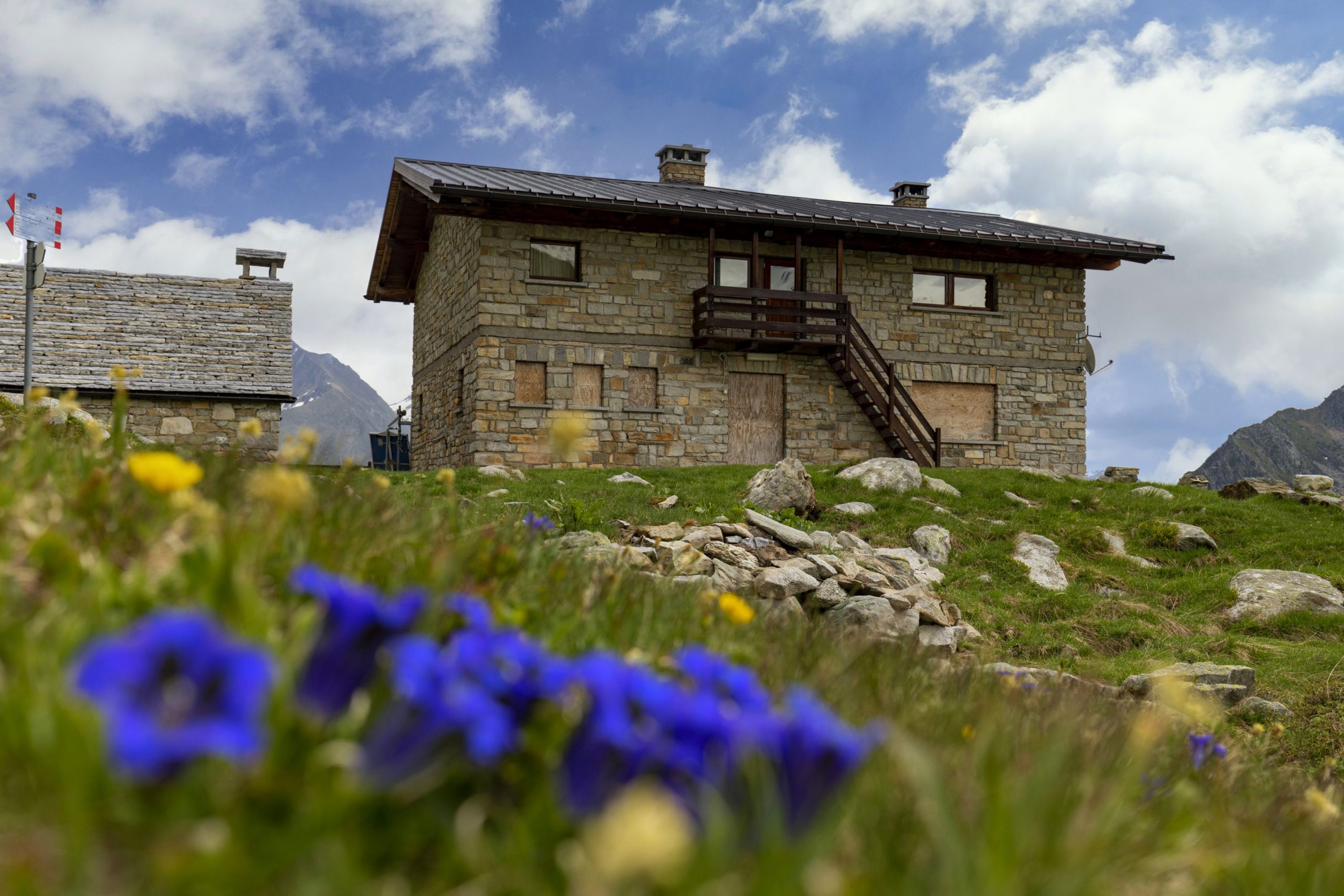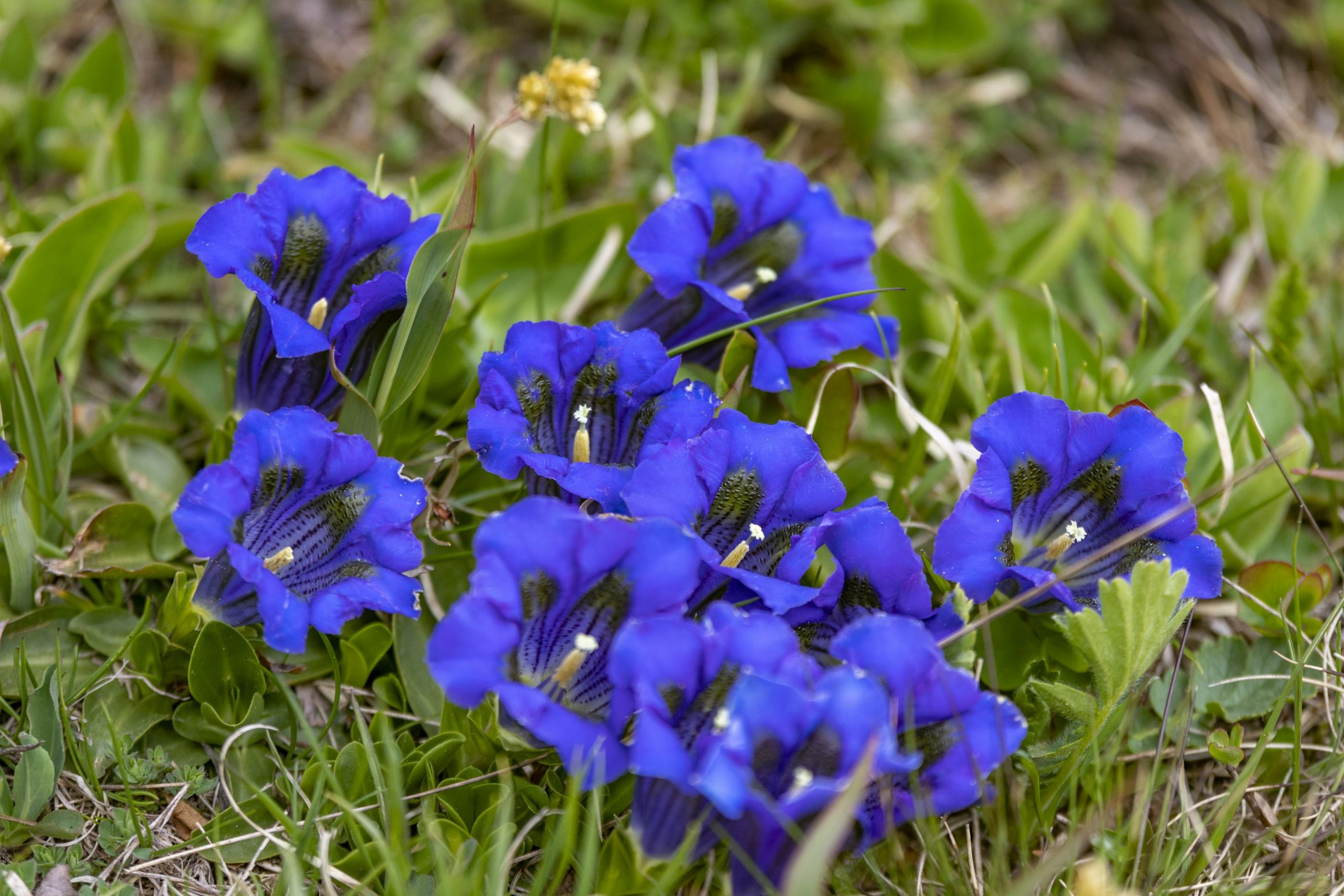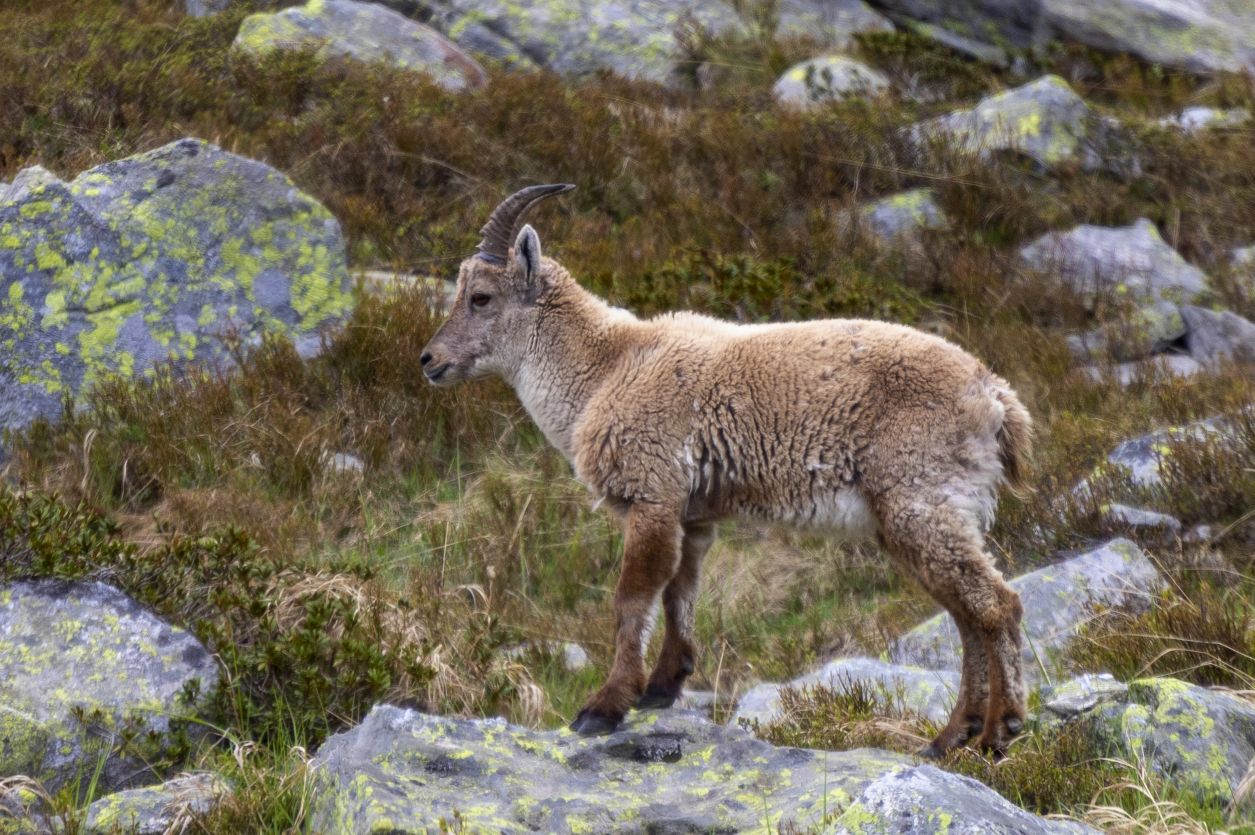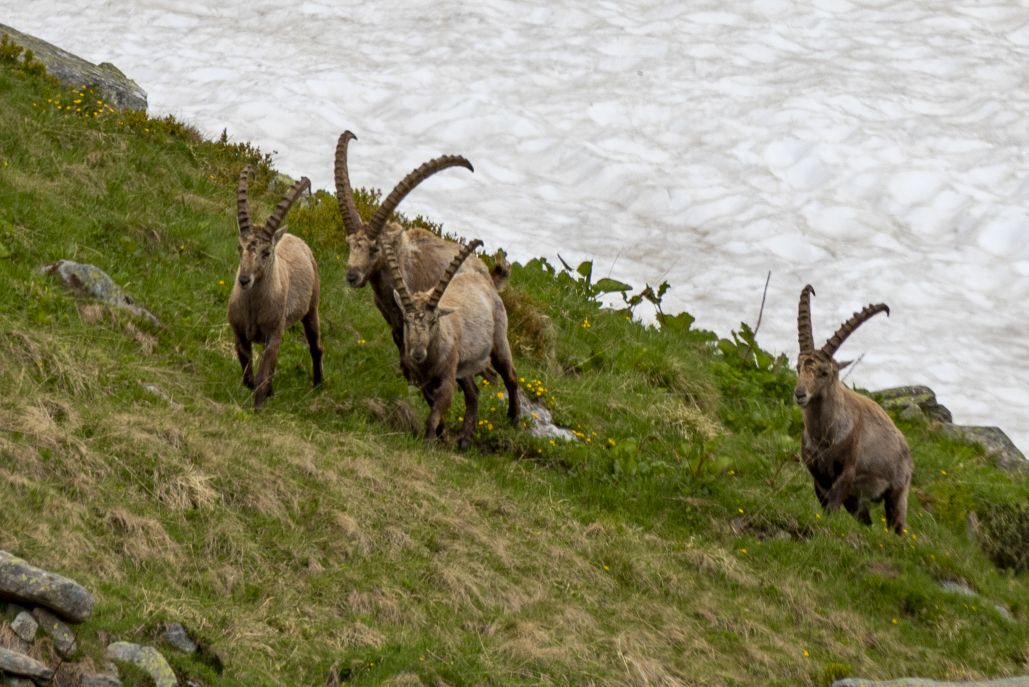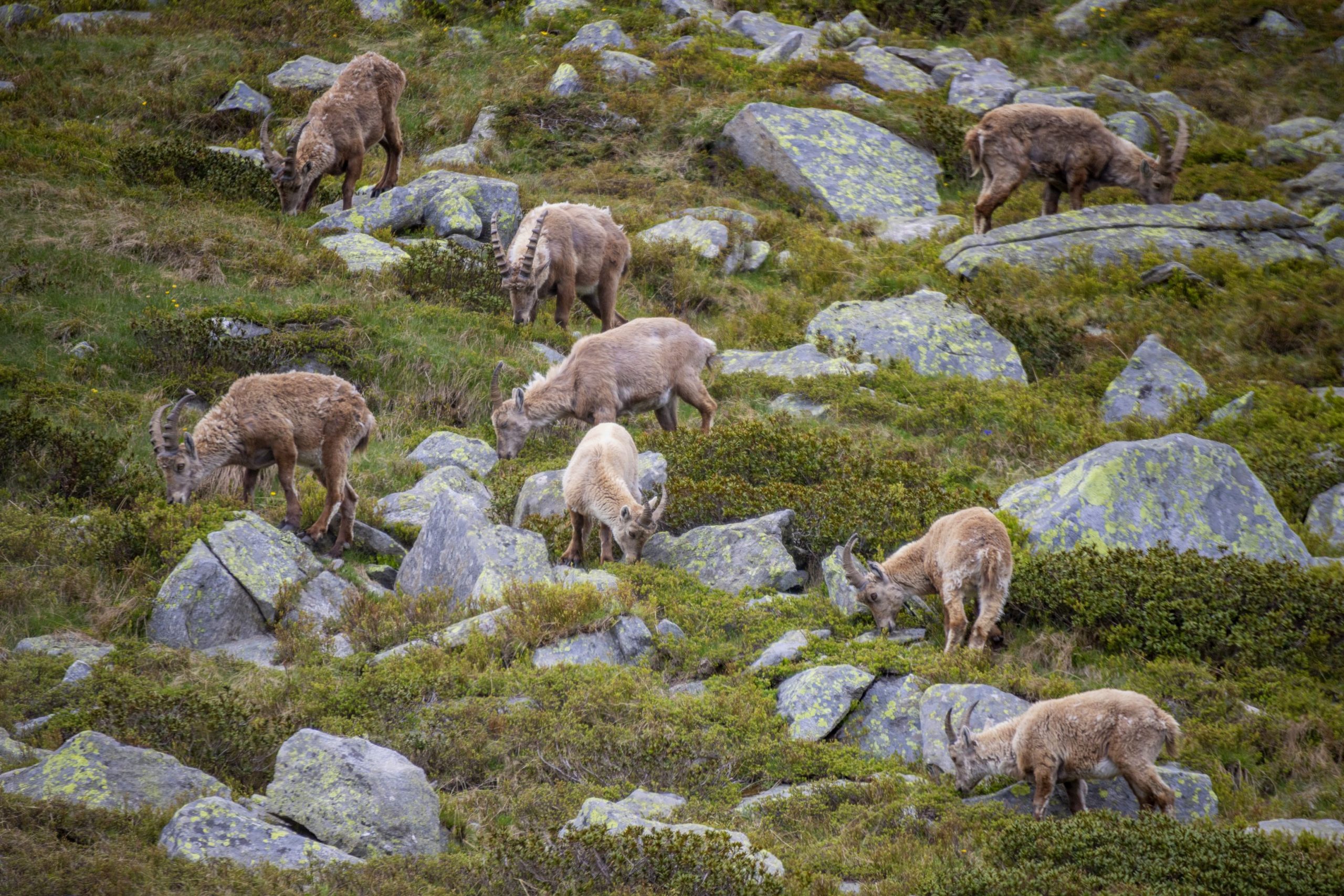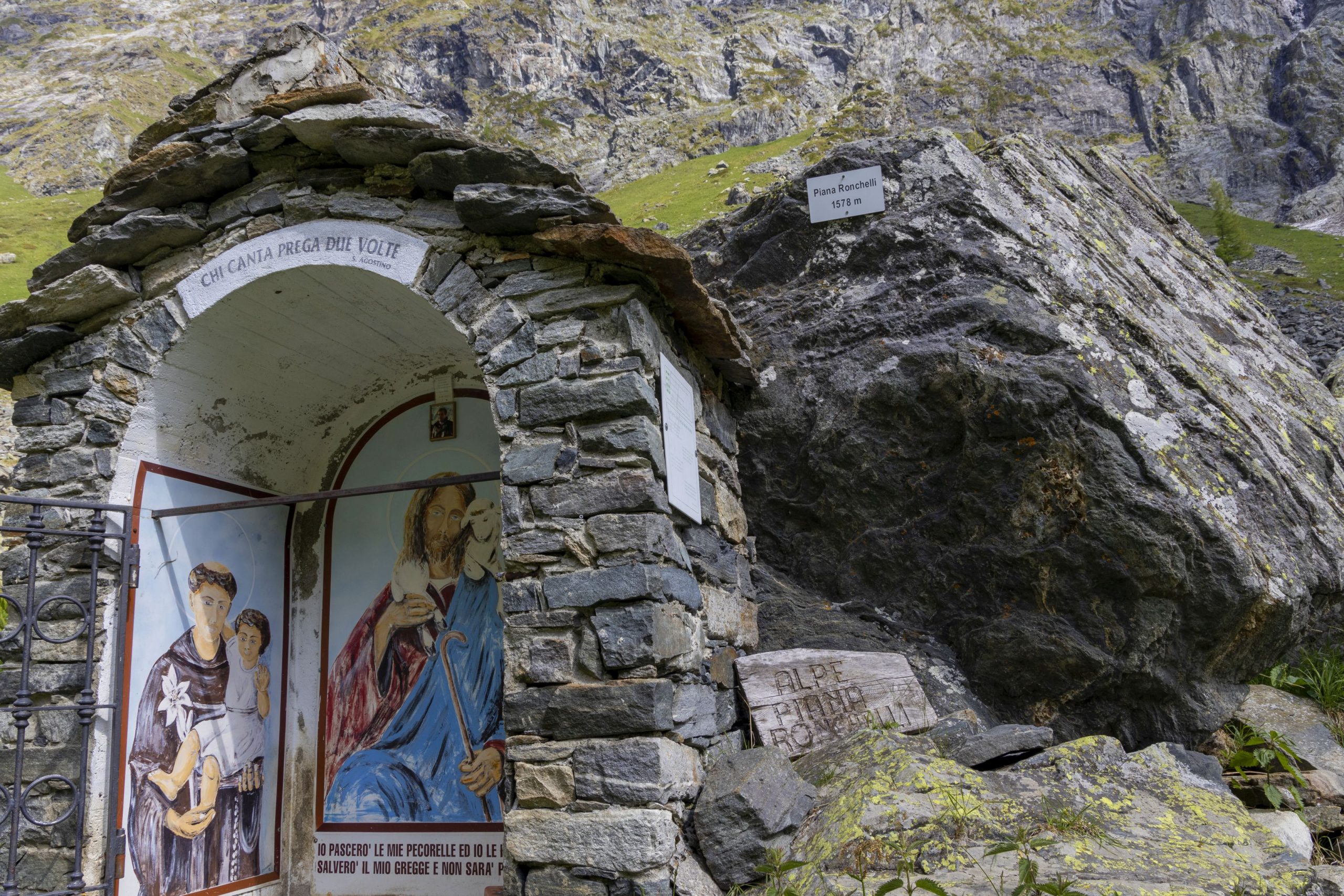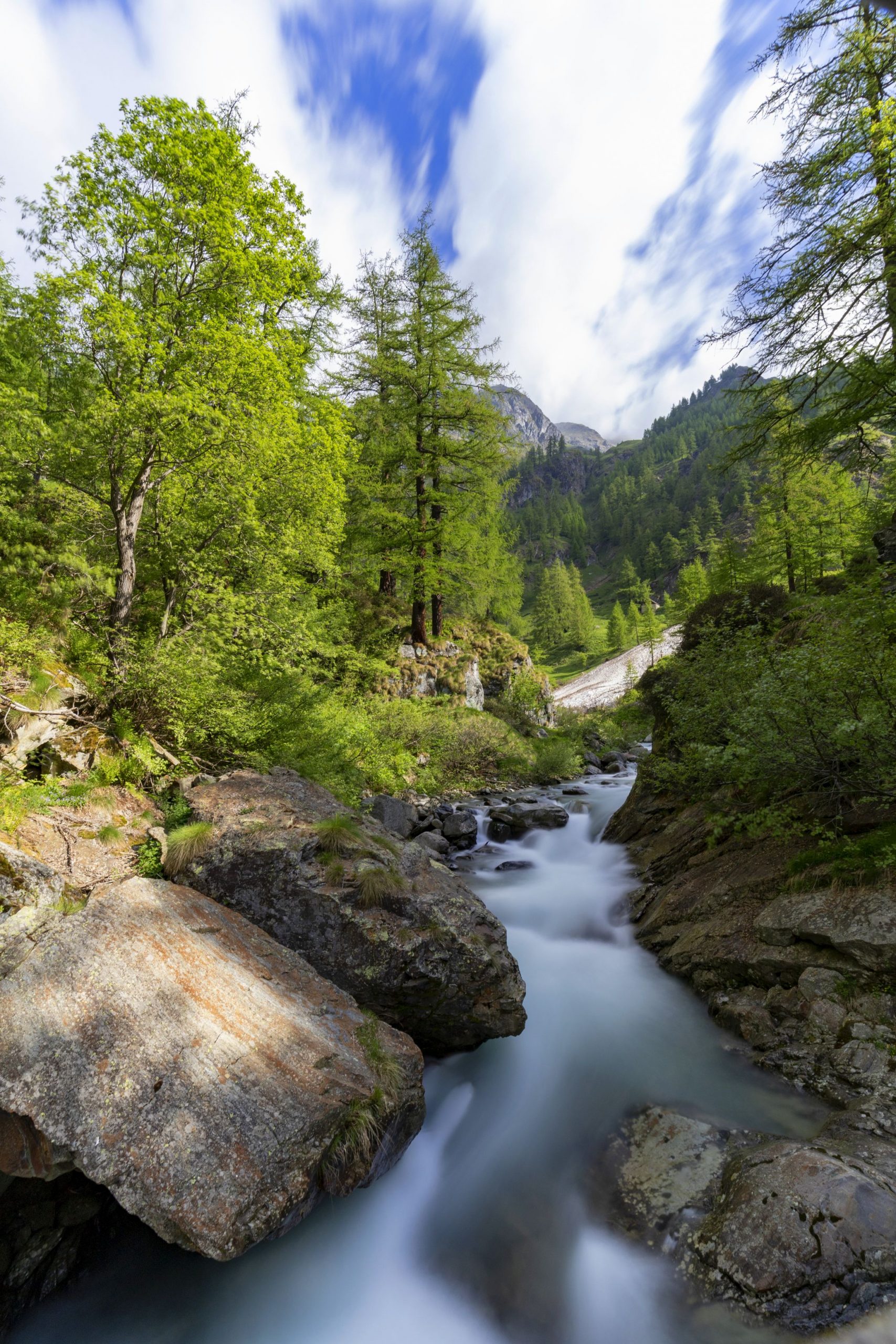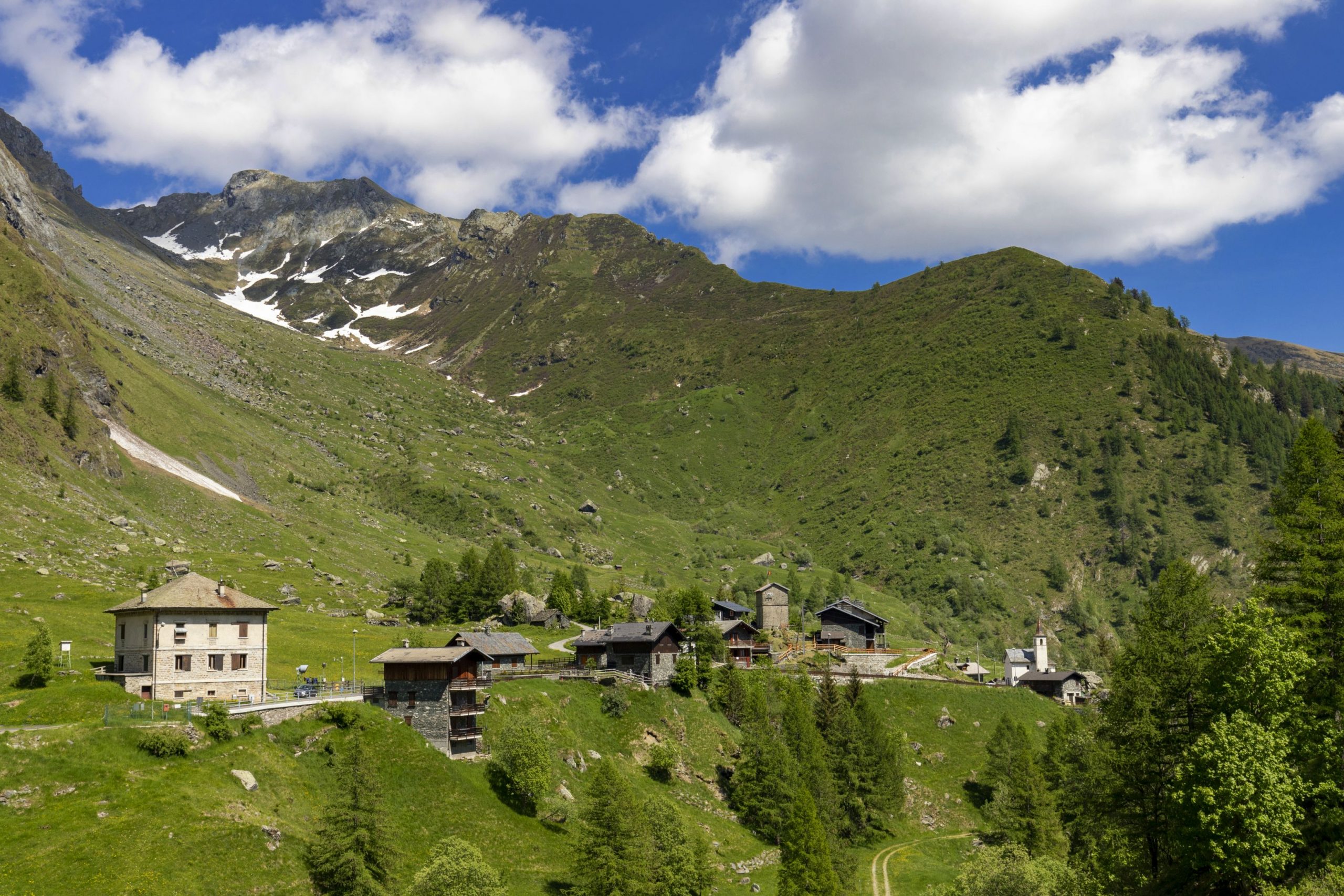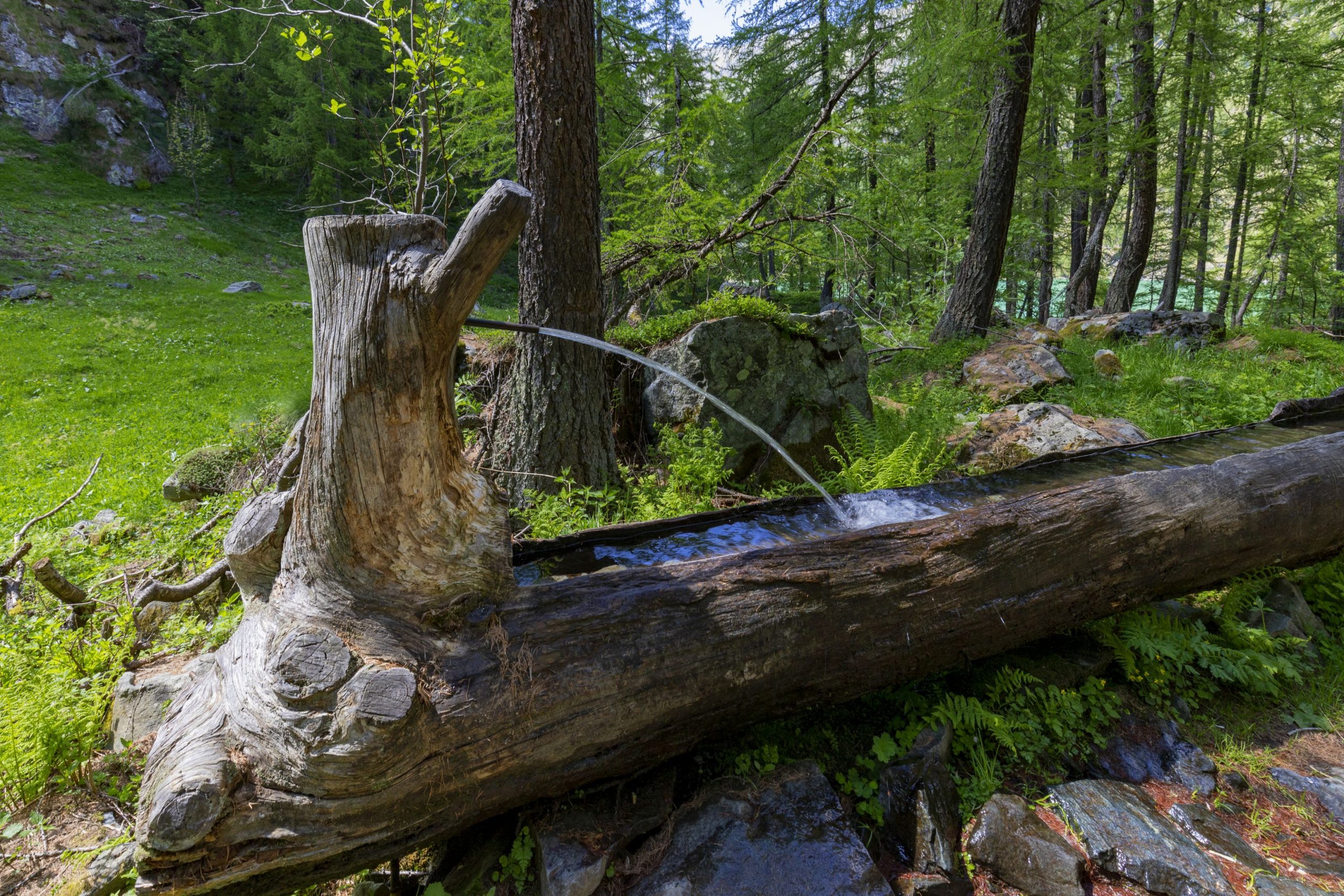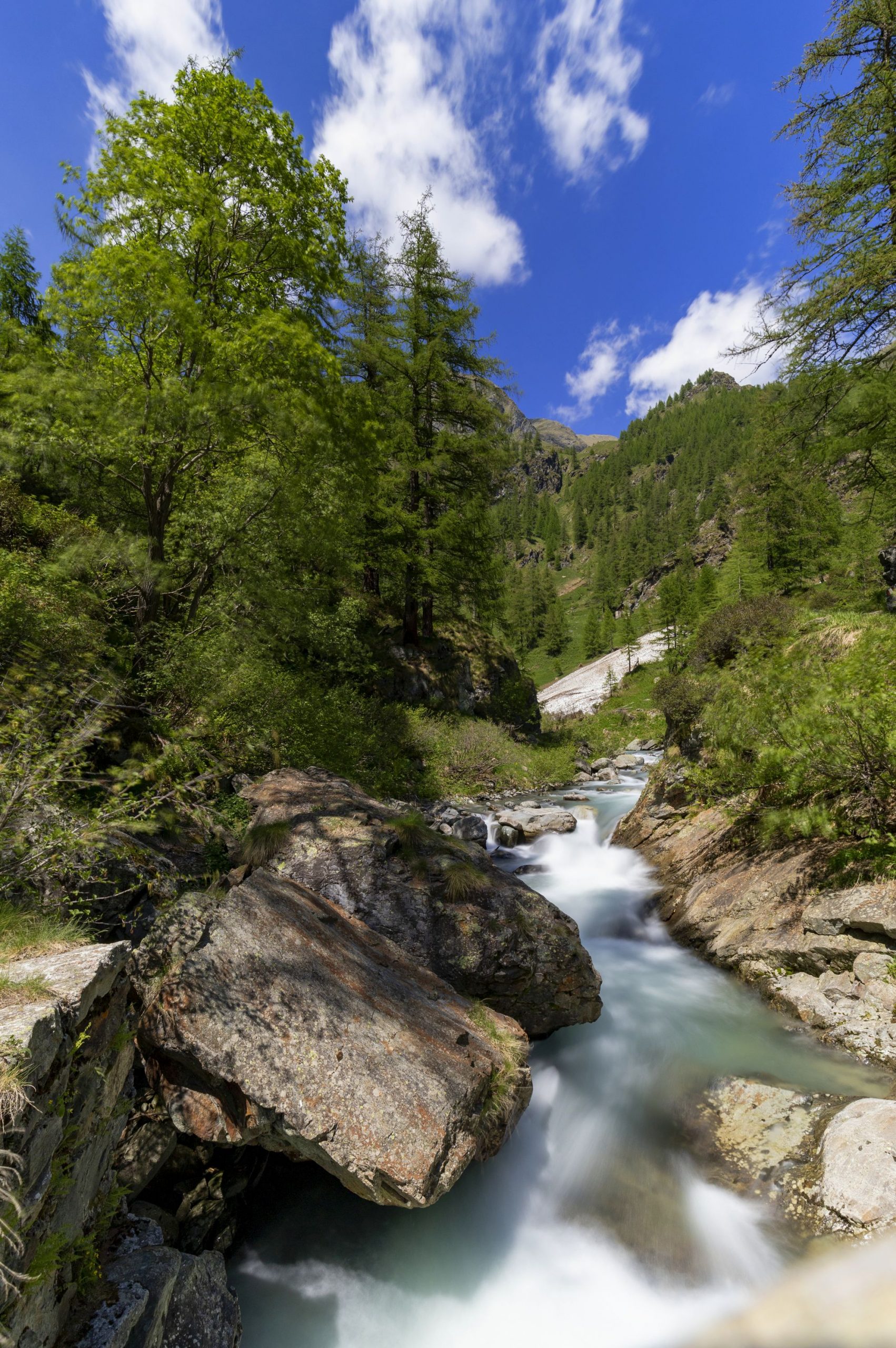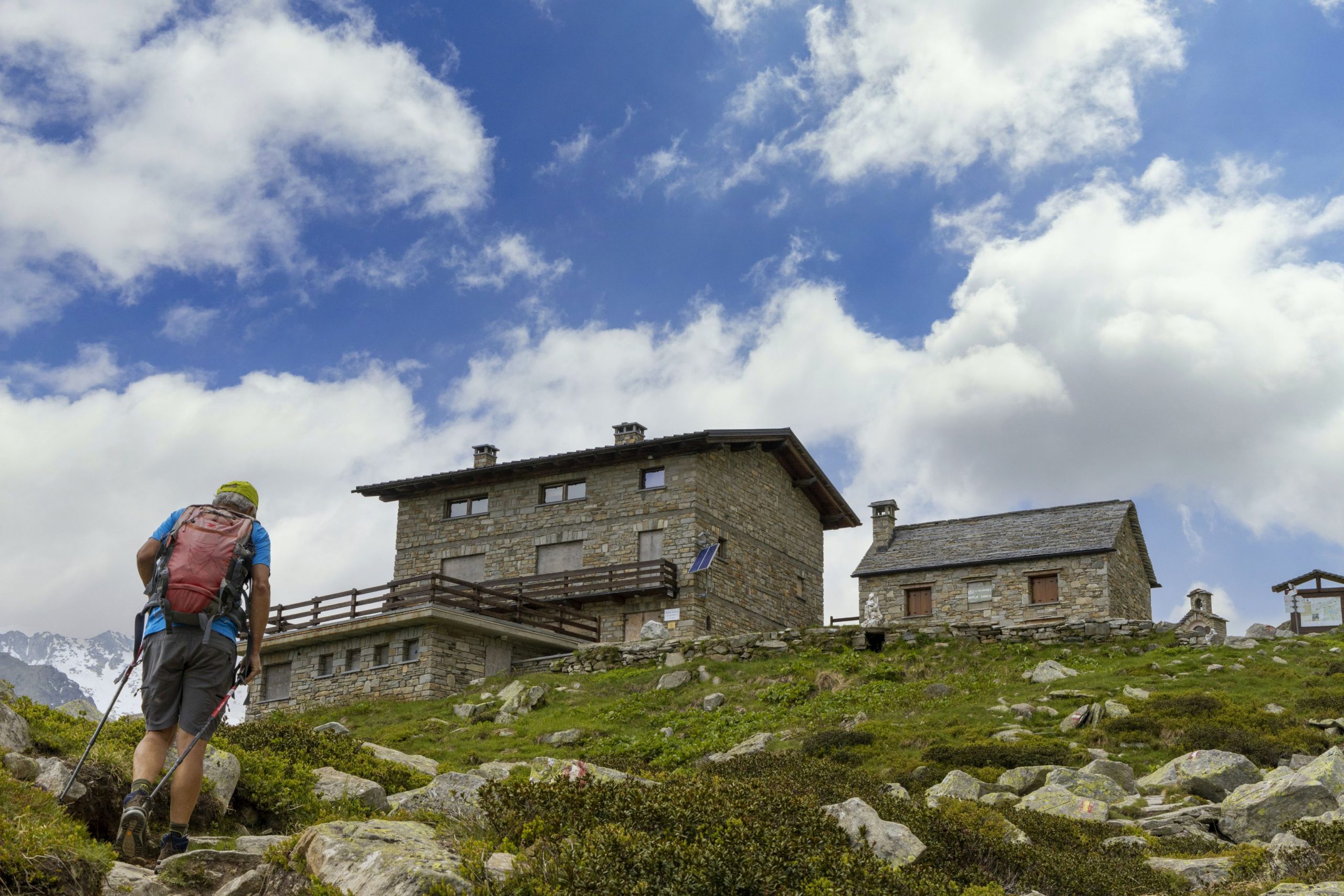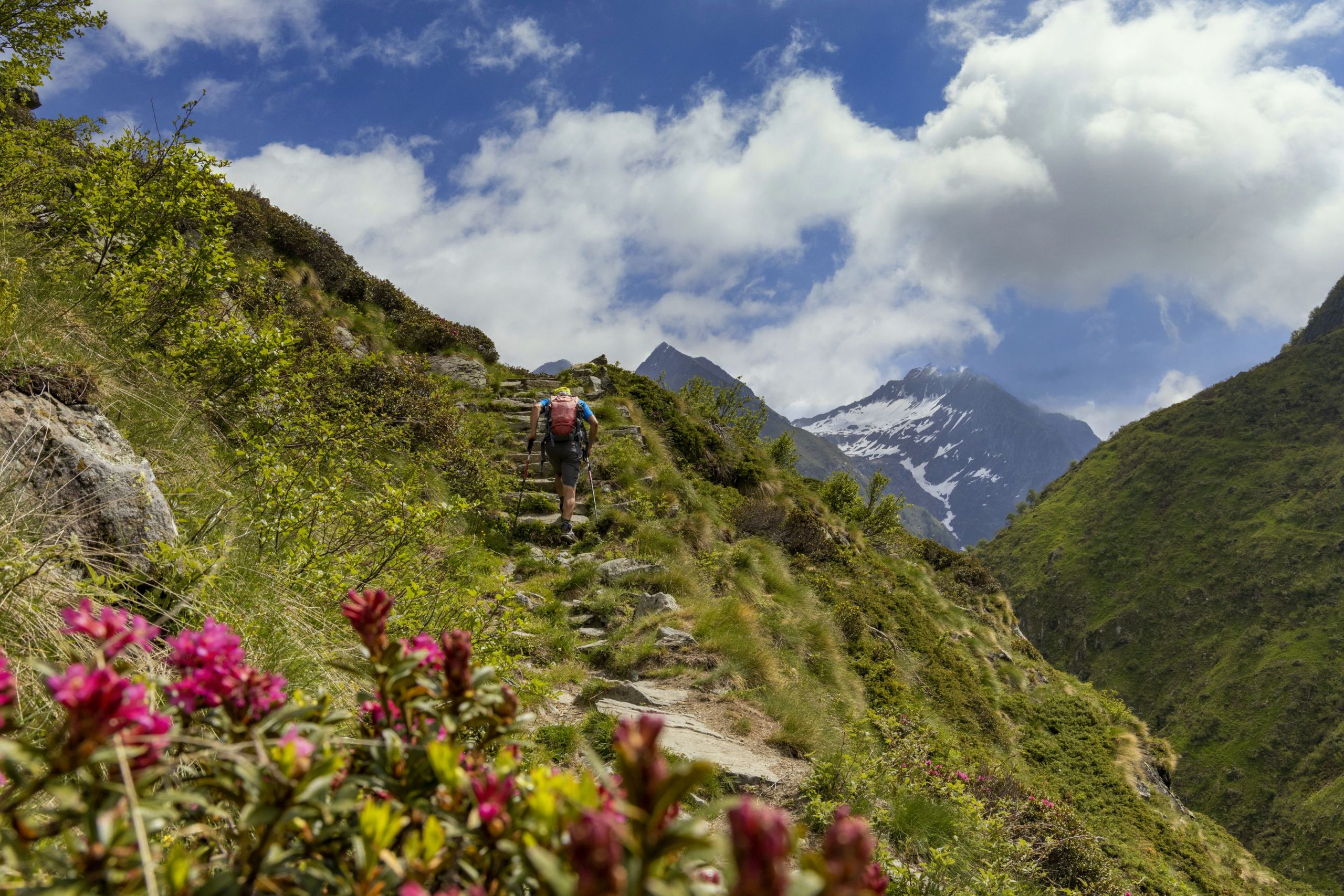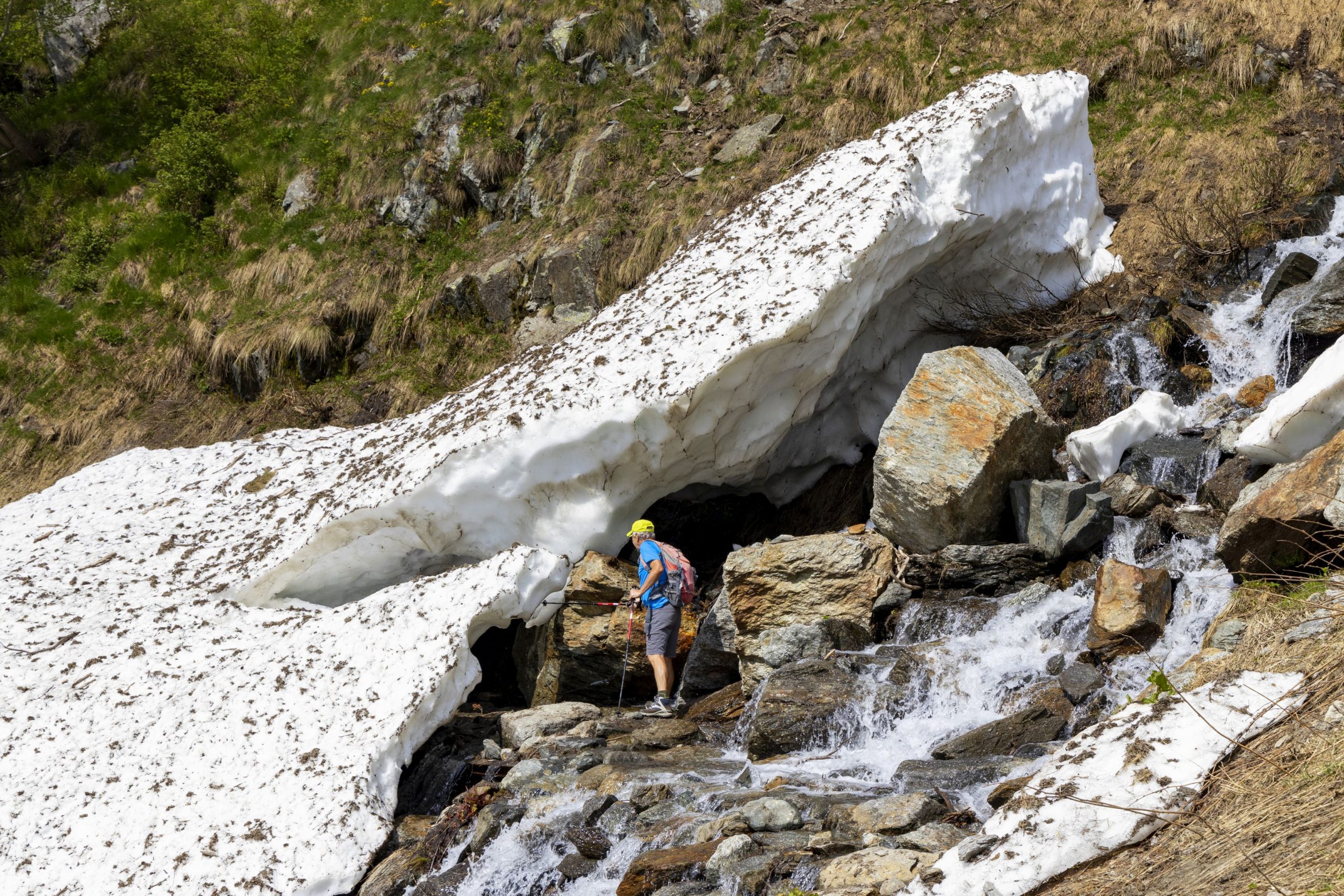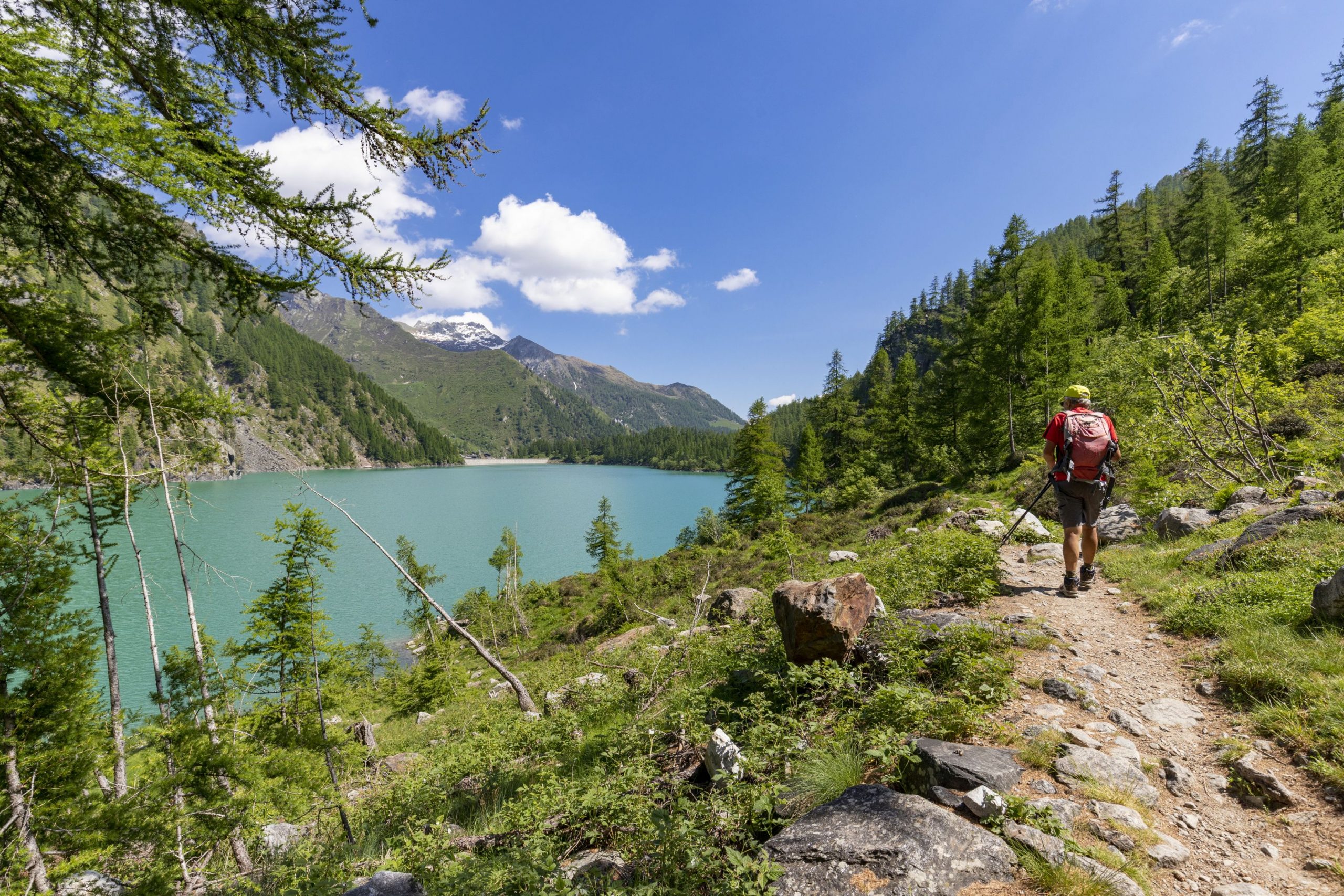From the Toce Waterfall Toce to S. Giacomo pass
HISTORIC MOUNTAIN ROADS
Valle Formazza
Route description
Built starting from 1929 to realise the dams of Lago Castel and Lago Toggia in Alta Val Formazza, in the extreme north of Piedmont, the road unites the famous Cascata del Toce to Passo San Giacomo, passing through the hamlet of Riale and connecting Italy with Ticino Switzerland. The first section of the route which starts from Cascata del Toce (1685 m asl) and arrives at the hamlet of Riale below, covers a long, asphateded section on State Road 659.
Shortly before reaching the hamlet of Riale (1740 m asl) the road branches off and the dirt road begins, which leads to the Maria Luisa mountain hut (2160 m asl), then continues to Lago Toggia and reaches Passo San Giacomo (2313 m asl). It is in this section that the route becomes a true masterpiece with gentle gradients and perfect hairpin bends, flanked by dry stone walls and arches from which unique photos can be taken of the Riale plain and the peaks of Alta Formazza.
Once this first uphill section is over, the road continues on a false plain crossing the Alpe Toggia basin, reaching the Maria Luisa mountain hut and along the dam of Lago Toggia. Continuing slightly uphill, the road leads to Passo San Giacomo from which there is a beautiful view over Val Bedretto (Switzerland).
As early as 1885, there was already a small Swiss hut at Passo San Giacomo, which housed the telegraphists who transmitted the situation of the Alta Val Formazza to the Fort of Airolo (Switzerland). Following the construction of the road for the Italian side of Passo San Giacomo, new fortifications were built in the 1930s in Val Bedretto which became the heart of the defence system of this pass: the artillery fort “Grandinagia” and the armoured fortress “San Giacomo”; machine gun stations and artillery camps, shelters and cableways for logistics and supply of the main forts.
Today, the road is passable on foot and by mountain bike, and in winter with snowshoes and alpine skis (always check the avalanche bulletin).
Points of interest
The symbol of Val Formazza is the Cascata del Toce, which is known as “the most beautiful and majestic of all Alpine waterfalls” thanks to a drop of 143 m. A visit to the village of Formazza is well worth it for its hamlets with the characteristic name of Titsch (local Walser language) in which to soak up the Walser atmosphere. Numerous routes depart from Cascata del Toce and from Riale for trekking and MTB enthusiasts. There is also the natural and tourist attraction of Premia Terme, which is a modern spa centre with internal/external pools with hot water and wellness area (www.premiaterme.com).
Back to the list of routes
From Piancavallo to the Tunnels of Monte Morissolo
HISTORIC MOUNTAIN ROADS: LINEA CADORNA
Alto Verbano
Route description
The Cadorna Line is the defence system that was built near the Swiss border during World War I at the behest of General Luigi Cadorna, the then Chief of Staff of the Italian Army, who feared a German-Austrian invasion through neutral Switzerland.
The immense defence structure, built between the summer of 1915 and the spring of 1918, stretched from Ossola to Verbano and into Lombardy, becoming a dense network of military roads and mule tracks, trenches, artillery positions, lookout posts, camp hospitals and logistical facilities, barracks and outposts.
The work was carried out by local bricklayers and stonemasons and women also played a fundamental role in the construction of the defence line, particularly in transporting material and supplies to the work sites.
The Cadorna Line was never used for war purposes and today this military road is a historical heritage site that allows the community to learn about a historical moment of the 20th century.
It is also a natural heritage of trails for trekking and mountain-biking enthusiasts, offering routes that can be travelled almost all year round (be careful in the event of recent snowfall).
HIGHLIGHTS AND TOUR DETAILS
The section of the Cadorna Line between Piancavallo and Morissolo begins in Piancavallo (1247 m asl) in Alto Verbano, following the road to Colle. After passing the Auxological Hospital, you take the dirt road to the right, following the signs for the Monte Morissolo tunnels. After passing a barrier, the flat route begins on the wide military road that crosses a picturesque beech wood. As you exit the wood, you are struck by the breathtaking view of Upper Lake Maggiore. In just under half an hour on foot you reach the tunnels carved into the live rock and the cave posts of Monte Morissolo.
Trail suitable for people using motorised wheelchairs suitable for uneven terrain or manual but equipped wheelchairs. The use of wheelchair attachment with an accompanying person is recommended.
POINT OF INTERESTS
Scenic view of Upper Lake Maggiore.
Tunnels and cave posts.
Other trekking routes depart from here to Cima di Morissolo and Monte Morissolino.
A few kilometres away, it is possible to reach the Lake Maggiore Zipline, the 1850 m long steel cable which allows you to try the experience of an adrenaline-packed flight of 1 and a half minutes at over 120 km/hr (www.lagomaggiorezipline.it – possibility to rent e-bikes at Alpe Segletta – Aurano).
Fun is assured at Wonderwood Adventure Park and a breathtaking view from the Big Bench of the Lake at Monte Carza (Trarego Viggiona) www.wonderwood.it .
Back to the list of routes
From Colle to Pian Vada’
HISTORIC MOUNTAIN ROADS: LA LINEA CADORNA
Alto Verbano
Route description
The Cadorna Line is the defence system that was built near the Swiss border during World War I at the behest of General Luigi Cadorna, the then Chief of Staff of the Italian Army, who feared a German-Austrian invasion through neutral Switzerland.
The immense defence structure, built between the summer of 1915 and the spring of 1918, stretched from Ossola to Verbano and into Lombardy, becoming a dense network of military roads and mule tracks, trenches, artillery positions, lookout posts, camp hospitals and logistical facilities, barracks and outposts.
The work was carried out by local bricklayers and stonemasons and women also played a fundamental role in the construction of the defence line, particularly in transporting material and supplies to the work sites.
The Cadorna Line was never used for war purposes and today this military road is a historical heritage site that allows the community to learn about a historical moment of the 20th century.
It is also a natural heritage of trails for trekking and mountain-biking enthusiasts, offering routes that can be travelled almost all year round. Be careful in the event of recent snowfall.
Highlights and tour details
The section of the Cadorna Line between Colle – Monte Spalavera – Passo Folungo – Rifugio Pian Vada’ begins in Colle (1238 m asl), a hamlet of Oggebbio.
There is a convenient car park where you can leave your car and begin the first climb to Monte Spalavera (1534 m asl, an elevation gain of approximately 300 m and a route length of 2.7 km). The route follows a wide dirt road that then becomes an easy grassy path with no particular difficulties. The view ahead is truly spectacular, from the lakes to the peaks of the Val Grande National Park to the Monte Rosa group and the Swiss Alps. On reaching the summit cross, a panel shows the outline of the Alps with the names of their peaks, and here it is possible to admire well-preserved trenches.
Once back in Colle, take the Cadorna Line, now following the signs for Passo Folungo. Strada Cadorna is a dirt road and stretches for about 13 km. Along the way, you can admire the construction of a hospital camp and reach Passo Folungo (1369 m asl), where Strada Cadorna begins to climb with hairpin bends up to Rifugio Pian Vada’ (1711 m asl, approx. 6 km – elevation gain approx. 340 m).
From here, there is a wonderful view of Lake Maggiore, Valle Intrasca, the peaks of the Val Grande National Park and those of Ossola.
POSSIBLE RISKS: The road is without protection in certain sections. Always pay attention in case of recent snowfalls.
Points of interest
Scenic view of Upper Lake Maggiore and the Peaks of the Val grande National Park and the Peaks of the Ossola Valleys. Trenches and military constructions.
Possibility to visit the fortifications at Monte Bavarione (1505 m asl) and Monte Carza (1116 m asl).
Along the Strada Cadorna, between colle and Passo Folungo, you pass by Pian d’Ada, the departure point of the Lake Maggiore Zipline, the 1850 m long steel cable which allows you to try the experience of an adrenaline-packed flight of 1 and a half minutes at over 120 km/hr (www.lagomaggiorezipline.it – possibility to rent e-bikes at Alpe Segletta – Aurano).
A few kilometres away, at Monte Carza, an easy path leads you to the Big Bench of the Lake, with a breathtaking view over Alto Verbano and the Wonderwood Adventure Park (Trarego Viggiona) www.wonderwood.it.
Back to the list of routes
From Pra’ Michelaccio to Cima Montorfano
HISTORIC MOUNTAIN ROADS: LINEA CADORNA, MERGOZZO
Lago Maggiore
Route description
The Cadorna Line is the defence system that was built near the Swiss border during World War I at the behest of General Luigi Cadorna, the then Chief of Staff of the Italian Army, who feared a German-Austrian invasion through neutral Switzerland.
The immense defence structure, built between the summer of 1915 and the spring of 1918, stretched from Ossola to Verbano and into Lombardy, becoming a dense network of military roads and mule tracks, trenches, artillery positions, lookout posts, camp hospitals and logistical facilities, barracks and outposts.
The work was carried out by local bricklayers and stonemasons and women also played a fundamental role in the construction of the defence line, particularly in transporting material and supplies to the work sites.
The Cadorna Line was never used for war purposes and today this military road is a historical heritage site that allows the community to learn about a historical moment of the 20th century.
It is also a natural heritage of trails for trekking and mountain-biking enthusiasts, offering routes that can be travelled almost all year round (be careful in the event of recent snowfall).
Highlights and tour details
Because of its isolated position, Mont’Orfano or Montorfano was considered an important strategic place from which to dominate the entire surrounding area, from Lake Maggiore to Lake Orta to Bassa Ossola.
Various military constructions were built on the slopes of the mount that are still visible and can be reached thanks to Strada Cadorna, a 4 km long and 4 metre wide dirt road.
The route along this section of the Cadorna Line begins in Mergozzo, in the hamlet of Pra’ Michelaccio (204 m asl), following the signs for the military fortifications.
The military road, asphalted only in the first short section, becomes a beautiful dirt road that climbs steadily for 4 km, with beautiful stone hairpin bends leading to the first “Casermetta” (small barracks). Continuing with a succession of beautiful military artefacts (retaining walls and water channels), the road reaches the second Casermetta and the “Polveriera” (magazine). The panoramic view from up here is truly stunning.
From the Polveriera you can continue as far as Cima del Montorfano (794 m asl – about 2 km). The dirt road becomes a mule track that later becomes a grassy path and in about 45 minutes reaches other military works (shelters and barracks), whose construction involved the use of local natural resources including granite extracted from the nearby Cava Verde quarry at the foot of Montorfano.
Points of interest
Panoramic views over Lake Maggiore, Lake Orta, Mergozzo and Bassa Ossola.
Remarkably beautiful military artefacts.
Suitable for the whole family is the Sentiero Azzurro, a beautiful paved path that connects the village of Mergozzo to one of Montorfano, from which there is a panoramic view over Lake Mergozzo and Lake Maggiore.
For adrenaline seekers, along the Strada Cadorna is the access to the Via Ferrata Montorfano, a route with Tibetan bridges and exposed passages (Difficult level; a route to be followed only with suitable equipment).
(https://www.comune.mergozzo.vb.it/it-it/vivere-il-comune/cosa-vedere/fer… )
From Pra’ Michelaccio, along the banks of the River Toce, the homonymous Ciclovia del Toce (Toce Cycle Route) passes, which from Alta Val Formazza continues to Lake Maggiore.
For lovers of local history, the Montorfano Granite Ecomuseum and the Archaeological Civic Museum with a display of artefacts from Prehistoric to Medieval times can also be visited in the village of Mergozzo. www.ecomuseogranitomontorfano.it
(Progetto è promosso dalla legge regionale 19 maggio 2021 n. 9, “Interventi per la valorizzazione delle strade storiche di montagna di interesse turistico” che riconosce e valorizza le strade storiche di montagna di interesse turistico al fine di favorire lo sviluppo del turismo all’aria aperta)
Back to the list of routes
Da Pra’ Michelaccio alla Cima Montorfano
VIE STORICHE DI MONTAGNA: LA LINEA CADORNA
Lago Maggiore
Route description
La Linea Cadorna è il sistema difensivo che venne costruito vicino alla frontiera svizzera durante la Prima Guerra Mondiale per volere del Generale Luigi Cadorna, l’allora Capo di Stato Maggiore dell’Esercito, il quale temeva un’invasione austro-tedesca, attraverso la neutrale Svizzera.
L’immensa struttura difensiva, costruita tra l’estate del 1915 e la primavera del 1918, si estendeva dall’Ossola al Verbano fino alla Lombardia, divenendo un fitto reticolo di strade e mulattiere militari, trincee, postazioni d’artiglieria, luoghi di avvistamento, ospedaletti e strutture logistiche, casermette e punti di avvistamento.
I lavori furono eseguiti da muratori e scalpellini locali ed anche le donne ebbero un ruolo fondamentale nella realizzazione della linea difensiva, in particolare nel trasporto di materiale e rifornimento nei cantieri.
La Linea Cadorna non venne mai utilizzata per scopi bellici ed oggigiorno questa strada militare è un patrimonio storico che permette alla comunità di conoscere un momento di storia del Novecento.
E’ però anche un patrimonio naturalistico di sentieri per gli amanti di trekking e della mountain-bike offrendo percorsi percorribili quasi tutto l’anno (prestare attenzione in caso di recenti nevicate).
DESCRIZIONE DEL PERCORSO
Il Mont’Orfano o Montorfano, grazie alla sua posizione isolata, venne considerato un importante luogo strategico da cui dominare a 360° il territorio circostante, dal Lago Maggiore al Lago d’Orta alla Bassa Ossola.
Alle pendici del monte vennero realizzate varie costruzioni militari ancora visibili e raggiungibili grazie alla strada Cadorna, un percorso sterrato camionabile lungo 4 km e largo ben 4 metri.
Il percorso in questo tratto di Linea Cadorna inizia a Mergozzo, nella Loc. Pra’ Michelaccio (204 m slm), seguendo le indicazioni per le fortificazioni militari.
La strada militare, asfaltata solo nel primo breve tratto, diventa una bella sterrata che sale per 4 km con pendenza costante e con bei tornanti in pietra che conducono alla prima Casermetta. Proseguendo con un susseguirsi di manufatti militari di notevole bellezza (muri di contenimento e canali idraulici), la strada giunge alla seconda Caserma e alla Polveriera. La vista panoramica che si ha da quassù è davvero suggestiva.
Dalla Polveriera si può proseguire fino alla Cima del Montorfano (794 m slm – circa 2 km). La sterrata lascia posto ad una mulattiera che poi diventa sentiero erboso ed in circa 45 minuti raggiunge altre opere militari (ricoveri e baraccamenti), la cui edificazione ha visto l’impiego di risorse naturali locali tra cui il granito estratto dalla vicina Cava Verde, ai piedi del Montorfano.
Attenzione: La strada in alcuni punti è priva di protezioni. Prestare attenzione in caso di recenti nevicate.
PUNTI D’INTERESSE
Vista panoramica sul Lago Maggiore, Lago d’Orta, di Mergozzo e Bassa Ossola.
Manufatti militari di notevole bellezza.
Adatto a tutta la famiglia è il Sentiero Azzurro, un bellissimo percorso lastricato che collega il paese di Mergozzo all’abitato di Montorfano, da cui si ha una vista panoramica su Lago di Mergozzo e Lago Maggiore.
Per chi cerca adrenalina, lungo la Strada Cadorna, si incontra invece l’accesso alla Via Ferrata Montorfano, percorso con ponti tibetani e passaggi esposti (livello Difficile; via da percorrere solo muniti di idonea attrezzatura).
(https://www.comune.mergozzo.vb.it/it-it/vivere-il-comune/cosa-vedere/fer… )
Da Pra’ Michelaccio, lungo le rive del fiume Toce, passa l’omonima Ciclovia del Toce che proveniente dall’Alta Val Formazza, prosegue sino al Lago Maggiore. https://lagomaggiorexperience.it/percorso/ciclovia-del-toce-in-bici-tra-…
Per gli amanti di storia locale, a Mergozzo paese, si possono inoltre visitate l’Ecomuseo del Granito di Montorfano e il Museo Civico Archeologico con l’esposizione di reperti dalla Preistoria all’Età Medievale. www.ecomuseogranitomontorfano.it
(Progetto è promosso dalla legge regionale 19 maggio 2021 n. 9, “Interventi per la valorizzazione delle strade storiche di montagna di interesse turistico” che riconosce e valorizza le strade storiche di montagna di interesse turistico al fine di favorire lo sviluppo del turismo all’aria aperta)
Back to the list of routes
From Punta di Migiandone to Forte di Bara
HISTORIC MOUNTAIN ROADS: LINEA CADORNA
Piana del Toce
Route description
The Cadorna Line is the defence system that was built near the Swiss border during World War I at the behest of General Luigi Cadorna, the then Chief of Staff of the Italian Army, who feared a German-Austrian invasion through neutral Switzerland.
The immense defence structure, built between the summer of 1915 and the spring of 1918, stretched from Ossola to Verbano and into Lombardy, becoming a dense network of military roads and mule tracks, trenches, artillery positions, lookout posts, camp hospitals and logistical facilities, barracks and outposts.
The work was carried out by local bricklayers and stonemasons and women also played a fundamental role in the construction of the defence line, particularly in transporting material and supplies to the work sites.
The Cadorna Line was never used for war purposes and today this military road is a historical heritage site that allows the community to learn about a historical moment of the 20th century.
It is also a natural heritage of trails for trekking and mountain-biking enthusiasts, offering routes that can be travelled almost all year round (be careful in the event of recent snowfall).
HIGHLIGHTS AND TOUR DETAILS
The route along this section of the Cadorna Line begins in Ornavasso in Bassa Ossola at the car park of Punta di Migiandone (210 m asl), where the well-preserved mule track winds its way with regularly sloping hairpin bends and stone walls towards Forte di Bara. You will encounter tunnels carved into the rock, trenches, walkways and machine gun emplacements along the route (it is useful to have a torch with you).
This mountain ridge was the ideal place to control the passage between Bassa Ossola and Lakes Maggiore and Mergozzo, at the narrowest point of the plain of the River Toce, known precisely as the “Stretta di Bara”.
Arriving at Forte di Bara (410 m asl), the multi-level fortified emplacement can be admired, consisting of several embankments supported by square stone walls that were intended to house barracks and long-range cannons to protect the Ornavasso and Migiandone trench system. Cannons and mortars make this visit even more evocative.
A plaque commemorates the Battle of Ornavasso that was fought in October 1944 by the Italian Alpine soldiers and Partisans of the ‘Valtoce’ formation against the Germans to defend the Ossola Partisan Republic.
Risks: There is no protection in some parts of the road.
POINT OF INTEREST
Panoramic views of Lake Maggiore and Mergozzo, the peaks of Bassa Ossola and the Corni di Nibbio.
Still well-preserved and remarkably beautiful military artefacts.
From Punta di Migiandone you can rejoin the Ciclovia del Toce (Toce Cycle Route), which, coming from Alta Val Formazza, continues to Lake Maggiore, skirting the famous watercourse.
For lovers of local history, you can also visit the Enrico Bianchetti Archaeological Section of the Museo del Paesaggio (Landscape Museum) in Ornavasso village, with a large display of artefacts from the 8th century BC to the 4th century AD.
https://www.museodelpaesaggio.it/collezioni/archeologia/
and the Museo Partigiano (Partisan Museum) www.museopartigiano.it
From Forte di Bara, you can continue along the dirt road on flat ground to the Old Marble Quarry.
The Sanctuary of the Madonna del Boden and the Sanctuary of the Madonna della Guardia are also worth visiting.
(The project is promoted by Regional Law No. 9 of 19 May 2021, “Interventions for the valorisation of historic mountain roads of tourist interest”, which recognises and valorises historic mountain roads of tourist interest in order to promote the development of open-air tourism)
Back to the list of routes
INTRA – CANNERO RIVERA – SAN BARTOLOMEO
LAKE MAGGIORE: VIA DELLE GENTI
Lago Maggiore
Route description
The “Via delle Genti” from Verbania Intra to the Swiss border was the ancient connecting road between the villages of Verbano and Switzerland.
The Via continued into Switzerland along the villages of Lake Maggiore up to Locarno and then to the Magadino Plain, where it joined the road that climbed up to the San Gottardo Pass.
The stretch from Verbania to the State Border can be traveled in two pleasant stages all year round, except when snowfall is forecast.
It is an itinerary that takes place halfway up the mountainside, always with a beautiful view of Lake Maggiore, and that allows passing through small villages and the Sacro Monte di Ghiffa Reserve, a UNESCO World Heritage Site, finally reaching the beautiful lakeside villages of Cannero and Cannobio.
Info and stops: https://www.piemonteoutdoor.it/it/attivita/escursionismo/delle-genti
Back to the list of routes
MULTIPLE-STOP ROUTES
VIA BORROMEA
Valle Cannobina
Route description
This ancient traffic route for people and goods hailing from Cannobina takes its name from St. Carlo Borromeo, who visited the Valley in 1574.
The Saint slept in Gurro, where the splendid “Casa S. Carlo” preserves this memory.
Along the mule-track, two shrines remind of the tale of the mule that carried Borromeo and that, in the stretch where the mule-track begins to descend into the Valley of Cavaglio from Traffiume, threw the illustrious pilgrim from the saddle. The Saint miraculously escaped the lethal fall into the abyss.
The trail connects the Sanctuary of Re in Val Vigezzo with the Sanctuary of the Madonna della Pietà in Cannobio. It allows discovering the most charming corners of the Cannobina valley.
Info and stops: https://www.piemonteoutdoor.it/it/attivita/escursionismo/borromea
Back to the list of routes
4-STOP ROUTE
STRA’ GRANDA
Valle Anzasca
Route description
In 1553 the Anzasca Valley was toured by Joachim de Annono, “homo da bene” and official representative of the Spanish Governor of Milan. He was a man of power who came to check on the Anzasca Valley’s dwellers’ payments of the exorbitant “Mensuale” tax. He stayed in the Valley for 14 days and, upon his return wrote an accurate and documented report.
In that report, he described the Strà Granda for the first time, explaining that from Piedimulera the road went up to Macugnaga and then again up the steep mountain ridge of Monte Moro to the Saas Valley.
The medieval road in the Anzasca Valley is at the center of his journey: “…I find that said Valley has little or almost no plain and is about sixteen miles long wedged between mountains of great height. In the middle of the Valley a great stream called the Anza flows, which originates from a glacier, permanent at the bottom of said Valley and said stream grows to form other streams that flow down here and there from said mountains and to enter said Valley one must climb a mountain for about a mile, then one finds the road to the right built within the mountains, about an arm and a half wide, and in that spot, it is rather high and steep …”
After 400 years, this route following on the footsteps of Joachim de Annono is still there and accessible today. The history of the Valley was written on the dirt road that marks its hairpin bends. It is not the Great History of humankind but that humble and hidden of muleteers who traveled to Switzerland or valley dwellers who journeyed down to the market of Vogogna to buy grain supplies. Each hairpin bend witnessed the furious village feuds and the passing of loads of gold traveling down to the towns.
Walking on the Strà Granda of Anzasca means journeying through time on a historical trail connecting the valleys. Above Piedimulera stand the oratory of San Giovanni Nepomuceno, patron saint who protected against drowning and floods (and curses!). In Mezzamulera, famous for hemp weaving artisans, unique niches in the wall bear witness to the mules’ loading in ancient times.
In Cà Turnal an anvil, tongs, and a hammer engraved on a stone slab show the Ferraria’s Ghibelline coat of arms, one of the factions whose feuds bloodied the Ossola area in the sixteenth century. In addition, it is possible to visit the ovens for the collective baking of bread a few times a year, the consortium’s presses to press the wine marc (a small masterpiece of rural engineering is located in Morlongo), and the mills and grindstones to press and obtain walnut oil. Hundreds were the finds of the peasant material culture scattered along the Strà Granda, which became a thematic route at discovering the Alps civilizations that populated these mountains.
At the beginning of the Valley, there is the imposing east wall of Monte Rosa: two thousand meters of rock and ice, the only Himalayan-sized wall in the Alps. An unusual valley that features two cultures (Walser and Romanza) and pristine nature in ancient harmony between humans and the environment.
Info and stops: https://www.piemonteoutdoor.it/it/attivita/escursionismo/stra-granda
Back to the list of routes
MULTIPLE-STOP ROUTE
THE SAN CARLO ROUTE
Valle Cannobina
Route description
The San Carlo loop route connects the villages of the Cannobina Valley. It takes its name from San Carlo Borromeo in memory of a pastoral visit that the Saint made to the Valley in 1574.
In Gurro, the ancient and charming “Casa San Carlo” is a reminder of where the Saint slept during his pastoral journey.
This itinerary is split into two stops: the first from Cannobio on Lake Maggiore to Falmenta, a small village in the Cannobina Valley.
The second is part of a half-loop itinerary that starts from Falmenta and reaches Cursolo (on the opposite bank of T. Cannobino). The route follows almost entirely beautiful, paved mule tracks. From Falmenta, a variant of the second stop allows from Gurro to reach Cursolo directly, shortening the path.
Info and stops: https://www.piemonteoutdoor.it/it/attivita/escursionismo/circuito-di-san-carlo
Back to the list of routes
A ROUTE THAT RUNS ACROSS THE ENTIRE ANTRONA VALLEY
VIA ANTRONESCA
Valle Antrona
Route description
The “Strada Antronesca” runs across the whole Antrona Valley, known among the Ossola valleys as the “iron valley” because of the many mines that in the nineteenth century gave life to the iron and steel center of Villadossola. Long caravans of mules and donkeys transported the iron to Villadossola, the main iron trade center. The quality of the Antrone metal was famous everywhere, and it was also exported to Switzerland.
Therefore, in ancient times, the “Strada antronesca” was used to go past from the Antrona Valley to reach the Saas Valley through the Antrona or Saas Pass (2883 m a.s.l.) and as such as one of the main connections between Ossola and Valais, joining Villadossola with Visp. This road never reached the importance of the Simplon road, protected by the governments of the State of Milan and Valais, and served by an important corporation of Someggiatori (mule caravans). The main issue was its maintenance since mountain roads are the most damaged by avalanches, mudslides, and landslides. The fact that in the sixteenth century, the annual cattle exhibition was brought to Villadossola instead of Macugnaga makes us assume that in the fifteenth and sixteenth centuries, this road was kept efficient.
This situation, characterized by the presence of multiple passes usable by commercial traffic, remained dynamic until the eighteenth century, when it changed due to the opening of the Napoleonic road, which, through the Simplon Pass, reached Geneva and then the heart of Europe. The importance of the Simplon already became evident in the seventeenth century at the time of the mule track in the Divedro Valley along which the salt trade was carried out by the Valais nobleman Kaspar Stockalper, “Le roi du Simplon”.
On October 6, 1996, the first stretch of the “Strada Antronesca”, restored by the CAI chapter of Villadossola was inaugurated, and the second stretch from Antrona to Saas Almagel was inaguarated on August 17, 1997 . Since 2010, this route has been included in the “Strategic” Interreg VETTA project. The “Strada Antronesca” gave life to the new era of “Cultural Hiking”.
Info and stops: https://www.piemonteoutdoor.it/it/attivita/escursionismo/antronesca
Back to the list of routes
